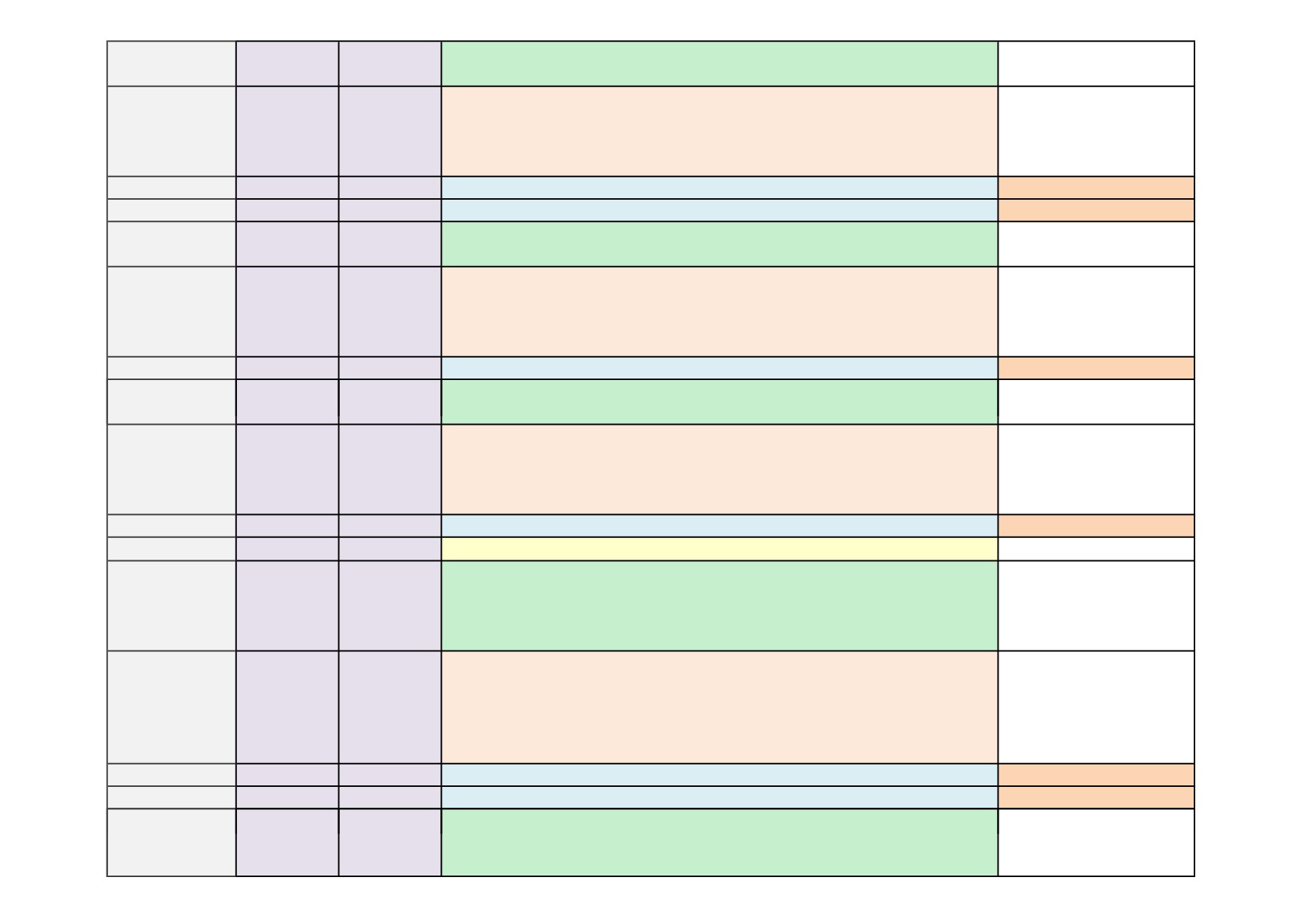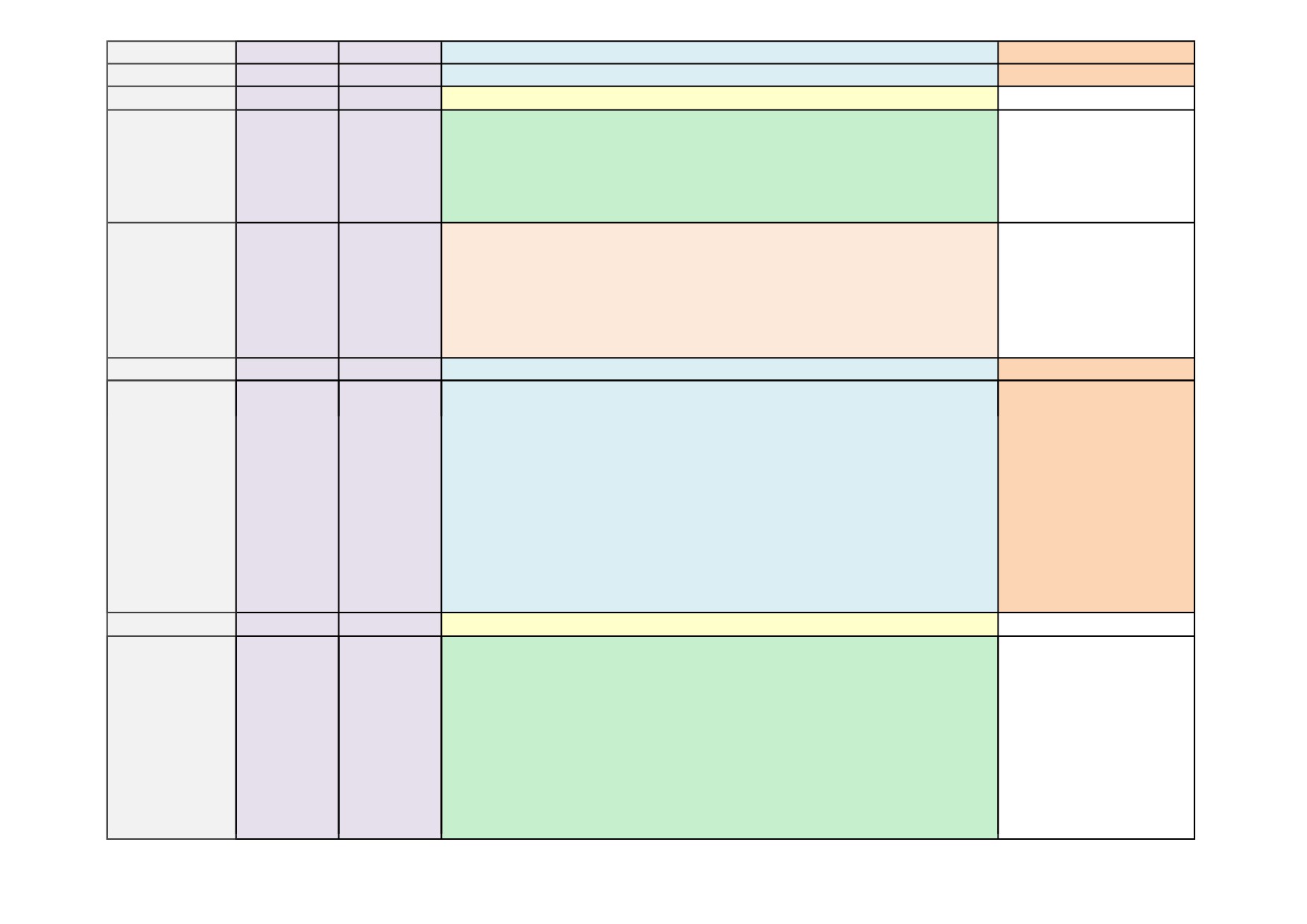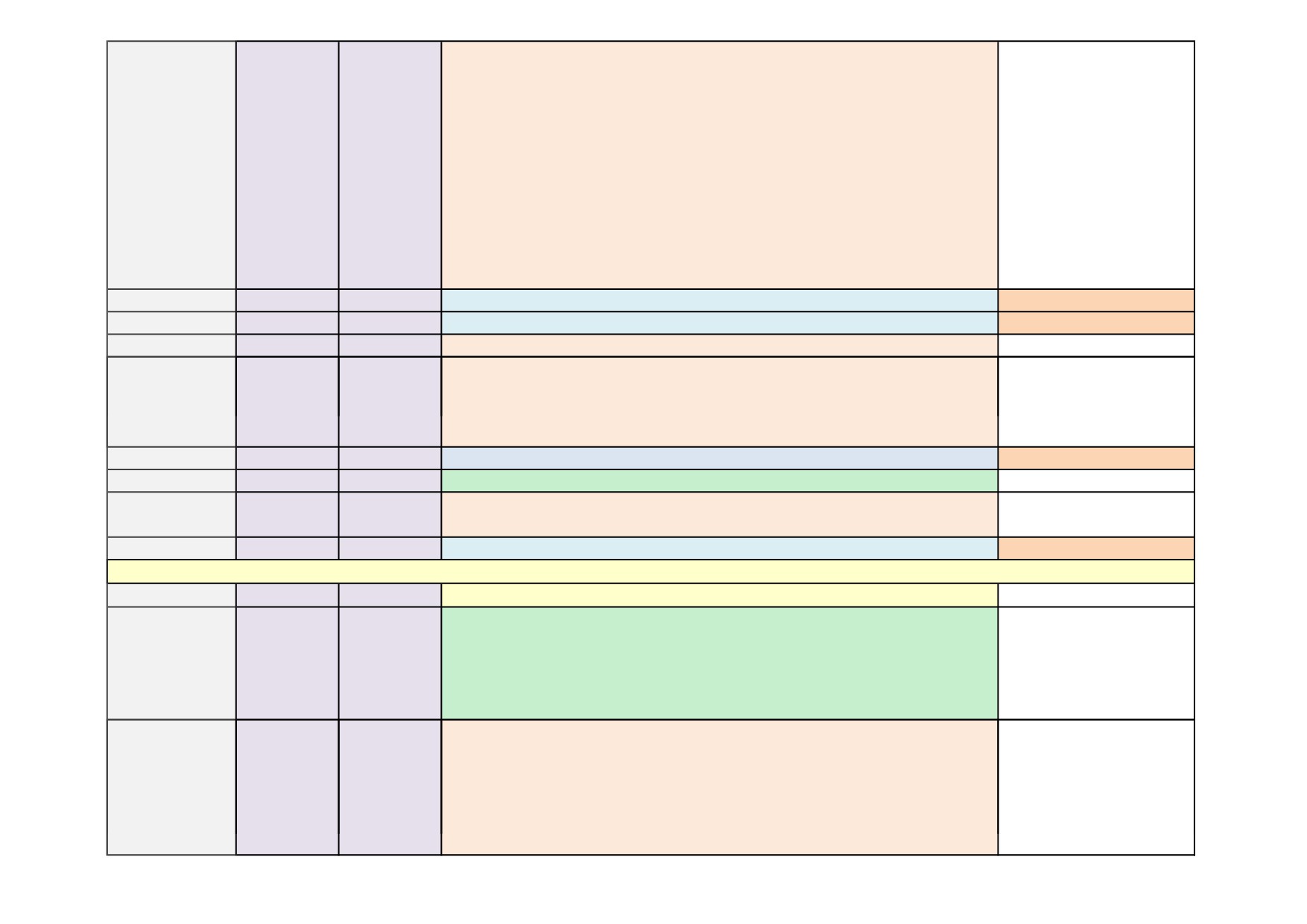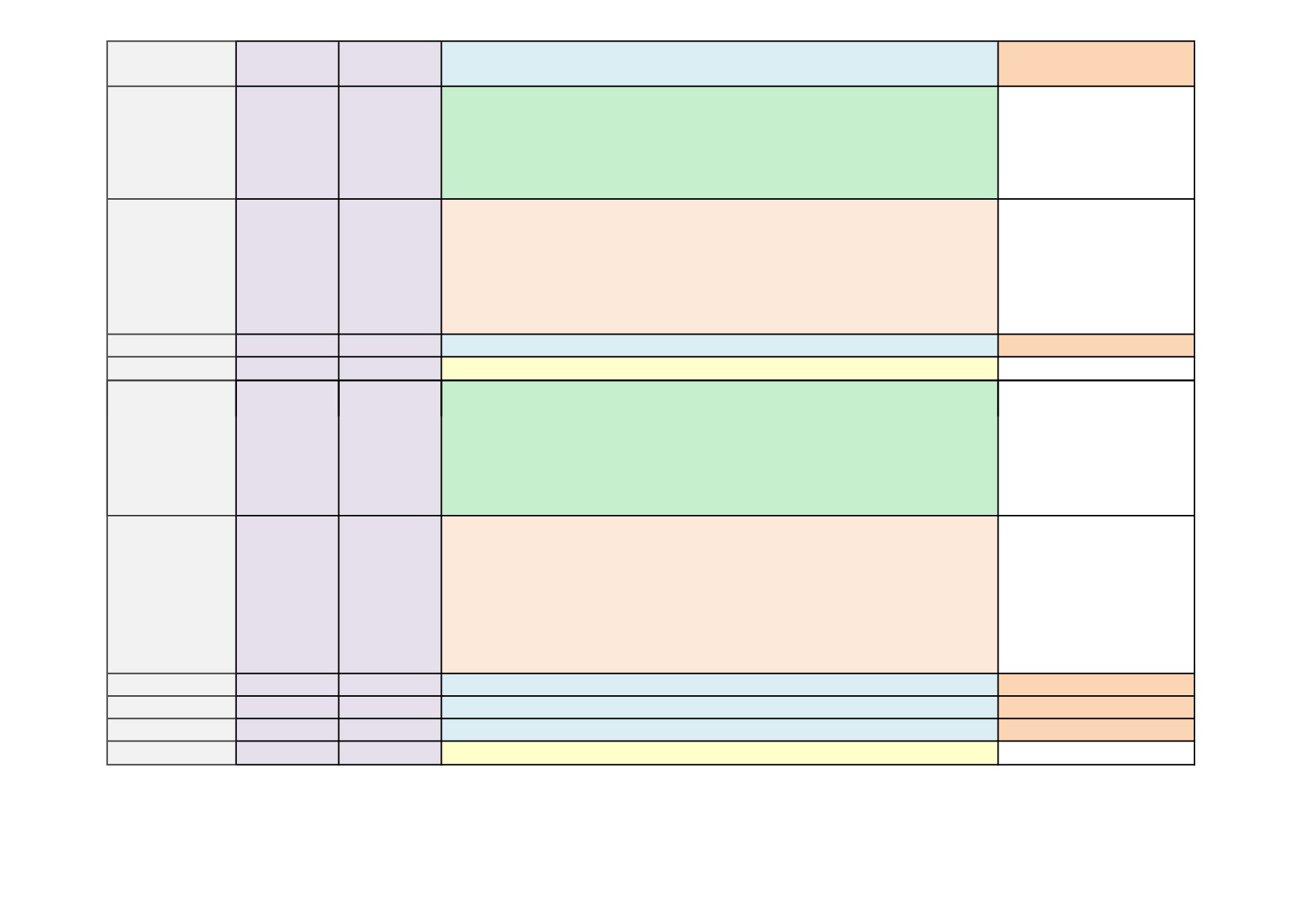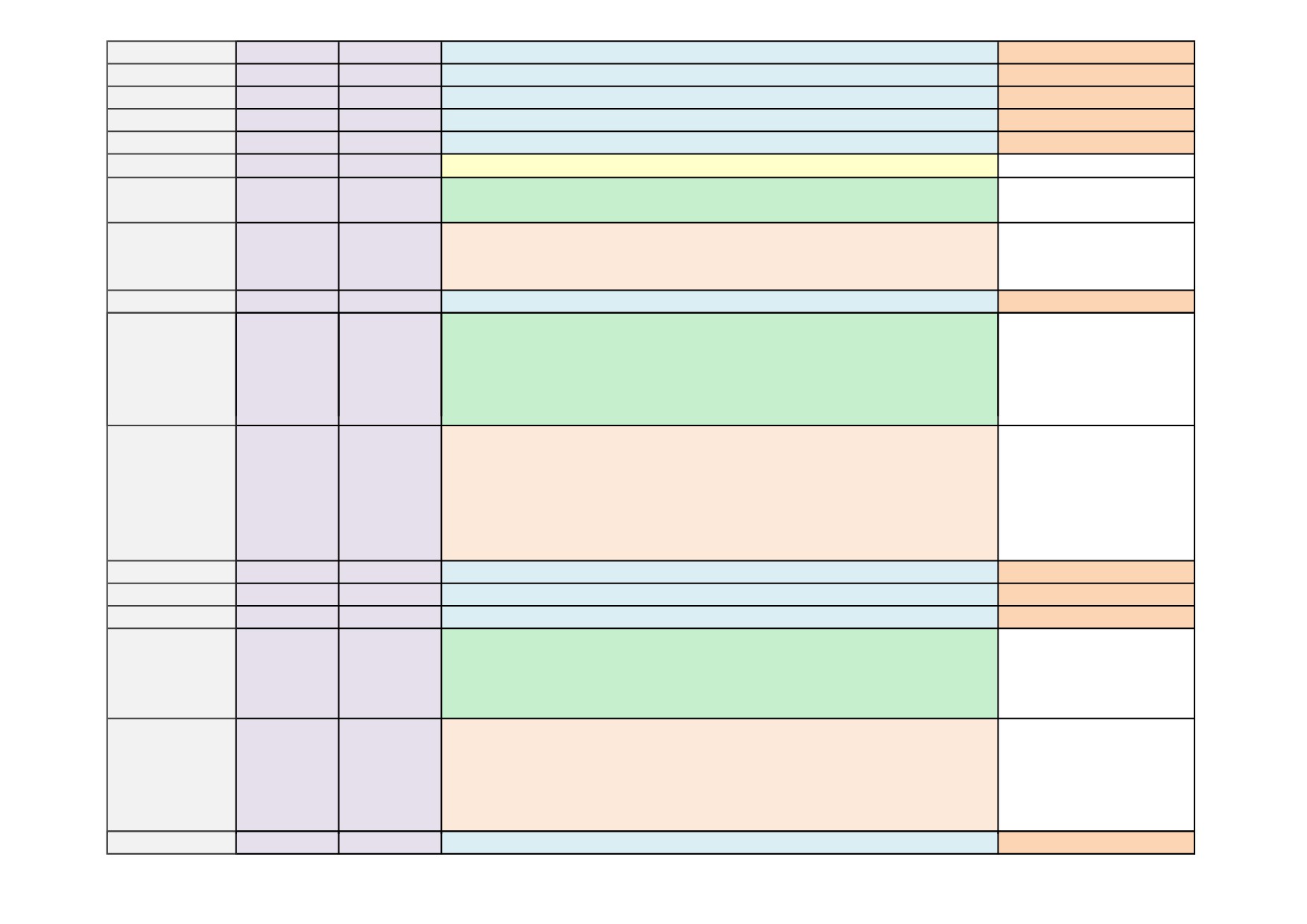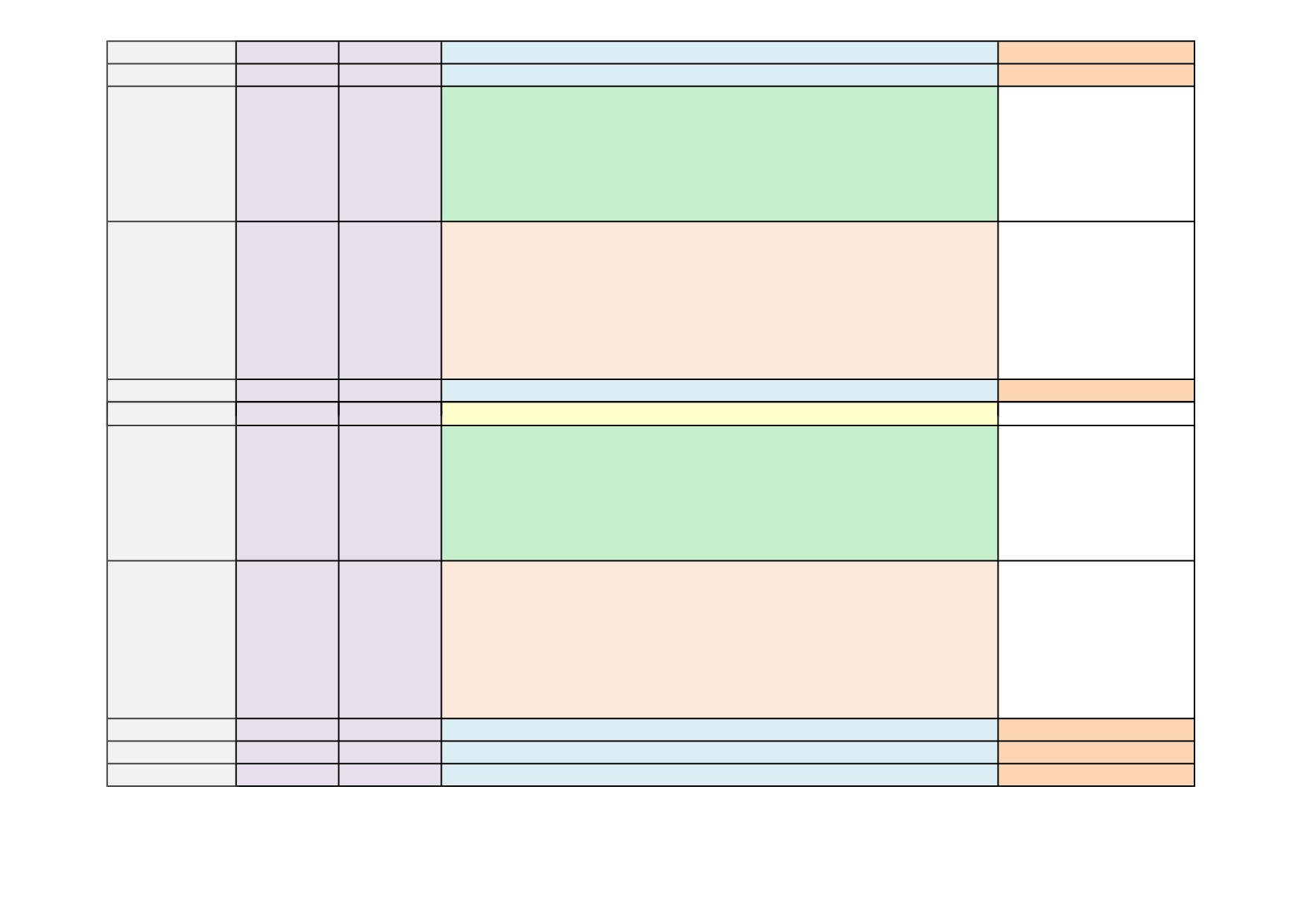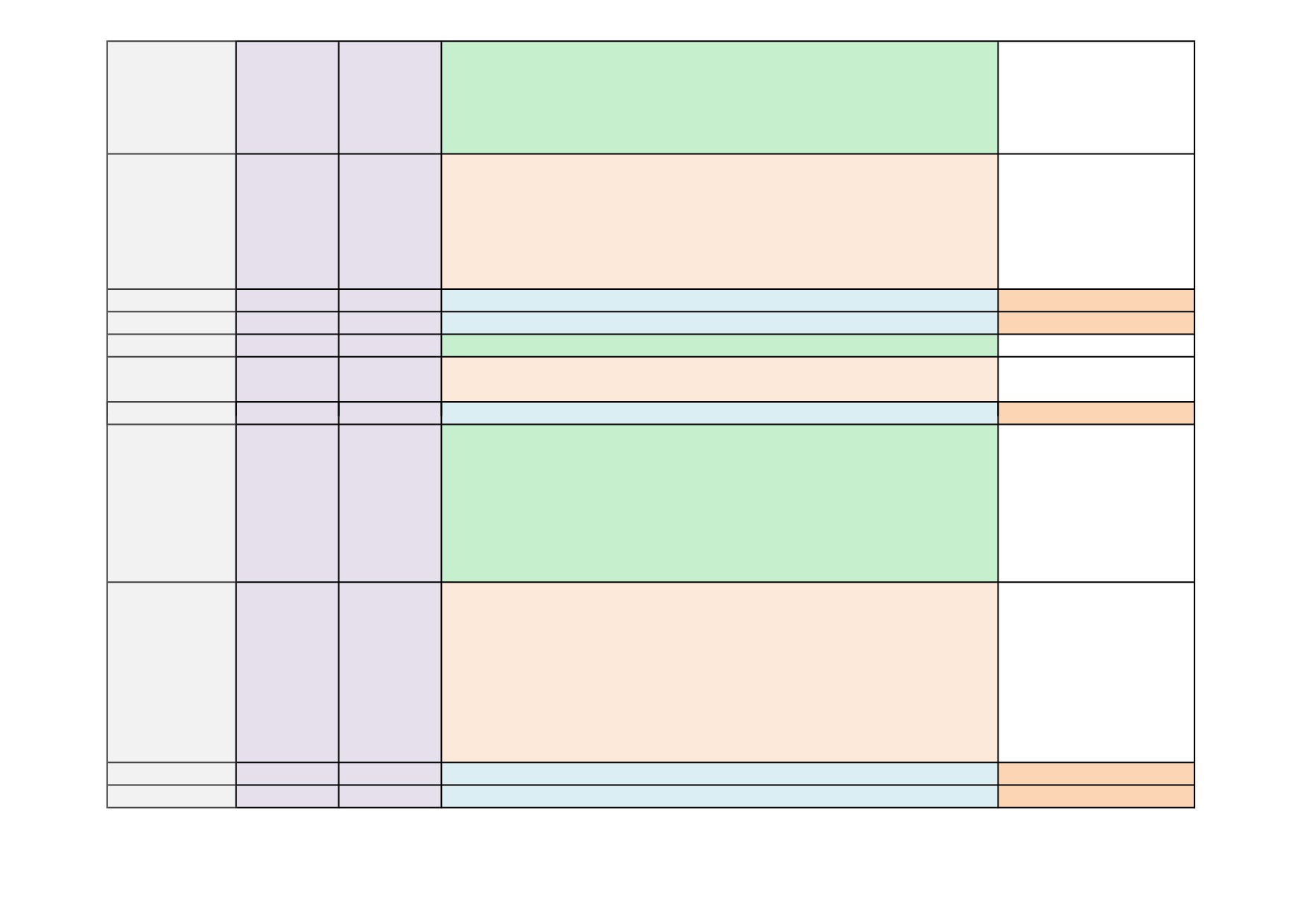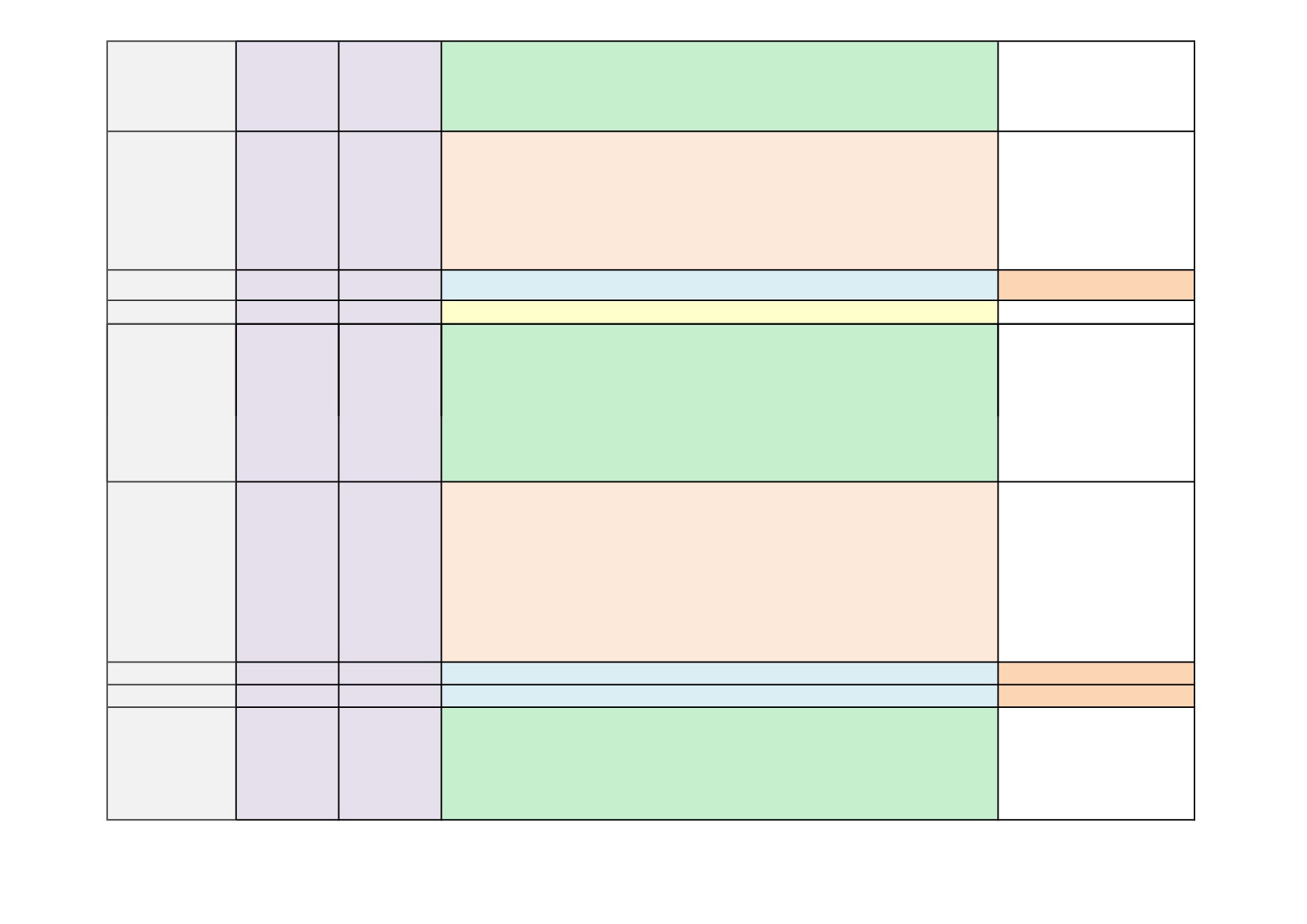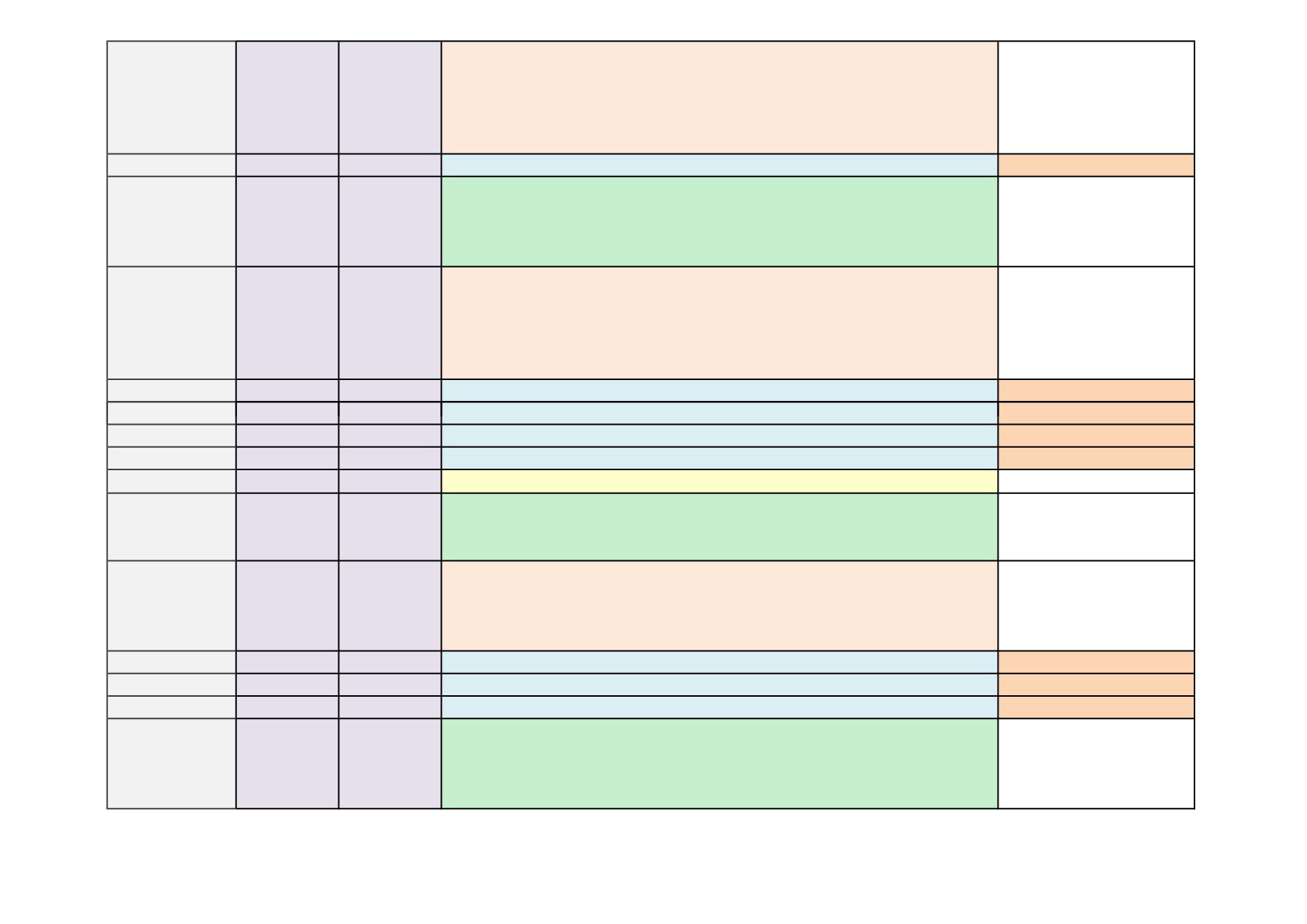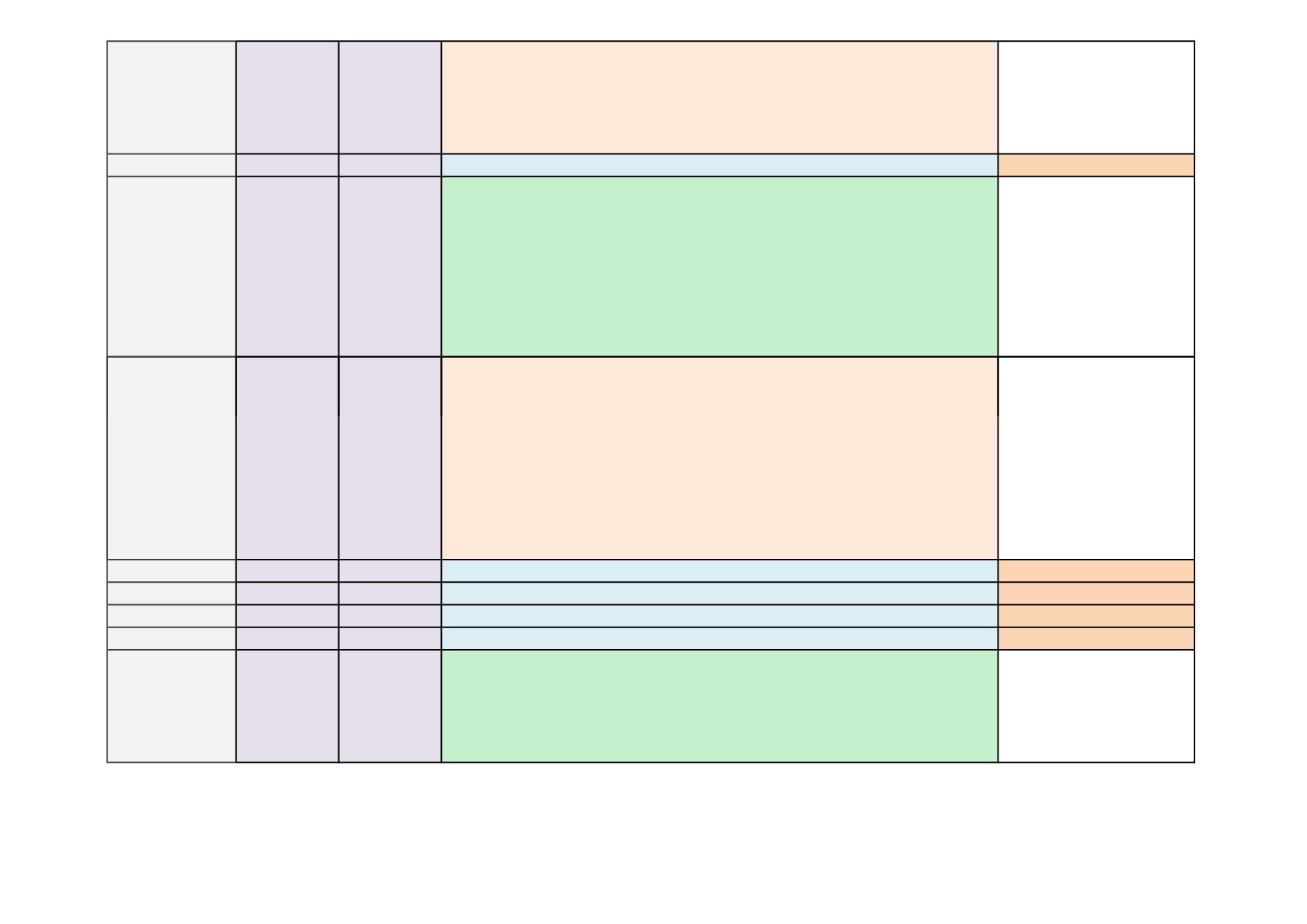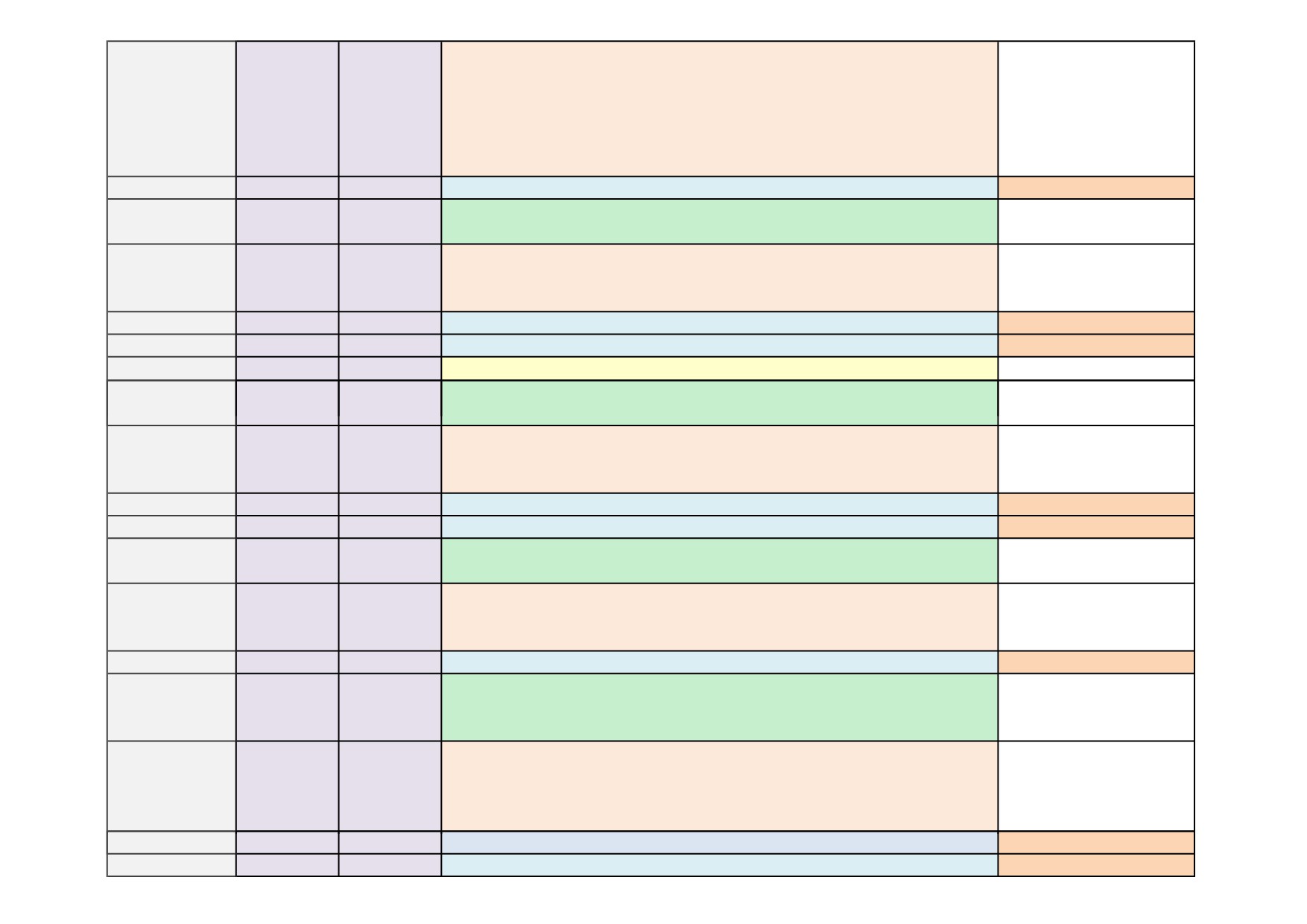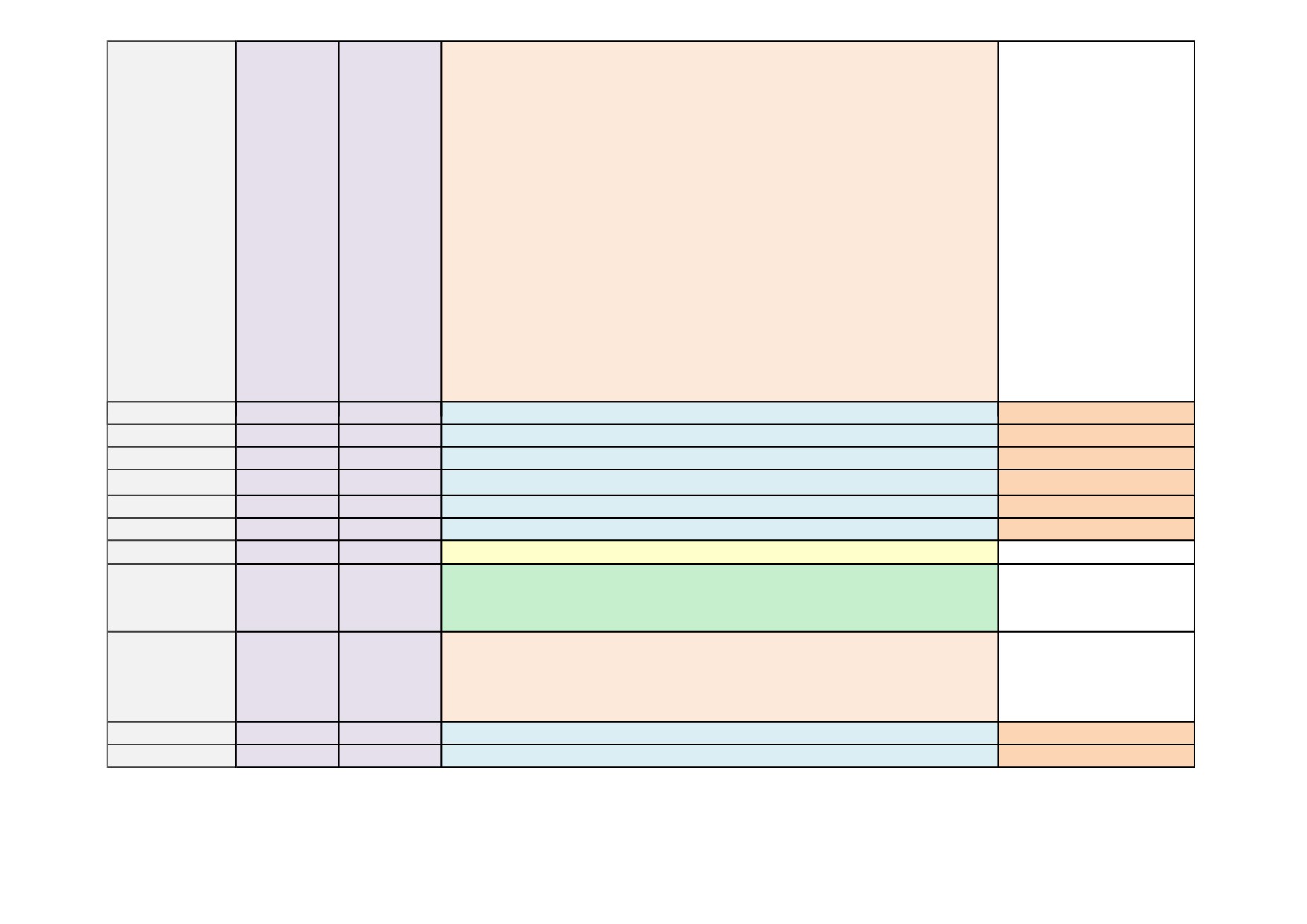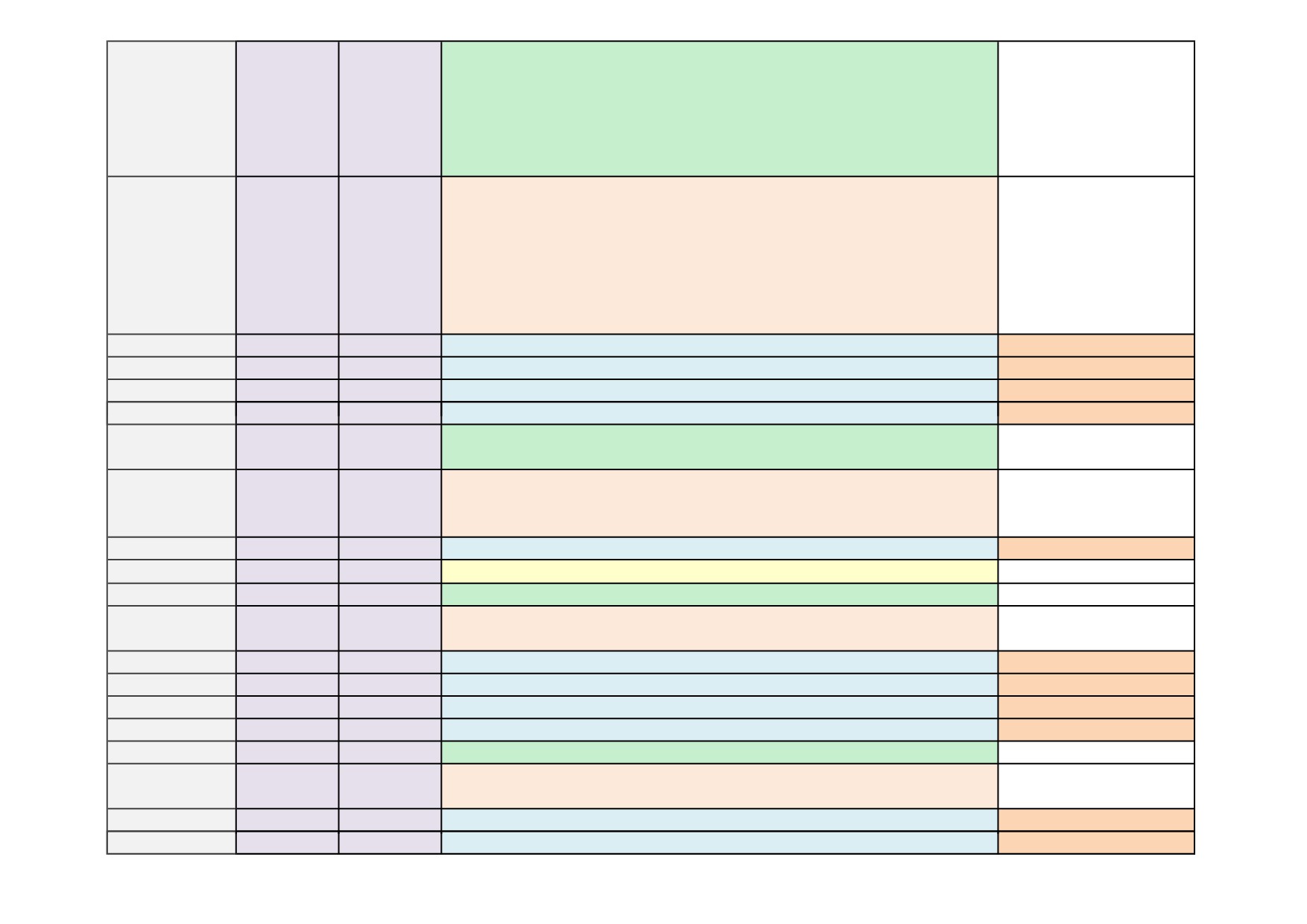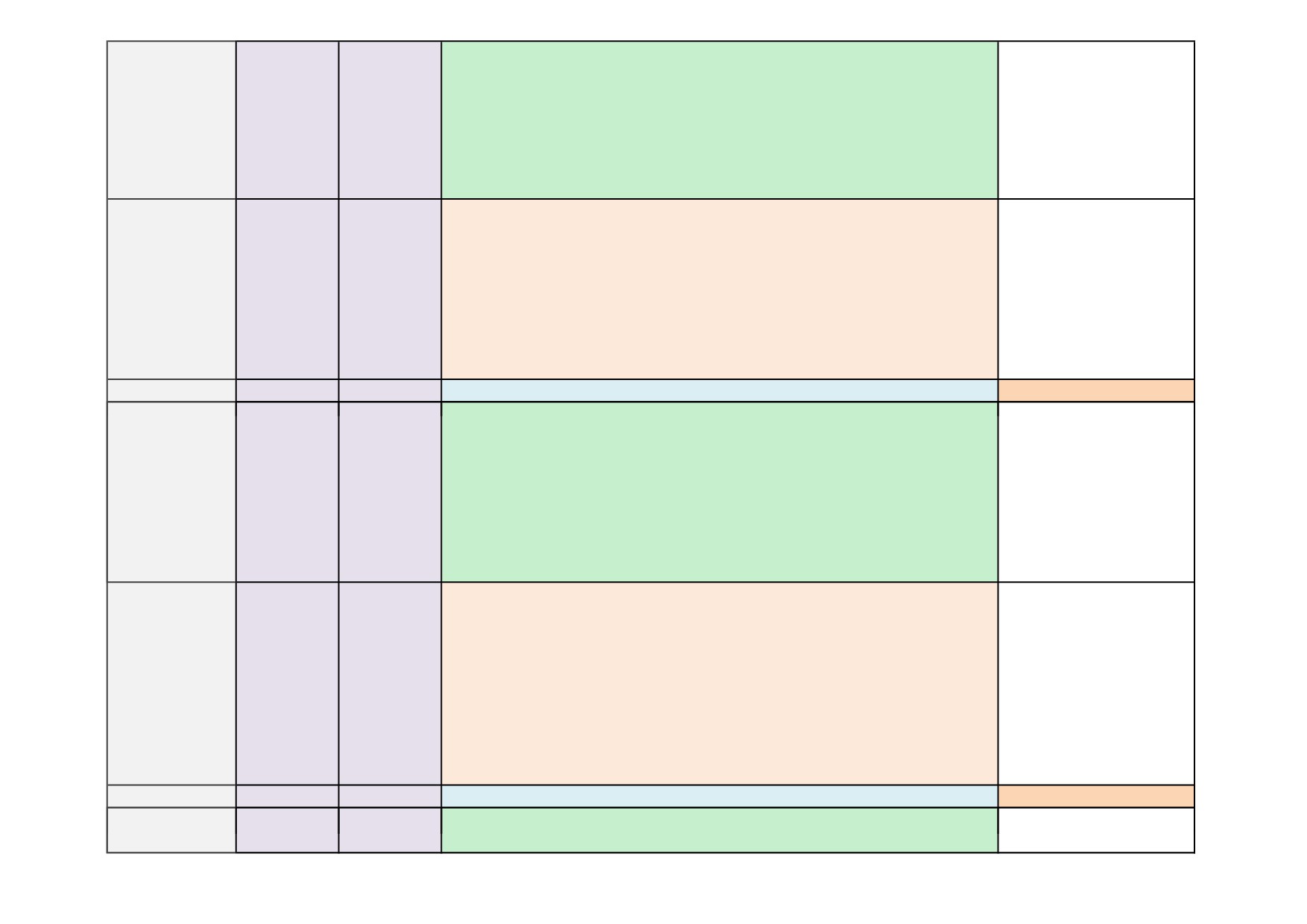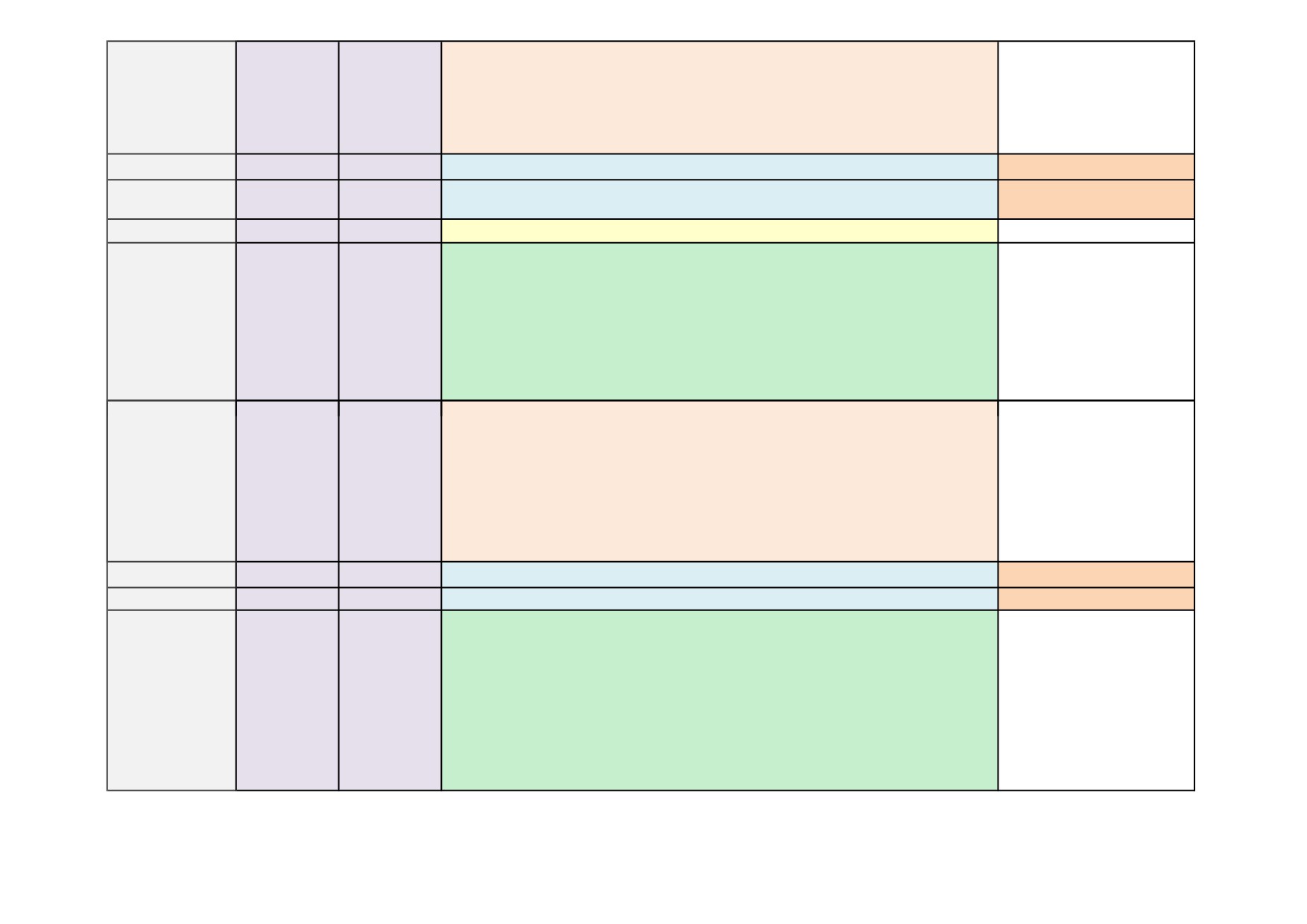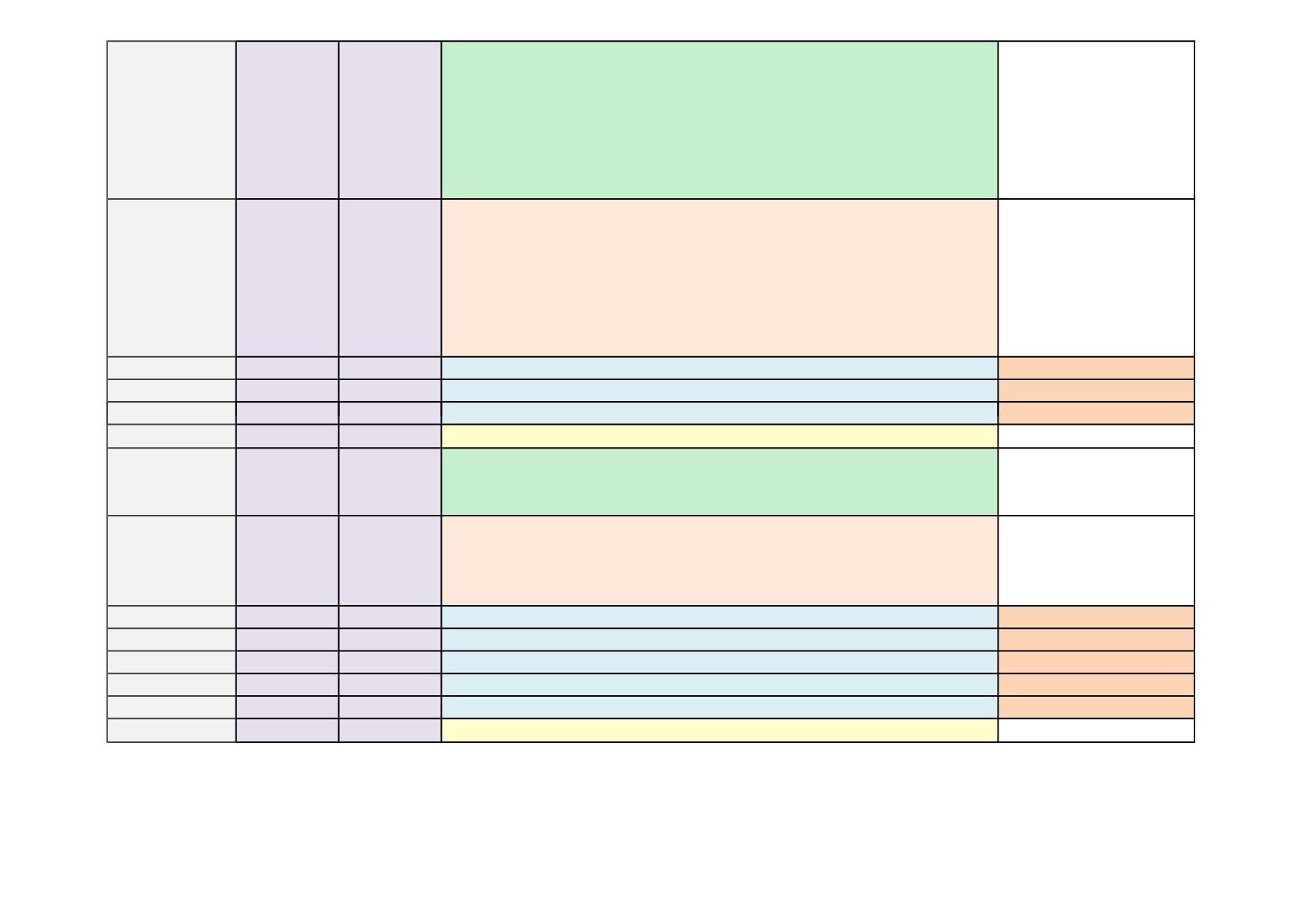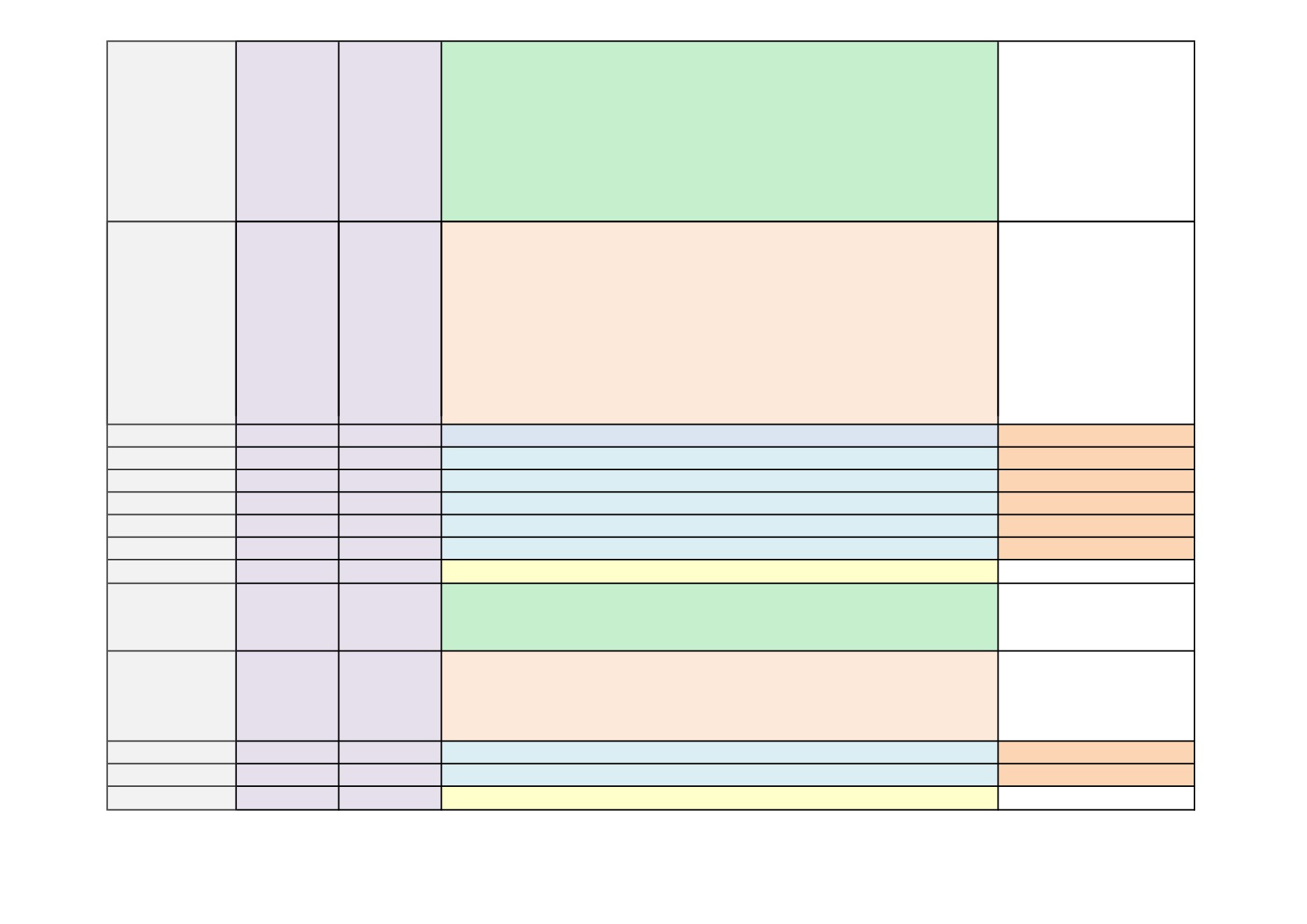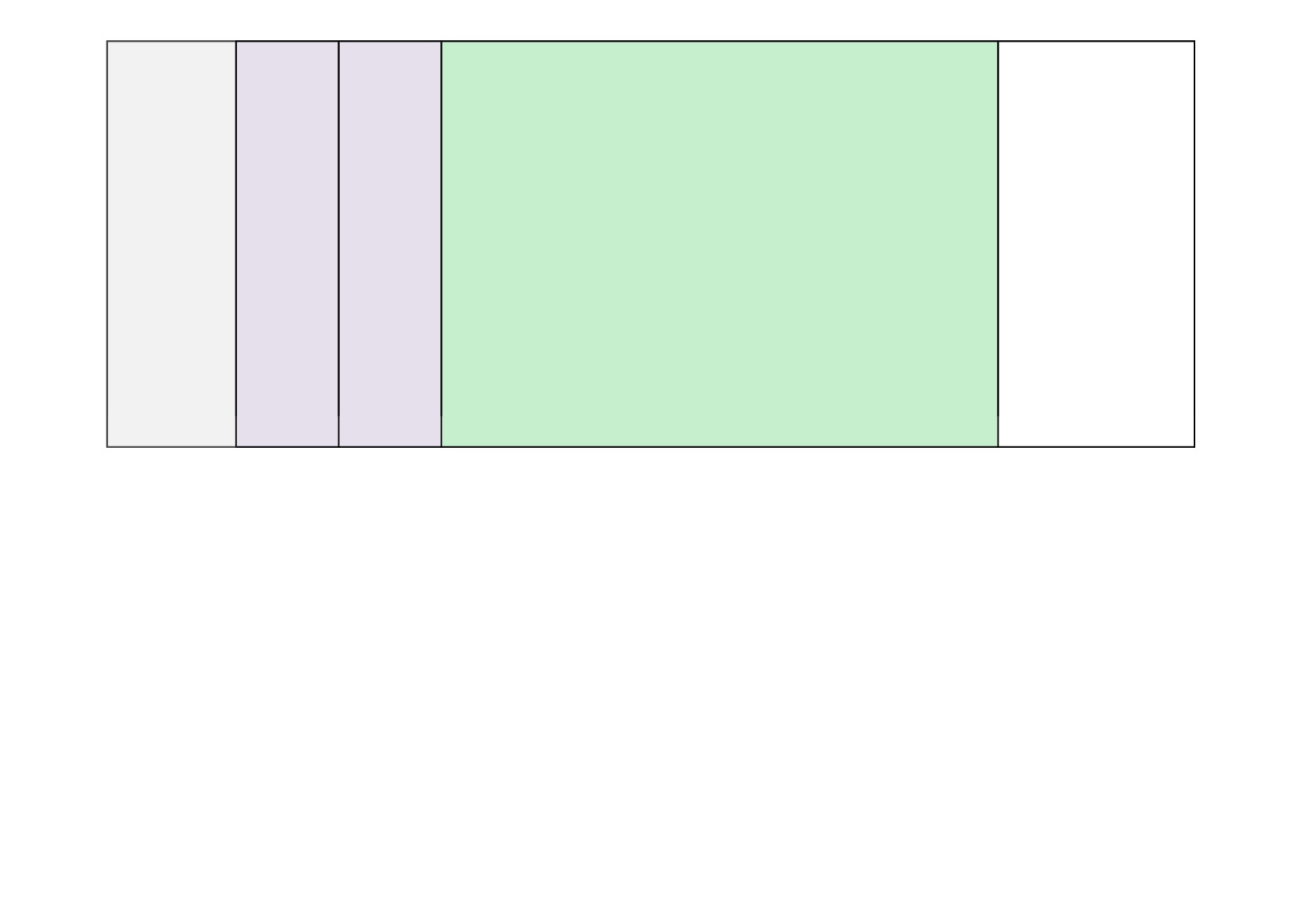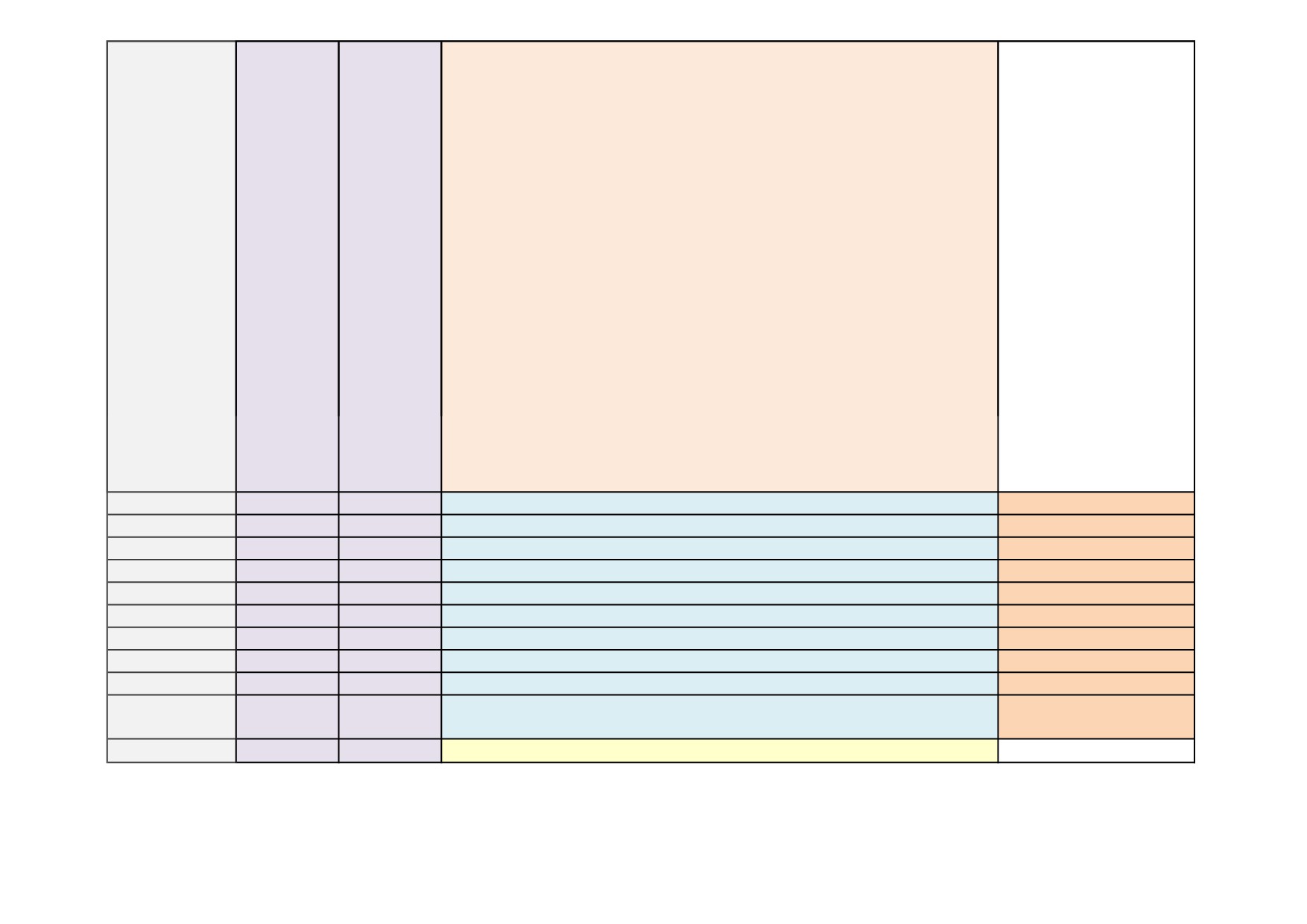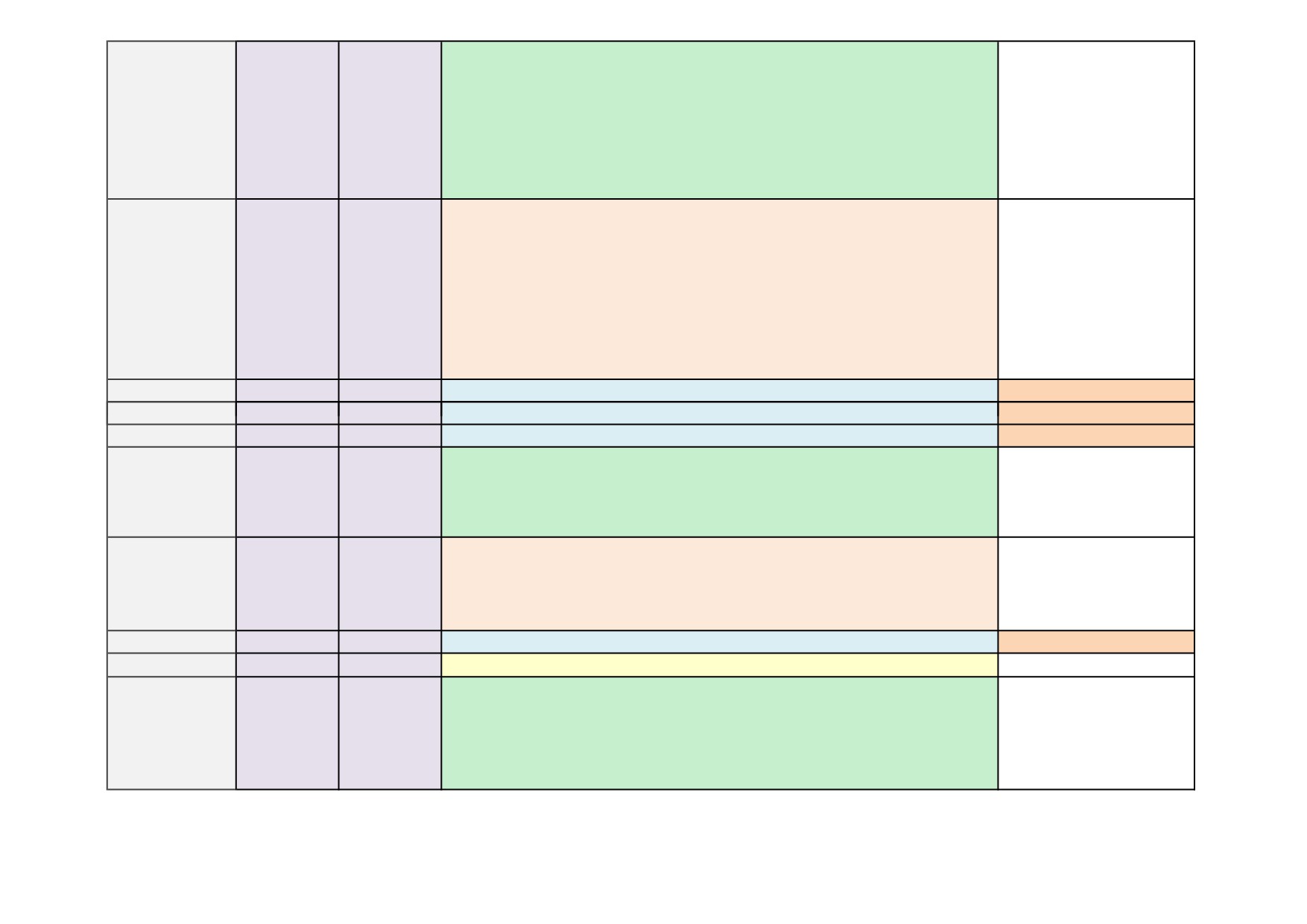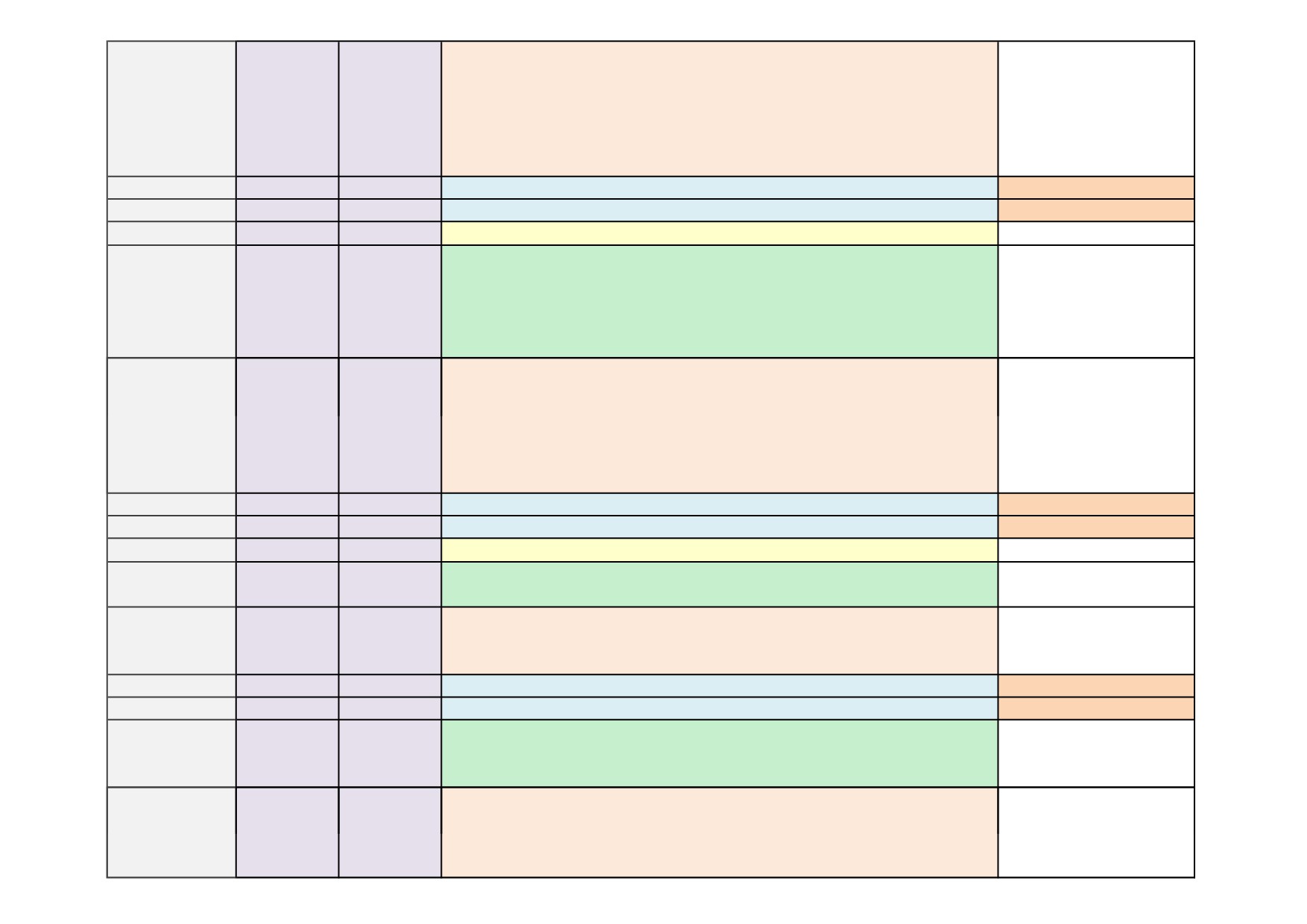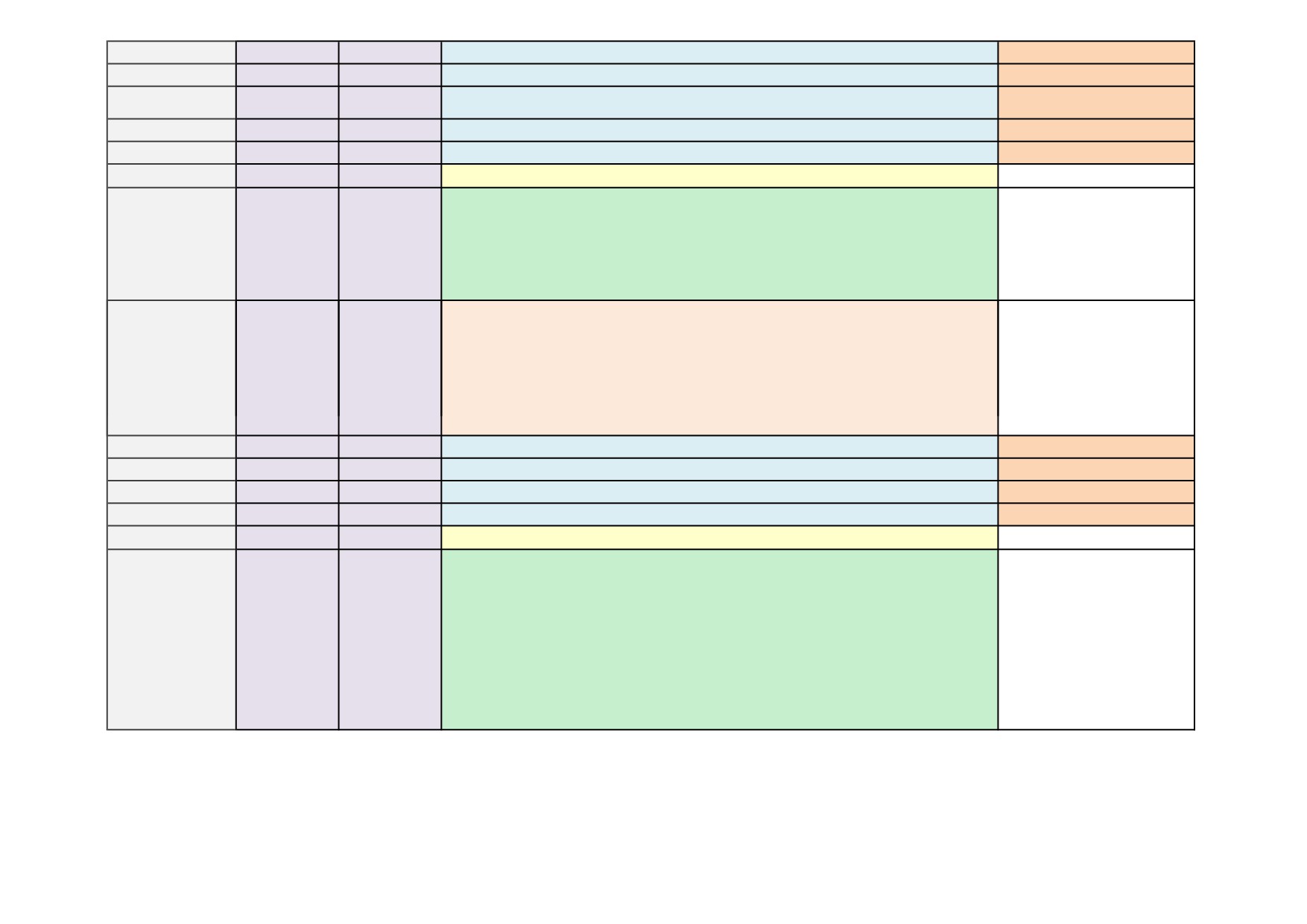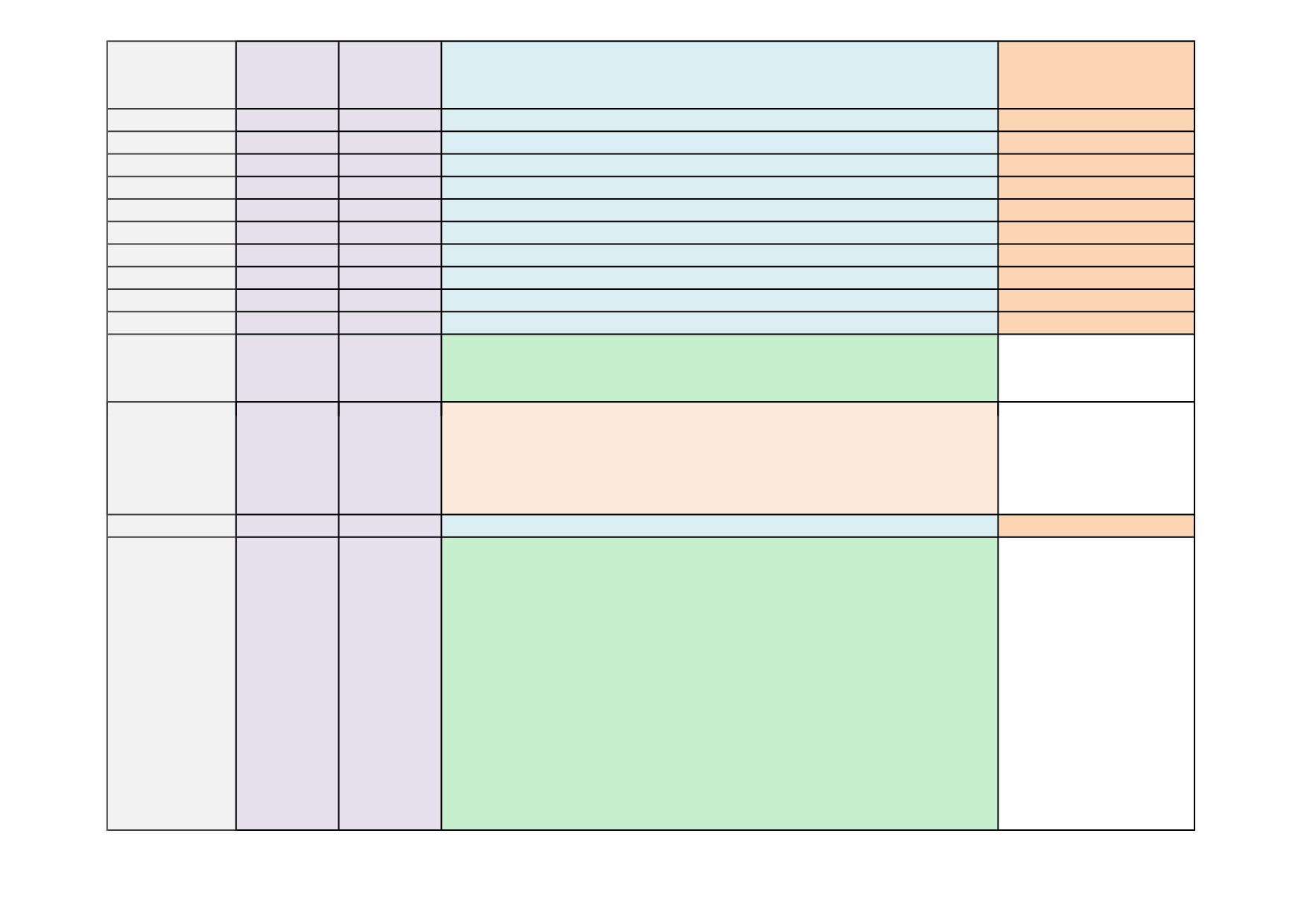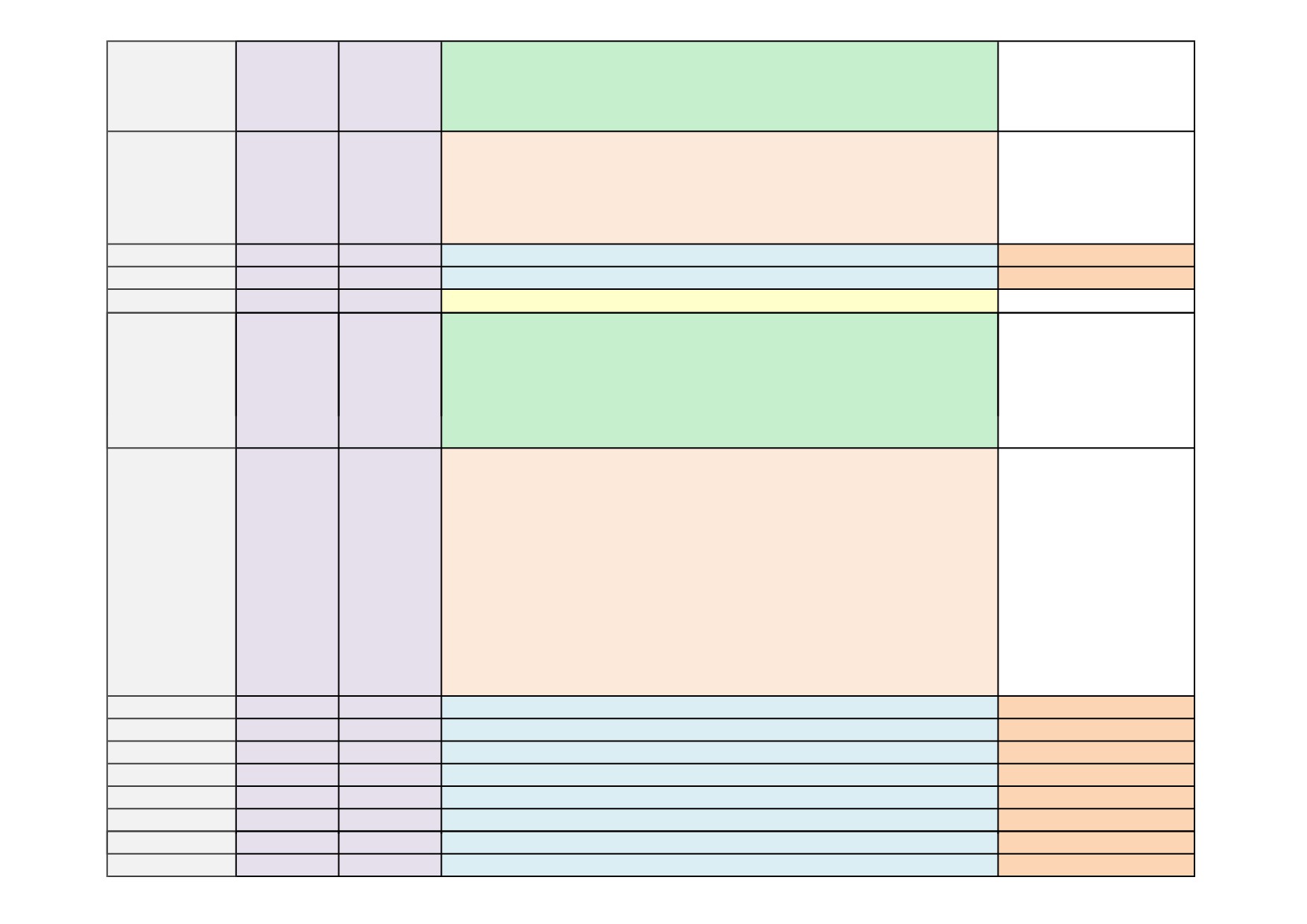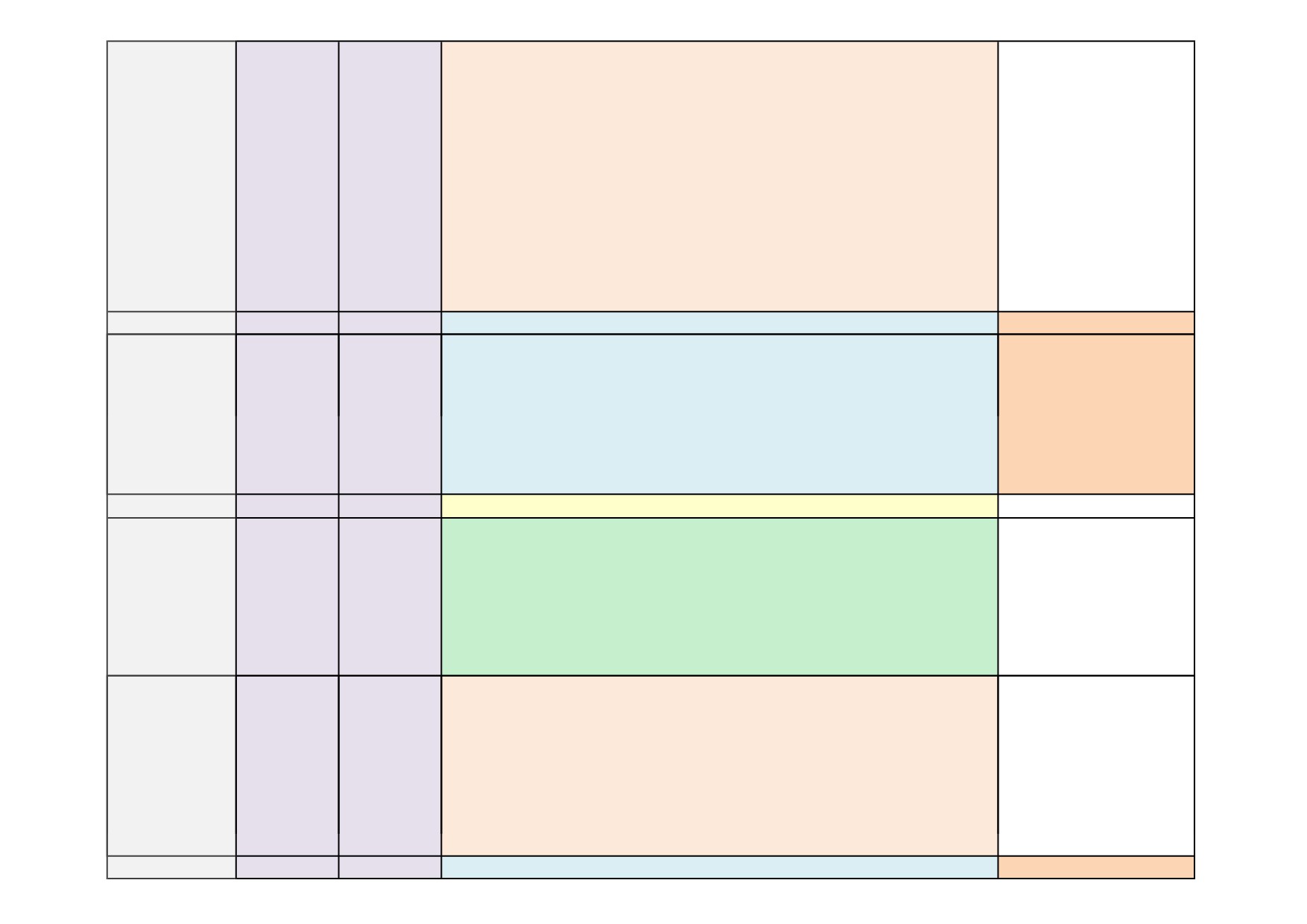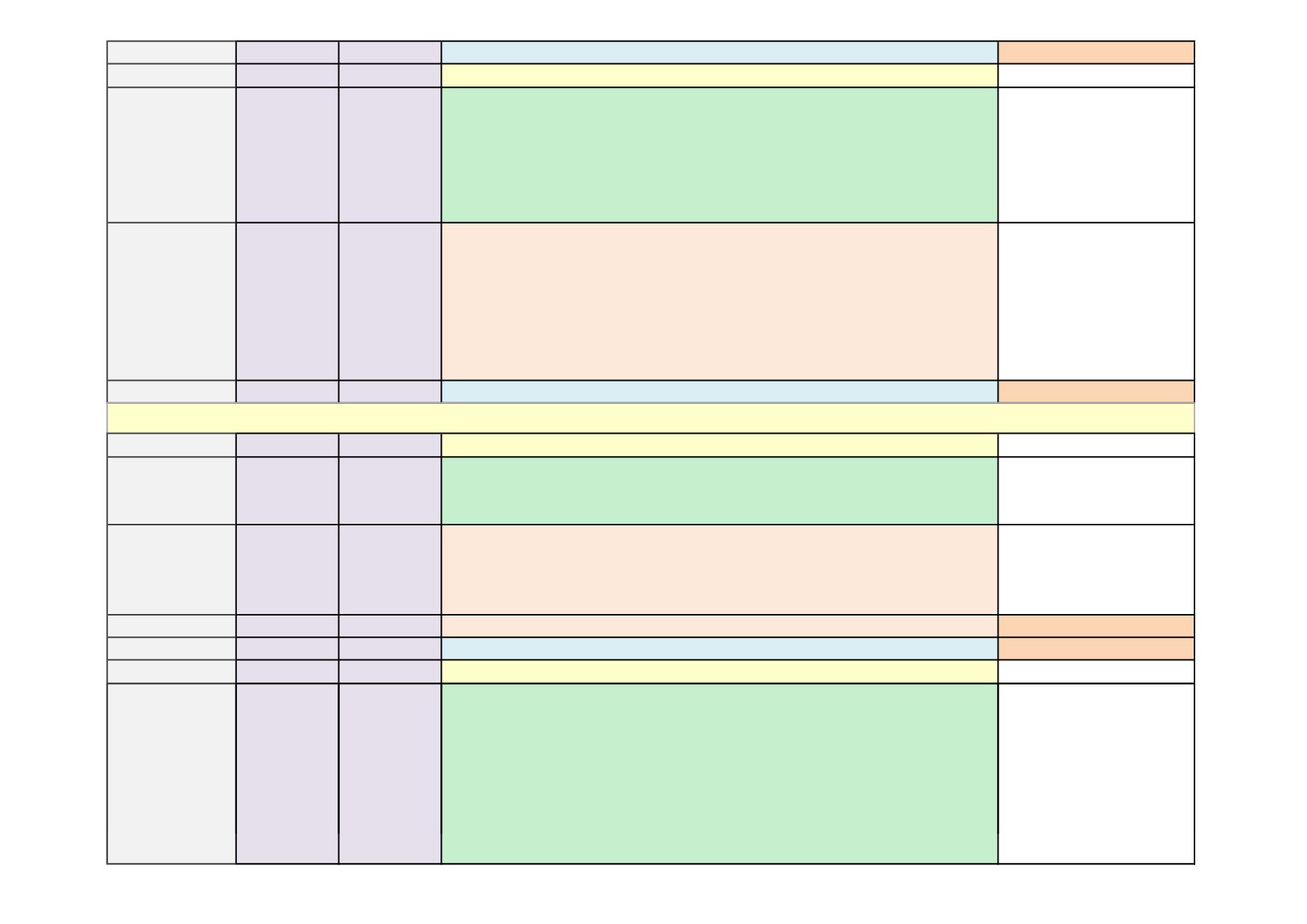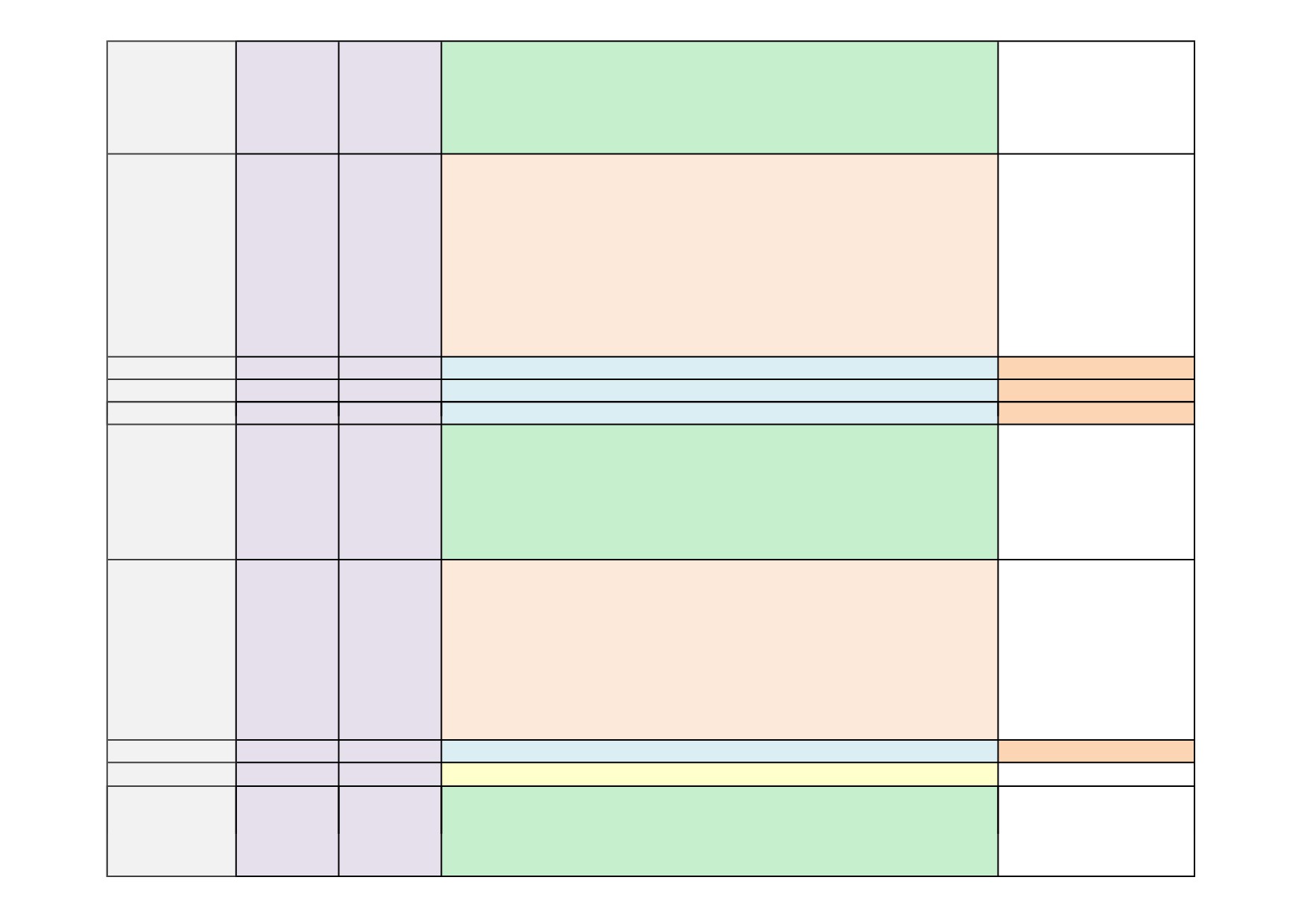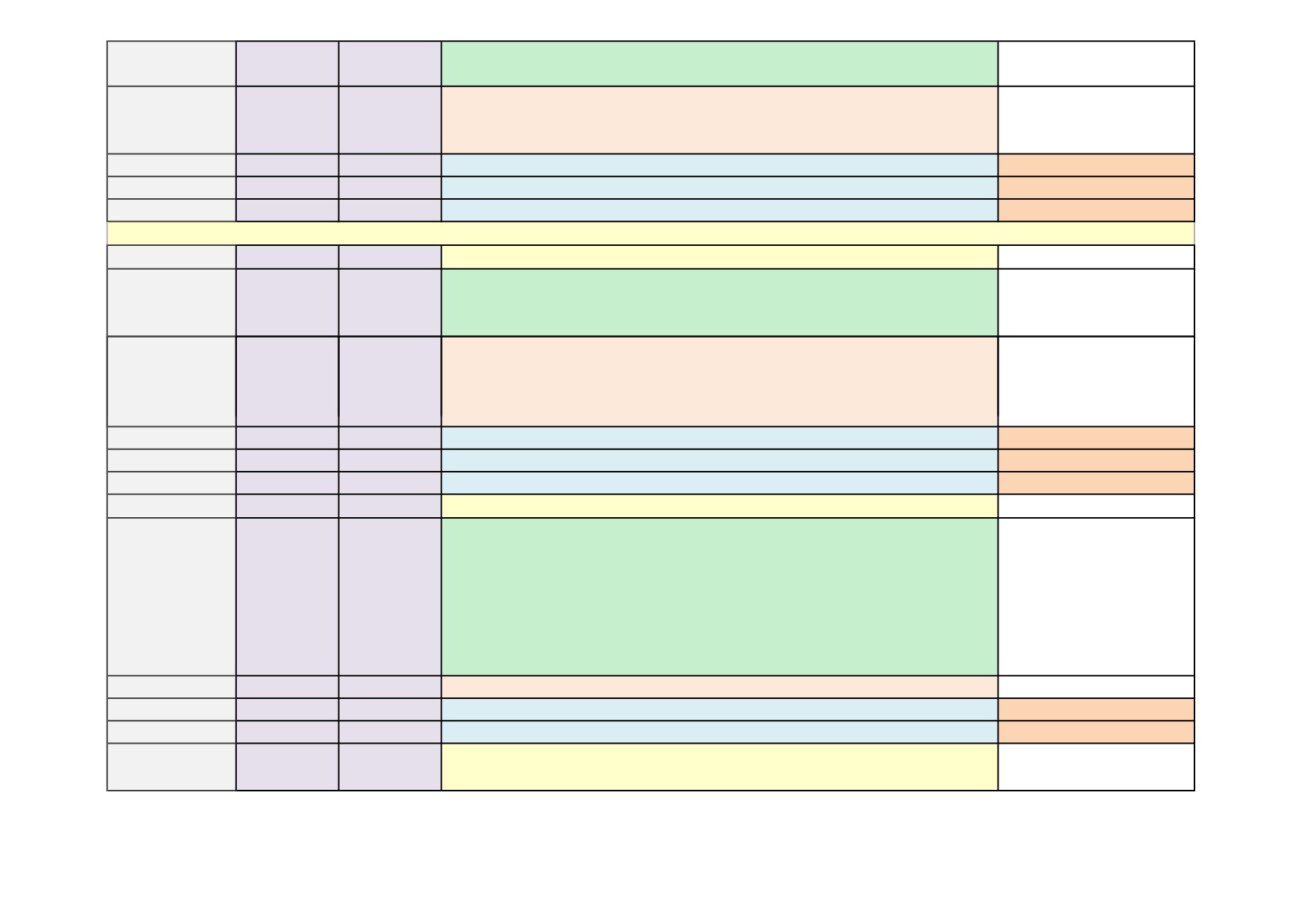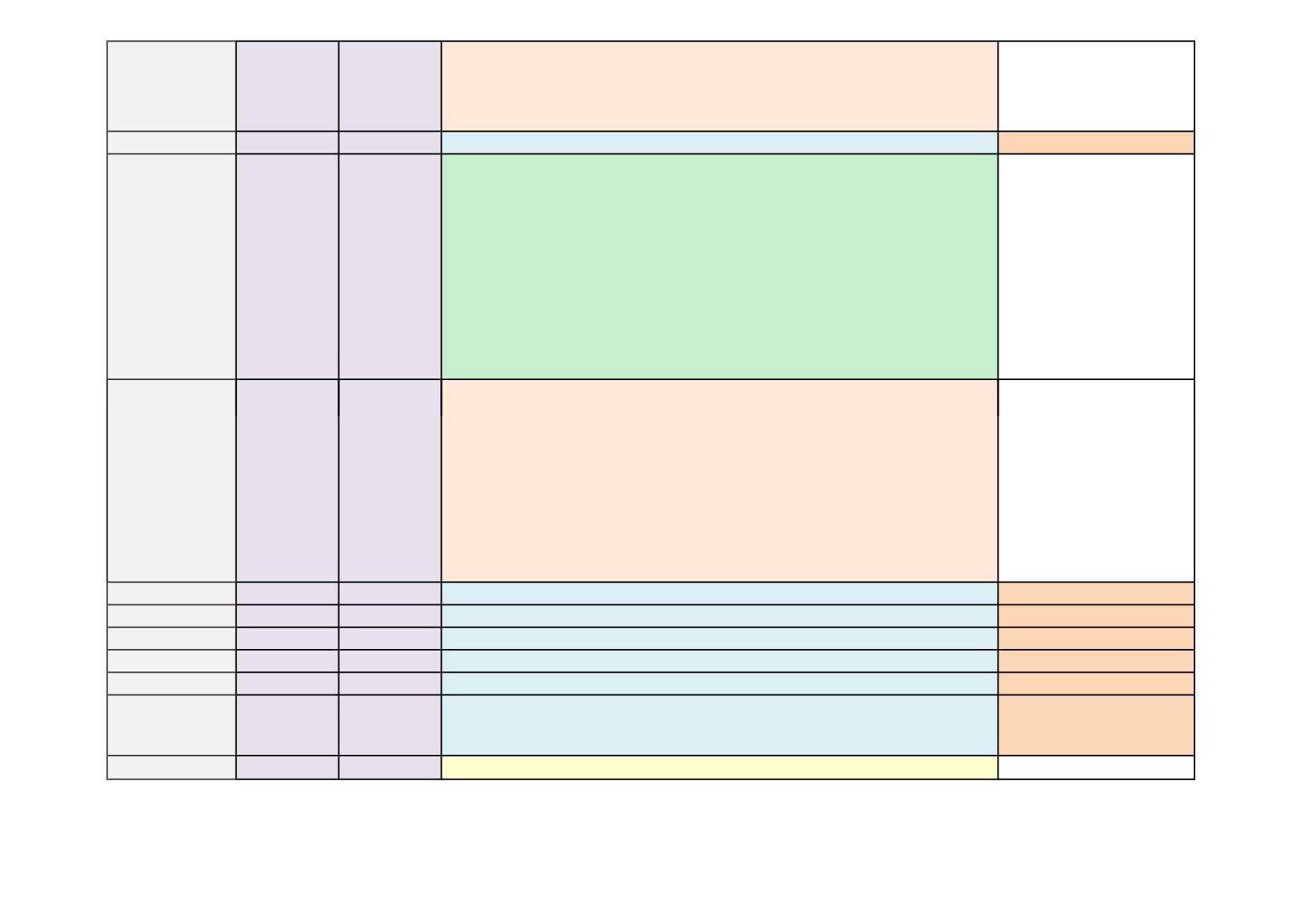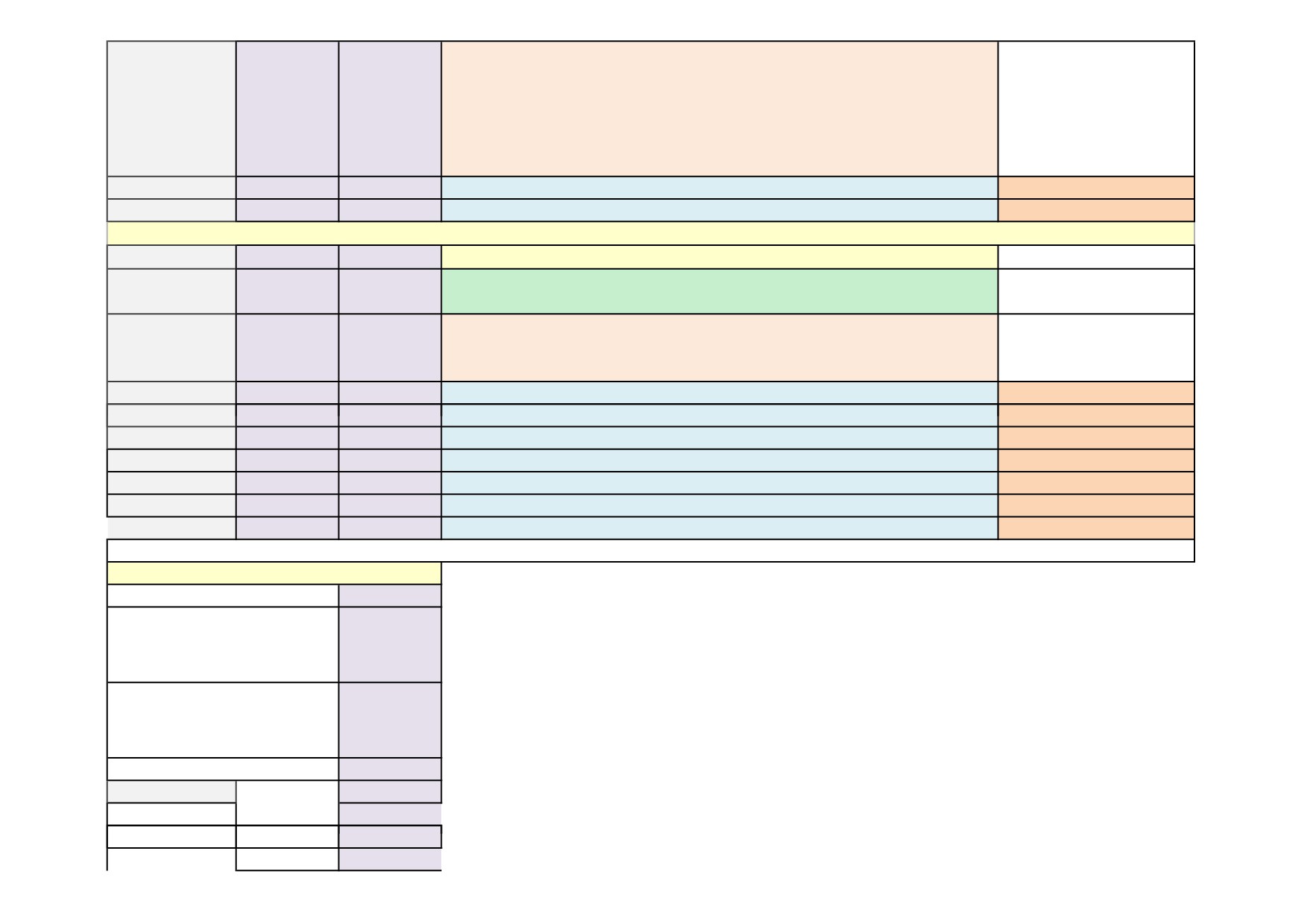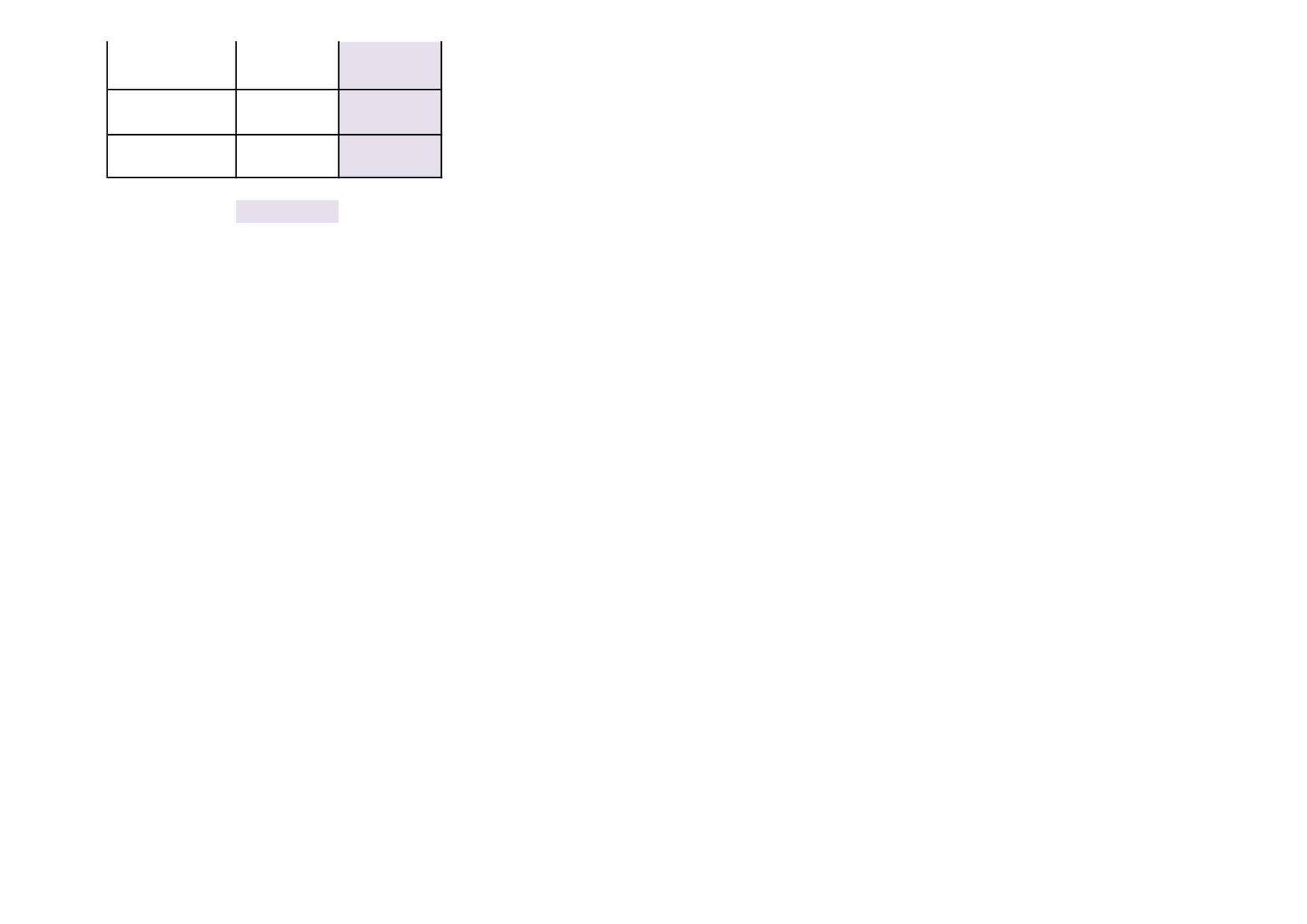Lec.No.
Comp. No.
Titles: Topic, Competency with SLO & Lesson
Teaching Methodology
GENERAL ANATOMY
Topic
Anatomical terminology
AN1.1
Demonstrate normal anatomical position,various planes, relation, comparison,
laterality & movement in our body
AN1.1 /SLO
1.Define the anatomical position
2.Describe the various planes
3.Demonstrate the movements in our body
1
1
Introduction to Anatomy and Anatomical Terminology
Lecture
2,3
Demonstrate Anatomical position, planes & movements
DOAP
Topic
General features of Bones & Joints
AN1.2,2.1,
Describe composition of bone and bone marrow
2.2, 2.3, 2.4
Describe parts, blood and nerve supply of a long bone Enumerate laws of
ossification
Enumerate special features of a sesamoid bone
Describe various types of cartilage with its structure & distribution in body
AN1.2,2.1, 2.2, 2.3, 2.4/SLO
1.Describe the composition of bone and bone marrow
2.Describe the parts, blood and nerve supply of a long bone
3.Enumerate the laws of ossification
4.Enumerate the special features of a sesamoid bone
4
1
Introduction to bones
Lecture
AN 1.2, 2.1,
Identify the different types of bones and cartilages, Parts and classification of
2.2, 2.3, 2.4
bones with examples
AN 1.2, 2.1, 2.2, 2.3, 2.4/SLO
1.Describe composition of bone and bone marrow
2.Describe the parts, blood and nerve supply of a long bone
3.Enumerate the laws of ossification
4.Enumerate the special features of a sesamoid bone
5.Describe various types of cartilage with its structure & distribution in body
5,6
General features of bones and cartilages
DOAP
AN2.5, 2.6
Describe various joints with subtypes and examples
Explain the concept of nerve supply of joints & Hilton’s law
AN2.5, 2.6/SLO
1.Define the joint
2.Describe the various joints with subtypes and examples
3.Describe the the concept of nerve supply of joints & Hilton’s law
7
1
Introduction to joints - part I
Lecture
8
1
Introduction to joints - part II
Lecture
AN2.5, 2.6
Describe various joints with subtypes and examples
Explain the concept of nerve supply of joints & Hilton’s law
AN2.5, 2.6/SLO
1.Define the joint
2.Describe the various joints with subtypes and examples
3.Describe the the concept of nerve supply of joints & Hilton’s law
9,10
Types of joints with examples
DOAP
AN2.1, 2.5
Describe parts, blood and nerve supply of a long bone
Describe various joints with subtypes and examples
AN2.1, 2.5/SLO
1.Describe the blood supply of a long bone
2.Describe the synovial joint
3.Enumerate the subtypes of synovial joints with examples
11,12
Blood supply of long bone and Synovial joint
Tutorial
Topic
General features of Muscle
AN3.1, 3.2,
Classify muscle tissue according to structure & action
3.3
Enumerate parts of skeletal muscle and differentiate between tendons and
aponeuroses with examples
Explain Shunt and spurt muscles
AN3.1, 3.2, 3.3/SLO
1.Classify the muscles according to structure & action
2.Enumerate the parts of skeletal muscle
3.Differentiate between tendons and aponeuroses with examples
4.Explain Shunt and spurt muscles
13
1
Introduction to muscles
Lecture
14,15
Types of muscles with examples
DOAP
AN2.1,2.5,
Describe parts, blood and nerve supply of a long bone
3.1
Describe various joints with subtypes and examples
Classify muscle tissue according to structure & action
AN2.1,2.5, 3.1 /SLO
1.Describe parts, blood and nerve supply of a long bone
2.Describe various joints with subtypes and examples
3.Classify the muscle tissue
Topic
General features of skin and fasciae
AN4.1, 4.2,
Describe different types of skin & dermatomes in body
4.3, 4.4, 4.5
Describe structure & function of skin with its appendages
Describe superficial fascia along with fat distribution in body
AN4.1, 4.2, 4.3, 4.4, 4.5/SLO
1.Describe different types of skin
2.Define dermatome
3.Describe structure & function of skin with its appendages
4.Describe superficial fascia along with fat distribution in body
16
1
Skin and fasciae
Lecture
Topic
General features of the cardiovascular system
AN5.1, 5.2,
Differentiate between blood vascular and lymphatic system
5.3, 5.4,5.5,
Differentiate between pulmonary and systemic circulation
5.6, 5.7, 5.8
List general differences between arteries & veins
Explain functional difference between elastic, muscular arteries and arterioles
Describe portal system giving examples
Describe the concept of anastomoses and collateral circulation with
significance of end-arteries
Explain function of meta-arterioles, precapillary sphincters, arteriole-venous
anastomosis
Define thrombosis, infarction & aneurysm
AN5.1, 5.2, 5.3, 5.4,5.5, 5.6, 5.7, 5.8/SLO
1.Discuss the vascular system
2.Differentiate pulmonary and systemic circulation
3.List general differences between arteries & veins
4.Differentiate elastic, muscular arteries and arterioles
5.Describe portal system with examples
6.Describe the concept of anastomosis and collateral circulation with
significance of end-arteries
7.Explain function of meta-arterioles, precapillary sphincters, arteriole-venous
anastomoses
8.Define thrombosis, infarction & aneurysm
17
1
Introduction to cardiovascular system
Lecture
18
Classifiction of blood vessels and types of circulation
DOAP
Topic
General Features of lymphatic system
AN6.1, 6.2,
List the components and functions of the lymphatic system
6.3
Describe structure of lymph capillaries & mechanism of lymph circulation
Explain the concept of lymphoedema and spread of tumors via lymphatics and
venous system
AN6.1, 6.2, 6.3/SLO
1.List the components and functions of the lymphatic system
2.Describe the structure of lymph capillaries & mechanism of lymph circulation
3.Explain the concept of lymphoedema and spread of tumors via lymphatics
and venous system
19
1
Introduction to lymphatic system
Lecture
20,21
Introduction to lymphatic system ,components and functions of lymphatic
DOAP
system
Topic
Introduction to the nervous system
AN7.1, 7.2,
Describe general plan of nervous system with components of central,
7.3, 7.5, 7.6,
peripheral & autonomic nervous systems
7.7,
List components of nervous tissue and their functions
Describe parts of a neuron and classify them based on number of neurites, size
& function
Describe principles of sensory and motor innervation of muscles
Describe concept of loss of innervation of a muscle with its applied anatomy
Describe various type of synapse
AN7.1, 7.2, 7.3, 7.5, 7.6, 7.7,/SLO
1.Describe nervous system with components of central, peripheral &
autonomic nervous systems
2.List the components of nervous tissue and their functions
3.Describe the parts of a neuron and classify them based on number of
neurites, size & function
4.Describe the principles of sensory and motor innervation of muscles
5.Describe concept of loss of innervation of a muscle with its applied anatomy
6.Describe various type of synapse
22
1
Introduction to nervous system
Lecture
23,24
Classifiction of nervous system with examples
DOAP
Describe structure of a typical spinal nerve
AN7.4/SLO
1.Describe the structure of a typical spinal nerve.
2.Enumerate the number of spinal nerves.
3.Discuss the applied anatomy of spinal nerve.
25,26
Typical spinal nerve
Tutorial
AN7.8
Describe differences between sympathetic and spinal ganglia
AN7.8/SLO
1.Describe the differences between sympathetic and spinal ganglia
27
Sympathetic and spinal ganglia
SDL
UPPER LIMB
Topic
Features of individual bones of upper limb
AN8.1, 8.2,
Identify the given bone, its side, important features & keep it in anatomical
8.3, 8.4
position
Identify & describe joints formed by the given bone
Enumerate peculiarities of clavicle
Demonstrate important muscle attachment on the given bone
AN8.1, 8.2, 8.3, 8.4/SLO
1.Identify the given bone, its side, important features & keep it in anatomical
position
2.identify & describe joints
3.Enumerate peculiarities of clavicle
4.Demonstrate important muscle attachment on the given bone
28,29
Anatomical position, parts, features, attachments and applied anatomy of
DOAP
upper limb bones
AN8.5, 8.6
Identify and name various bones in articulated hand, Specify the parts of
metacarpals and phalanges and enumerate the peculiarities of pisiform
Describe scaphoid fracture and explain the anatomical basis of avascular
necrosis
AN8.5, 8.6/SLO
1.Identify and name various bones in articulated hand
2. Describe the parts of metacarpals and phalanges
3.Enumerate the peculiarities of pisiform
4.Describe the scaphoid fracture and explain the anatomical basis of avascular
necrosis
30,31
Skeleton of hand and its applied anatomy
DOAP
Topic
Pectoral region
AN9.1, 9.2,
Describe attachment, nerve supply & action of pectoralis major and pectoralis
9.3
minor
Breast: Describe the location, extent, deep relations, structure, age changes,
blood supply, lymphatic drainage, microanatomy and applied anatomy of
breast
Describe development of breast
AN9.1, 9.2, 9.3/SLO
1.Describe attachment, nerve supply & action of pectoralis major and
pectoralis minor
2. Describe the location, extent, deep relations, structure, age changes, blood
supply, lymphatic drainage, microanatomy and applied anatomy of breast
3.Describe development of breast
32
2
Introduction to pectoral region, muscles and clavipectoral fascia
Lecture
33
2
Mammary gland
Lecture
34,35
Muscles of pectoral region and mammary gland
DOAP
Topic
Axilla, Shoulder and Scapular region
AN10.1, 10.2,
Identify & describe boundaries and contents of axilla
10.4, 10.7
Identify, describe and demonstrate the origin, extent, course, parts, relations
and branches of axillary artery & tributaries of vein
Describe the anatomical groups of axillary lymph nodes and specify their areas
of drainage
Explain anatomical basis of enlarged axillary lymph nodes
AN10.1, 10.2, 10.4, 10.7/SLO
1.Identify & describe the boundaries and contents of axilla
2.Identify, describe and demonstrate the origin, extent, course, parts, relations
and branches of axillary artery & tributaries of vein
3.Describe the anatomical groups of axillary lymph nodes and specify their
areas of drainage
4.Explain the anatomical basis of enlarged axillary lymph nodes
36
2
Axilla and axillary artery
lecture
37,38
Axilla , axillary artery and its branches
DOAP
AN10.3, 10.5,
Describe, identify and demonstrate formation, branches, relations, area of
10.6
supply of branches, course and relations of terminal branches of brachial
plexus
Explain variations in formation of brachial plexus
Explain the anatomical basis of clinical features of Erb’s palsy and Klumpke’s
paralysis
AN10.3, 10.5, 10.6/SLO
1.Describe, identify and demonstrate formation, branches, relations, area of
supply of branches, course and relations of terminal branches of brachial
plexus
2.Explain variations in formation of brachial plexus
3.Explain the anatomical basis of clinical features of Erb’s palsy and Klumpke’s
paralysis
39
2
Brachial plexus and its applied anatomy
Lecture
40,41
Brachial plexus and its applied anatomy
DOAP
AN9.2, 10.5,
Breast: Describe the location, extent, deep relations, structure, age changes,
10.6
blood supply, lymphatic drainage, microanatomy and applied anatomy of
AN9.2, 10.5, 10.6/SLO
1. Describe the location, extent, deep relations, structure, age changes, blood
supply, lymphatic drainage, microanatomy and applied anatomy of breast
2.Explain the variations in formation of brachial plexus
3.Explain the anatomical basis of clinical features of Erb’s palsy and Klumpke’s
paralysis
42,43
Lymphatic drainage of mammary gland &
Tutorial
Erb's paralysis
AN10.10,
Describe and identify the deltoid and rotator cuff muscles
10.11,
Describe & demonstrate attachment of serratus anterior with its action
AN10.10, 10.11, /SLO
1.Describe and identify the deltoid and rotator cuff muscles
2.Describe & demonstrate attachment of serratus anterior with its action
44
2
Deltoid & inter muscular spaces
Lecture
AN10.8, 10.9,
Describe the arterial anastomosis around the scapula and mention the
10.10, 10.11
boundaries of triangle of auscultation
Describe and identify the deltoid and rotator cuff muscles
Describe & demonstrate attachment of serratus anterior with its action
AN10.8, 10.9, 10.10, 10.11/SLO
1.Describe the arterial anastomosis around the scapula and mention the
boundaries of triangle of auscultation
2.Describe and identify the deltoid and rotator cuff muscles
3.Describe & demonstrate attachment of serratus anterior with its action
45,46
Scapular region
DOAP
AN10.12
Describe and demonstrate shoulder joint for- type, articular surfaces, capsule,
synovial membrane, ligaments, relations, movements, muscles involved, blood
supply, nerve supply and applied anatomy
AN10.12/SLO
1.Describe and demonstrate the shoulder joint with type, articular surfaces,
capsule, synovial membrane, ligaments, relations, movements, muscles
involved, blood supply, nerve supply and applied anatomy
47
2
Shoulder joint
Lecture
48,49
Shoulder joint
DOAP
AN10.13
Explain anatomical basis of Injury to axillary nerve during intramuscular
injections
AN10.13/SLO
1.Explain the anatomical basis of injury to axillary nerve during intramuscular
injections
50
Axillary nerve
SDL
Topic
Arm & Cubital fossa
AN11.1,
Describe and demonstrate muscle groups of upper arm with emphasis on
11.2,11.3,11.
biceps and triceps brachii
4,11.5
Identify & describe origin, course, relations, branches (or tributaries),
termination of important nerves and vessels in arm
Describe the anatomical basis of Venepuncture of cubital veins
Describe the anatomical basis of saturday night paralysis
Identify & describe boundaries and contents of cubital fossa
AN11.1, 11.2,11.3,11.4,11.5/SLO
1.Describe and demonstrate the muscle groups of arm
2.Identify and describe the origin, course, relations, branches (or tributaries),
termination of nerves and vessels in arm
51
2
Arm and brachial artery
Lecture
52,53
Arm and brachial artery
DOAP
54
2
Cubital fossa
Lecture
55
Changes at the level of insertion of coracobrachialis
SDL
56
Median cubital vein
SDL
Topic
Forearm & hand
AN12.1,12.2,
Describe and demonstrate important muscle groups of ventral forearm with
12.3,12.4,12.
attachments, nerve supply and actions
5,12.6,12.7
Identify & describe origin, course, relations, branches (or tributaries),
termination of important nerves and vessels of forearm
Identify & describe flexor retinaculum with its attachments
Explain anatomical basis of carpal tunnel syndrome
Identify & describe small muscles of hand. Also describe movements of thumb
and muscles involved
Describe & demonstrate movements of thumb and muscles involved
Identify & describe course and branches of important blood vessels and nerves
in hand
AN12.1,12.2,12.3,12.4,12.5,12.6,12.7/SLO
1.Describe and demonstrate important muscle groups of ventral forearm with
attachments, nerve supply and actions
2.Identify & describe origin, course, relations, branches (or tributaries),
termination of important nerves and vessels of forearm
3.Identify & describe flexor retinaculum with its attachments
4.Explain anatomical basis of carpal tunnel syndrome
5.Identify & describe small muscles of hand. Also describe movements of
thumb and muscles involved
6.Describe & demonstrate movements of thumb and muscles involved
7.Identify & describe course and branches of important blood vessels and
nerves in hand
57
2
Front of forearm
Lecture
58,59
Front of forearm
DOAP
60
Carpal tunnel syndrome
SDL
61
2
Lumbricals and interossei of hand
Lecture
62,63
Intrinsic muscles of hand
DOAP
64
2
Superficial and deep palmar arches
Lecture
65
Blood vessels of hand
DOAP
AN12.8,12.9,
Describe anatomical basis of Claw hand
12.10,12.11,1
Identify & describe fibrous flexor sheaths, ulnar bursa, radial bursa and digital
2.12,12.13,12
synovial sheaths
.14,12.15
Explain infection of fascial spaces of palm
Identify, describe and demonstrate important muscle groups of dorsal
forearm with attachments, nerve supply and actions
Identify & describe origin, course, relations, branches (or tributaries),
termination of important nerves and vessels of back of forearm
Describe the anatomical basis of Wrist drop
Identify & describe compartments deep to extensor retinaculum
Identify & describe extensor expansion formation
AN12.8,12.9,12.10,12.11,12.12,12.13,12.14,12.15/SLO
1.Describe anatomical basis of Claw hand
2.Identify & describe fibrous flexor sheaths, ulnar bursa, radial bursa and
digital synovial sheaths
3.Explain infection of fascial spaces of palm
4.Identify, describe and demonstrate important muscle groups of dorsal
forearm with attachments, nerve supply and actions
5.Identify & describe origin, course, relations, branches (or tributaries),
termination of important nerves and vessels of back of forearm
6.Describe the anatomical basis of Wrist drop
7.Identify & describe compartments deep to extensor retinaculum
8.Identify & describe extensor expansion formation
66
Ulnar bursa, radial bursa
SDL
67
2
Fascial spaces of hand
Lecture
68,69
Surgical spaces of hand
DOAP
70,71
Lumbricals and interossei of hand
Tutorial
Whitlow
72
2
Back of forearm
Lecture
73,74
Back of forearm
DOAP
75,76
Anatomosis around the elbow joint and
Tutorial
Radial artery
77
2
Median nerve
Lecture
78
2
Ulnar nerve
Lecture
79
2
Radial nerve
Lecture
80,81
Nerves of upper limb
DOAP
82
2
Flexor and extensor retinaculum
Lecture
83,84
Flexor and extensor retinaculum
DOAP
85
Dorsal digital expansion
SDL
Topic
General Features, Joints, radiographs & surface marking
AN13.1
Describe and explain Fascia of upper limb and compartments, veins of upper
limb and its lymphatic drainage
AN13.1/SLO
1.Describe and explain Fascia of upper limb and compartments, veins of upper
limb and its lymphatic drainage.
86
2
Venous drainage and lymphatic drainage of upper limb
Lecture
AN11.6,13.3
Describe the anatomosis around the elbow joint
Identify & describe the type, articular surfaces, capsule, synovial membrane,
ligaments, relations, movements, blood and nerve supply of elbow joint,
proximal and distal radio-ulnar joints, wrist joint & first carpometacarpal joint
AN11.6,13.3/SLO
1.Describe the anatomosis around the elbow joint
2.Identify & describe the type, articular surfaces, capsule, synovial membrane,
ligaments, relations, movements, blood and nerve supply of elbow joint,
proximal and distal radio-ulnar joints, wrist joint & first carpometacarpal joint
87
2
Elbow joint
Lecture
88
2
Radioulnar joints
Lecture
89,90
Elbow joint, Radioulnar joints
DOAP
AN13.3
Identify & describe the type, articular surfaces, capsule, synovial membrane,
ligaments, relations, movements, blood and nerve supply of elbow joint,
proximal and distal radio-ulnar joints, wrist joint & first carpometacarpal joint
AN13.3/SLO
1.Identify & describe the type, articular surfaces, capsule, synovial membrane,
ligaments, relations, movements, blood and nerve supply of elbow joint,
proximal and distal radio-ulnar joints, wrist joint & first carpometacarpal joint
91
2
Wrist joint
Lecture
AN13.3, 13.4
Identify & describe the type, articular surfaces, capsule, synovial membrane,
ligaments, relations, movements, blood and nerve supply of elbow joint,
proximal and distal radio-ulnar joints, wrist joint & first carpometacarpal joint
Describe Sternoclavicular joint, Acromioclavicular joint, Carpometacarpal joints
& Metacarpophalangeal joint
AN13.3, 13.4/SLO
1.Identify & describe the type, articular surfaces, capsule, synovial membrane,
ligaments, relations, movements, blood and nerve supply of elbow joint,
proximal and distal radio-ulnar joints, wrist joint & first carpometacarpal joint
2.Describe Sternoclavicular joint, Acromioclavicular joint, Carpometacarpal
joints & Metacarpophalangeal joint
92,93
Joints of upper limb
Integrated Lecture
AN13.5
Identify the bones and joints of upper limb seen in anteroposterior and lateral
view radiographs of shoulder region, arm, elbow, forearm and hand
AN13.5/SLO
1.Identify the bones and joints of upper limb seen in anteroposterior and
lateral view radiographs of shoulder region, arm, elbow, forearm and hand
94,95
Radiology of upper limb
DOAP
AN13.6,13.7
Identify & demonstrate important bony landmarks of upper limb: Jugular
notch, sternal angle, acromial angle, spine of the scapula, vertebral level of the
medial end, Inferior angle of the scapula
Identify & demonstrate
surface projection of: Cephalic and basilic vein, Palpation of Brachial artery,
Radial artery, Testing of muscles: Trapezius, pectoralis major, serratus
anterior, latissimus dorsi, deltoid, biceps brachii, Brachioradialis
AN13.6,13.7/SLO
1.Identify & demonstrate important bony landmarks of upper limb: Jugular
notch, sternal angle, acromial angle, spine of the scapula, vertebral level of the
medial end, Inferior angle of the scapula
2. Identify & demonstrate surface projection of: Cephalic and basilic vein,
Palpation of Brachial artery, Radial artery, Testing of muscles: Trapezius,
pectoralis major, serratus anterior, latissimus dorsi, deltoid, biceps brachii,
Brachioradialis
96,97
Surface markings of upper limb
DOAP
AN13.1,
Describe and explain Fascia of upper limb and compartments, veins of upper
AN13.1, 13.2.13.8/SLO
1.Describe and explain Fascia of upper limb and compartments, veins of upper
limb and its lymphatic drainage
2.Describe dermatomes of upper limb
3.Describe development of upper limb
98,99
Venous drainage and lymphatic drainage of upper limb, Dermatomes and
DOAP
development of upper limb
LOWER LIMB
Topic
General features of individual bones of lower limb
AN14.1,
1.Identify the given bone, its side, important features & keep it in anatomical
14.2,14.3,
position
14.4
2.Identify & describe joints formed by the given bone
3.Describe the importance of ossification of lower end of femur & upper end
of tibia
4.Identify and name various bones in the articulated foot with individual
muscle attachment
AN14.1, 14.2,14.3, 14.4/SLO
1.Describe different types of skin & dermatomes in body
2.Describe structure & function of skin with its appendages
3.Describe the importance of ossification of lower end of femur & upper end
of tibia
4.Identify and name various bones in the articulated foot with individual
muscle attachment
100,101
Anatomical position, parts, features, attachments and applied anatomy of
DOAP
lower limb bones
102,103
Skeleton of foot and its applied anatomy
DOAP
Topic
Front & Medial side of thigh
AN15.1
Describe and demonstrate origin, course, relations, branches (or tributaries),
termination of important nerves and vessels of anterior thigh
AN15.1/SLO
1.Describe and demonstrate origin, course, relations, branches (or tributaries),
termination of important nerves and vessels of anterior thigh
104
3
Femoral artery
Lecture
105
Femoral nerve
SDL
AN15.1, 15.2
Describe and demonstrate origin, course, relations, branches (or tributaries),
termination of important nerves and vessels of anterior thigh
Describe and demonstrate major muscles with their attachment, nerve supply
and actions
AN15.1, 15.2/SLO
1.Describe and demonstrate origin, course, relations, branches (or tributaries),
termination of important nerves and vessels of medial thigh
2.Describe and demonstrate major muscles with their attachment, nerve
supply and actions
106
3
Medial compartment of thigh
Lecture
AN15.3, 15.4
Describe and demonstrate boundaries, floor, roof and contents of femoral
triangle
Explain anatomical basis of Psoas abscess & Femoral hernia
AN15.3, 15.4/SLO
1.Describe and demonstrate boundaries, floor, roof and contents of femoral
triangle
2.Explain anatomical basis of Psoas abscess & Femoral hernia
107
3
Femoral triangle and femoral hernia
Lecture
108,109
Femoral triangle
DOAP
AN15.3, 15.4
Describe and demonstrate boundaries, floor, roof and contents of femoral
triangle
Explain anatomical basis of Psoas abscess & Femoral hernia
AN15.3, 15.4/SLO
1.Describe and demonstrate boundaries, floor, roof and contents of femoral
triangle
2.Explain the anatomical basis of Psoas abscess & Femoral hernia
110,111
Femoral sheath and Psoas abscess
Tutorial
AN15.2., 15.5
Describe and demonstrate major muscles with their attachment, nerve supply
and actions
Describe and demonstrate adductor canal with its content
AN15.2., 15.5/SLO
1.Describe and demonstrate major muscles with their attachment, nerve
supply and actions
2.Describe and demonstrate adductor canal with its content
112
3
Extensor muscles of thigh
Lecture
113
3
Adductor canal
Lecture
AN15.1, 15.2,
Describe and demonstrate origin, course, relations, branches (or tributaries),
15.5
termination of important nerves and vessels of anterior thigh
Describe and demonstrate major muscles with their attachment, nerve supply
and actions
Describe and demonstrate adductor canal with its content
AN15.1, 15.2, 15.5/SLO
1.Describe and demonstrate origin, course, relations, branches (or tributaries),
termination of important nerves and vessels of anterior & medial thigh
2.Describe and demonstrate major muscles with their attachment, nerve
supply and actions
3.Describe and demonstrate adductor canal with its content
114,115
Anterior and medial compartments of thigh
DOAP
Topic
Gluteal region & back of thigh
AN16.1,16.2,
Describe and demonstrate origin, course, relations, branches (or tributaries),
16.3
termination of important nerves and vessels of gluteal region
Describe anatomical basis of sciatic nerve injury during gluteal intramuscular
injections
Explain the anatomical basis of Trendelenburg sign
AN16.1,16.2,16.3/SLO
1.Describe and demonstrate origin, course, relations, branches (or tributaries),
termination of important nerves and vessels of gluteal region
2.Describe anatomical basis of sciatic nerve injury during gluteal intramuscular
injections
3.Explain the anatomical basis of Trendelenburg sign
116
3
Gluteal muscles and structures under cover of Gluteus maximus
Lecture
117,118
Gluteal region
DOAP
119
3
Sciatic nerve
Lecture
AN16.4,16.5,
Describe and demonstrate the hamstrings group of muscles with their
16.6
attachment, nerve supply and actions
Describe and demonstrate the origin, course, relations, branches (or
tributaries), termination of important nerves and vessels on the back of thigh
Describe and demonstrate the boundaries, roof, floor, contents and relations
of popliteal fossa
AN16.4,16.5, 16.6/SLO
1.Describe and demonstrate the hamstrings group of muscles with their
attachment, nerve supply and actions
2.Describe and demonstrate the origin, course, relations, branches (or
tributaries), termination of important nerves and vessels on the back of thigh
3.Describe and demonstrate the boundaries, roof, floor, contents and relations
of popliteal fossa
120
3
Hamstring muscles
Lecture
121
3
Popliteal fossa
Lecture
122,123
Posterior compartment of thigh and popliteal fossa
DOAP
124
Guyrope muscles
SDL
Topic
Hip Joint
AN17.1,
Describe and demonstrate the type, articular surfaces, capsule, synovial
17.2,17.3
membrane, ligaments, relations, movements and muscles involved, blood and
nerve supply, bursae around the hip joint
Describe anatomical basis of complications of fracture neck of femur
Describe dislocation of hip joint and surgical hip replacement
AN17.1, 17.2,17.3/SLO
1.Describe and demonstrate the type, articular surfaces, capsule, synovial
membrane, ligaments, relations, movements and muscles involved, blood and
nerve supply, bursae around the hip joint
2.Describe the anatomical basis of complications of fracture neck of femur
3.Describe the dislocation of hip joint and surgical hip replacement
125
3
Hip joint
Lecture
126,127
Hip joint and its clinical anatomy
DOAP
Topic
Knee joint, Anterior compartment of leg & dorsum of foot
AN18.1, 18.2
Describe and demonstrate major muscles of anterior compartment of leg with
their attachment, nerve supply and actions
Describe and demonstrate origin, course, relations, branches (or tributaries),
termination of important nerves and vessels of anterior compartment of leg
AN18.1, 18.2 /SLO
1.Describe and demonstrate major muscles of anterior compartment of leg
with their attachment, nerve supply and actions
2.Describe and demonstrate origin, course, relations, branches (or tributaries),
termination of important nerves and vessels of anterior compartment of leg
128
3
Anterior compartment of leg
Lecture
129,130
Muscles of anterior compartment of leg
DOAP
AN18.3
Explain the anatomical basis of foot drop
AN18.3/SLO
1.Explain the anatomical basis of foot drop.
131
Foot drop
SDL
AN18.4, 18.5,
Describe and demonstrate the type, articular surfaces, capsule, synovial
18.6, 18.7
membrane, ligaments, relations, movements and muscles involved, blood and
nerve supply, bursae around the knee joint
Explain the anatomical basis of locking and unlocking of the knee joint
Describe knee joint injuries with its applied anatomy
Explain anatomical basis of Osteoarthritis
AN18.4, 18.5, 18.6, 18.7 /SLO
1.Describe and demonstrate the type, articular surfaces, capsule, synovial
membrane, ligaments, relations, movements and muscles involved, blood and
nerve supply, bursae around the knee joint
2.Explain the anatomical basis of locking and unlocking of the knee joint
3.Describe the knee joint injuries with its applied anatomy
4.Explain anatomical basis of Osteoarthritis
132
3
Knee joint
Lecture
133,134
Knee joint and its applied anatomy
DOAP
AN16.6,
Describe and demonstrate the boundaries, roof, floor, contents and relations
AN18.5
of popliteal fossa
Explain the anatomical basis of locking and unlocking of the knee joint
AN16.6,
AN18.5/SLO
1.Describe and demonstrate the boundaries, roof, floor, contents and relations
of popliteal fossa.
2.Explain the anatomical basis of locking and unlocking of the knee joint .
135,136
Popliteal fossa, Locking and unlocking of knee joint
Tutorial
Topic
Back of Leg & Sole
AN19.1, 19.2,
Describe and demonstrate the major muscles of back of leg with their
19.3, 19.4
attachment, nerve supply and actions
Describe and demonstrate the origin, course, relations, branches (or
tributaries), termination of important nerves and vessels of back of leg
Explain the concept of “Peripheral heart”
Explain the anatomical basis of rupture of calcaneal tendon
AN19.1, 19.2, 19.3, 19.4/SLO
1.Describe and demonstrate the major muscles of back of leg with their
attachment, nerve supply and actions
2.Describe and demonstrate the origin, course, relations, branches (or
tributaries), termination of important nerves and vessels of back of leg
3.Explain the concept of “Peripheral heart”
4.Explain the anatomical basis of rupture of calcaneal tendon
137
3
Back of leg
Lecture
138,139
Back of leg
DOAP
AN18.2,18.3
Describe and demonstrate origin, course, relations, branches (or tributaries),
termination of important nerves and vessels of anterior compartment of leg
Explain the anatomical basis of foot drop
AN18.2,18.3/SLO
1.Describe and demonstrate origin, course, relations, branches (or tributaries),
termination of important nerves and vessels of anterior compartment of leg
140
3
Dorsum of foot
Lecture
AN19.5, 19.6,
Describe factors maintaining importance arches of the foot with its
19.7
importance
Explain the anatomical basis of Flat foot & Club foot
Explain the anatomical basis of Metatarsalgia & Plantar fasciitis
AN19.5, 19.6, 19.7/SLO
1.Describe factors maintaining importance arches of the foot with its
importance
2.Explain the anatomical basis of Flat foot & Club foot
3.Explain the anatomical basis of Metatarsalgia & Plantar fasciitis
141
3
Arches of foot
Lecture
142
3
Sole
Lecture
143,144
Arches of foot and club foot
Tutorial
145,146
Foot
DOAP
Topic
General Features, Joints, radiographs & surface marking
AN20.1
Describe and demonstrate the type, articular surfaces, capsule, synovial
membrane, ligaments, relations, movements and muscles involved, blood and
nerve supply of tibiofibular and ankle joint
AN20.1/SLO
1.Describe and demonstrate the type, articular surfaces, capsule, synovial
membrane, ligaments, relations, movements and muscles involved, blood and
nerve supply of tibiofibular and ankle joint
147
3
Tibiofibular joints
Lecture
148
3
Ankle joint
Lecture
149,150
Ankle joint
DOAP
AN20.1, 20.2
Describe and demonstrate the type, articular surfaces, capsule, synovial
membrane, ligaments, relations, movements and muscles involved, blood and
nerve supply of tibiofibular and ankle joint
Describe the subtalar and transverse tarsal joints
AN20.1, 20.2/SLO
1.Describe and demonstrate the type, articular surfaces, capsule, synovial
membrane, ligaments, relations, movements and muscles involved, blood and
nerve supply of tibiofibular and ankle joint
2.Describe the subtalar and transverse tarsal joints
151
Subtalar joint
SDL
AN20.3
Describe and demonstrate Fascia lata, Venous drainage, Lymphatic drainage,
Retinacula & Dermatomes of lower limb
AN20.3/SLO
1.Describe and demonstrate Fascia lata, Venous drainage, Lymphatic drainage,
Retinacula & Dermatomes of lower limb
152
3
Deep fascia of lower limb
Lecture
153
Inferior extensor retinaculum
SDL
154
Iliotibial tract
SDL
AN20.3, 20.5
Describe and demonstrate Fascia lata, Venous drainage, Lymphatic drainage,
Retinacula & Dermatomes of lower limb
Explain anatomical basis of varicose veins and deep vein thrombosis
AN20.3, 20.5/SLO
1.Describe and demonstrate Fascia lata, Venous drainage, Lymphatic drainage,
Retinacula & Dermatomes of lower limb
2.Explain the anatomical basis of varicose veins and deep vein thrombosis
155
3
Venous drainage of lower limb
Lecture
AN20.3, 20.4,
Describe and demonstrate Fascia lata, Venous drainage, Lymphatic drainage,
20.5, 20.10
Retinacula & Dermatomes of lower limb
Explain anatomical basis of enlarged inguinal lymph nodes
Explain anatomical basis of varicose veins and deep vein thrombosis
Describe basic concept of development of lower limb
AN20.3, 20.4, 20.5, 20.10/SLO
1.Describe and demonstrate Fascia lata, Venous drainage, Lymphatic drainage,
Retinacula & Dermatomes of lower limb
2.Explain anatomical basis of enlarged inguinal lymph nodes
3.Explain anatomical basis of varicose veins and deep vein thrombosis
4.Describe basic concept of development of lower limb
156
Inguinal lymph nodes
SDL
157,158
Venous and lymphatic drainage of lower limb
DOAP
AN20.6
Identify the bones and joints of lower limb seen in anteroposterior and lateral
view radiographs of various regions of lower limb
AN20.6/SLO
1.Identify the bones and joints of lower limb seen in anteroposterior and
lateral view radiographs of various regions of lower limb
159,160
Radiology of lower limb
DOAP
AN20.7, 20.8,
Identify & demonstrate important bony landmarks of lower limb: -Vertebral
20.9
levels of highest point of iliac crest, posterior superior iliac spines, iliac
tubercle, pubic tubercle, ischial tuberosity, adductor tubercle, -Tibial
tuberosity, head of fibula, -Medial and lateral malleoli, Condyles of femur and
tibia, sustentaculum tali, tuberosity of fifth metatarsal, tuberosity of the
navicular
Identify & demonstrate palpation of femoral, popliteal, post tibial, anti tibial &
dorsalis pedis blood vessels in a simulated environment
Identify & demonstrate Palpation of vessels (femoral, popliteal,dorsalis
pedis,post tibial), Mid inguinal point, Surface projection of: femoral nerve,
Saphenous opening, Sciatic, tibial, common peroneal & deep peroneal nerve,
Great and small saphenous veins
AN20.7, 20.8, 20.9/SLO
1.Identify & demonstrate important bony landmarks of lower limb: -Vertebral
levels of highest point of iliac crest, posterior superior iliac spines, iliac
tubercle, pubic tubercle, ischial tuberosity, adductor tubercle, -Tibial
tuberosity, head of fibula, -Medial and lateral malleoli, Condyles of femur and
tibia, sustentaculum tali, tuberosity of fifth metatarsal, tuberosity of the
navicular
2.Identify & demonstrate palpation of femoral, popliteal, post tibial, anti tibial
& dorsalis pedis blood vessels in a simulated environment
3.Identify & demonstrate Palpation of vessels (femoral, popliteal,dorsalis
pedis,post tibial), Mid inguinal point, Surface projection of: femoral nerve,
Saphenous opening, Sciatic, tibial, common peroneal & deep peroneal nerve,
Great and small saphenous veins
161,162
Surface markings of lower limb
DOAP
AN15.1, 18.2,
Describe and demonstrate origin, course, relations, branches (or tributaries),
18.4, 19.2,
termination of important nerves and vessels of anterior thigh
19.7
Describe and demonstrate origin, course, relations, branches (or tributaries),
termination of important nerves and vessels of anterior compartment of leg
Describe and demonstrate the origin, course, relations, branches (or
tributaries), termination of important nerves and vessels of back of leg
Describe and demonstrate the type, articular surfaces, capsule, synovial
membrane, ligaments, relations, movements and muscles involved, blood and
nerve supply, bursae around the knee joint
Explain the anatomical basis of Metatarsalgia & Plantar fasciitis
AN15.1, 18.2, 18.4, 19.2, 19.7/SLO
1.Describe and demonstrate origin, course, relations, branches (or tributaries),
163,164
Surface markings of lower limb
DOAP
AN20.5
Explain anatomical basis of varicose veins and deep vein thrombosis
AN20.5/SLO
1.Explain anatomical basis of varicose veins and deep vein thrombosis
165,166
Varicose vein
Integrated Lecture
THORAX
Topic
Thoracic cage
AN21.1
Identify and describe the salient features of sternum, typical rib, Ist rib and
typical thoracic vertebra
AN21.1/SLO
1.Identify and describe the salient features of sternum, typical rib, Ist rib and
typical thoracic vertebra
167,168
Sternum, typical rib, Ist rib and typical thoracic vertebra
DOAP
169
Sternal angle
SDL
AN21.2, 21.3
Identify & describe the features of 2nd, 11th and 12th ribs, 1st, 11th and 12th
thoracic vertebrae
Describe & demonstrate the boundaries of thoracic inlet, cavity and outlet
AN21.2, 21.3
1.Identify & describe the features of 2nd, 11th and 12th ribs, 1st, 11th and
12th thoracic vertebrae
2.Describe & demonstrate the boundaries of thoracic inlet, cavity and outlet
170,171
Thoracic vertebrae
DOAP
AN21.4, 21.5,
Describe & demonstrate extent, attachments, direction of fibres, nerve supply
21.6,21.7
and actions of intercostal muscles
Describe & demonstrate origin, course, relations and branches of a typical
intercostal nerve
Mention origin, course and branches/ tributaries of: 1) anterior & posterior
intercostal vessels 2) internal thoracic vessels
Mention the origin, course, relations and branches of 1) atypical intercostal
nerve 2) superior intercostal artery, subcostal artery
AN21.4, 21.5, 21.6,21.7/SLO
1.Describe & demonstrate extent, attachments, direction of fibres, nerve
supply and actions of intercostal muscles
2.Describe & demonstrate origin, course, relations and branches of a typical
intercostal nerve
3.Mention the origin, course and branches/ tributaries of: 1) anterior &
posterior intercostal vessels 2) internal thoracic vessels
4.Mention the origin, course, relations and branches of 1) atypical intercostal
nerve 2) superior intercostal artery, subcostal artery
172
4
Thoracic wall - Intercostal muscles
Lecture
173
4
Thoracic wall- Intercostal vessels and nerves
Lecture
174
Internal thoracic artery
SDL
175,176
Thoracic wall
DOAP
AN21.8, 21.9,
Describe & demonstrate type, articular surfaces & movements of
21.10
manubriosternal, costovertebral, costotransverse and xiphisternal joints
Describe & demonstrate mechanics and types of respiration
Describe costochondral and interchondral joints
AN21.8, 21.9, 21.10/SLO
1.Describe & demonstrate type, articular surfaces & movements of
manubriosternal, costovertebral, costotransverse and xiphisternal joints
2.Describe & demonstrate mechanics and types of respiration
3.Describe costochondral and interchondral joints
177,178
Joints of Thorax
DOAP
AN21.11
Mention boundaries and contents of the superior, anterior, middle and
posterior mediastinum
AN21.11/SLO
1.Mention boundaries and contents of the superior, anterior, middle and
posterior mediastinum.
179
4
Mediastinum
Lecture
180,181
Mediastinum
DOAP
Topic
Heart & Pericardium
AN22.1
Describe & demonstrate subdivisions, sinuses in pericardium, blood supply and
nerve supply of pericardium
AN22.1/SLO
1.Describe & demonstrate subdivisions, sinuses in pericardium, blood supply
and nerve supply of pericardium
182
4
Pericardium
Lecture
183,184
Pericardium
DOAP
AN22.2
Describe & demonstrate external and internal features of each chamber of
heart
AN22.2/SLO
1.Describe & demonstrate external and internal features of each chamber of
heart
185
4
External features of heart and right atrium
Lecture
AN22.2, 22.6
Describe & demonstrate external and internal features of each chamber of
heart
Describe the fibrous skeleton of heart
AN22.2, 22.6/SLO
1.Describe & demonstrate external and internal features of each chamber of
heart.
2.Describe the fibrous skeleton of heart
186
4
Fibrous skeleton of heart
Lecture
187,188
External features of heart and right atrium
DOAP
189,190
External features of heart and right atrium
Tutorial
AN22.3, 22.4,
Describe & demonstrate origin, course and branches of coronary arteries
22.5,22.7
Describe anatomical basis of ischaemic heart disease
Describe & demonstrate the formation, course, tributaries and termination of
coronary sinus
Mention the parts, position and arterial supply of the conducting system of
heart
AN22.3, 22.4, 22.5,22.7/SLO
1.Describe & demonstrate origin, course and branches of coronary arteries
2.Describe the anatomical basis of ischaemic heart disease
3.Describe & demonstrate the formation, course, tributaries and termination
of coronary sinus
4.Mention the parts, position and arterial supply of the conducting system of
heart
191
4
Blood supply of heart
Lecture
192,193
Blood supply of heart
DOAP
Topic
Mediastinum
AN23.1,23.2,
Describe & demonstrate the external appearance, relations, blood supply,
23.3,23.4,23.
nerve supply,lymphatic drainage and applied anatomy of oesophagus
5,23.6,23.7
Describe & demonstrate the extent, relations tributaries of thoracic duct and
enumerate its applied anatomy
Describe & demonstrate origin, course, relations, tributaries and termination
of superior venacava, azygos, hemiazygos and accessory hemiazygos veins
Mention the extent, branches and relations of arch of aorta & descending
thoracic aorta
Identify & Mention the location and extent of thoracic sympathetic chain
Describe the splanchnic nerves
Mention the extent, relations and applied anatomy of lymphatic duct
AN 23.1,23.2, 23.3,23.4,23.5, 23.6, 23.7/SLO
1.Describe & demonstrate the external appearance, relations, blood supply,
nerve supply,lymphatic drainage and applied anatomy of oesophagus
2.Describe & demonstrate the extent, relations tributaries of thoracic duct and
enumerate its applied anatomy
3.Describe & demonstrate origin, course, relations, tributaries and termination
of superior venacava, azygos, hemiazygos and accessory hemiazygos veins
4.Mention the extent, branches and relations of arch of aorta & descending
thoracic aorta
5.Identify & Mention the location and extent of thoracic sympathetic chain
6.Describe the splanchnic nerves
7.Mention the extent, relations and applied anatomy of lymphatic duct
194
Oesophagus
SDL
195
4
Thoracic duct
Lecture
196
4
Azygos veins
Lecture
197
4
Arch of aorta and descending thoracic aorta
Lecture
198,199
Arch of aorta and descending thoracic aorta
DOAP
200,201
Thoracic sympathetic chain, thoracic duct and azygos veins
DOAP
Topic
Lungs & Trachea
AN24.1
Mention the blood supply, lymphatic drainage and nerve supply of pleura,
extent of pleura and describe the pleural recesses and their applied anatomy
AN24.1/SLO
1.Mention the blood supply, lymphatic drainage and nerve supply of pleura,
extent of pleura and describe the pleural recesses and their applied anatomy
202
4
Pleura
Lecture
203,204
Pleura
DOAP
AN24.2, 24.3,
Identify side, external features and relations of structures which form root of
24.4,24.5
lung & bronchial tree and their clinical correlate
Describe a bronchopulmonary segment
Identify phrenic nerve & describe its formation & distribution
Mention the blood supply, lymphatic drainage and nerve supply of lungs
AN24.2, 24.3, 24.4,24.5/SLO
1.Identify side, external features and relations of structures which form root of
lung & bronchial tree and their clinical correlate
2.Describe a bronchopulmonary segment
3.Identify phrenic nerve & describe its formation & distribution
4.Mention the blood supply, lymphatic drainage and nerve supply of lungs
205
4
Lungs and bronchopulmonary segment
Lecture
206
4
Bronchopulmonary segment
Lecture
207,208
Phrenic nerve, Lungs and bronchopulmonary segment
DOAP
209,210
Lungs and bronchopulmonary segment
Tutorial
AN24.6
Describe the extent, length, relations, blood supply, lymphatic drainage and
nerve supply of trachea
AN24.6/SLO
1.Describe the extent, length, relations, blood supply, lymphatic drainage and
nerve supply of trachea
211
Trachea
SDL
Topic
Thorax
AN25.1
Identify, draw and label a slide of trachea and lung
AN25.1/SLO
1.Identify, draw and label a slide of trachea and lung
212
5
Histology of trachea and lung
Lecture
213
Histology of trachea and lung
DOAP
214
Histology of trachea and lung
SGT
215,216
Certification of trachea and lung
DOAP
AN25.2
Describe development of pleura, lung & heart
AN25.2/SLO
1.Describe development of pleura, lung & heart
217
6
Development of pleura, lung
Lecture
218,219
Development of pleura, lung
DOAP
AN25.2, 25.4,
Describe development of pleura, lung & heart
25.5
Describe embryological basis of: 1) atrial septal defect, 2) ventricular septal
defect, 3) Fallot’s tetralogy & 4) tracheo-oesophageal fistula B198
Describe developmental basis of congenital anomalies, transposition of great
vessels, dextrocardia, patent ductus arteriosus and coarctation of aorta
AN25.2, 25.4, 25.5/SLO
1.Describe development of pleura, lung & heart
2.Describe embryological basis of: 1) atrial septal defect, 2) ventricular septal
defect, 3) Fallot’s tetralogy & 4) tracheo-oesophageal fistula B198
3.Describe developmental basis of congenital anomalies, transposition of great
vessels, dextrocardia, patent ductus arteriosus and coarctation of aorta
220
6
Development of heart and its anomalies
Lecture
AN25.2, 25.3,
Describe development of pleura, lung & heart
25.4, 25.5
Describe fetal circulation and changes occurring at birth
Describe embryological basis of: 1) atrial septal defect, 2) ventricular septal
defect, 3) Fallot’s tetralogy & 4) tracheo-oesophageal fistula B198
Describe developmental basis of congenital anomalies, transposition of great
vessels, dextrocardia, patent ductus arteriosus and coarctation of aorta
AN25.2, 25.3, 25.4, 25.5/SLO
1.Describe development of pleura, lung & heart
2.Describe fetal circulation and changes occurring at birth.
3.Describe embryological basis of: 1) atrial septal defect, 2) ventricular septal
defect, 3) Fallot’s tetralogy & 4) tracheo-oesophageal fistula B198
4.Describe developmental basis of congenital anomalies, transposition of great
vessels, dextrocardia, patent ductus arteriosus and coarctation of aorta
221,222
Development of heart and its anomalies
DOAP
AN25.6
Mention development of aortic arch arteries, SVC, IVC and coronary sinus
AN25.6/SLO
1.Mention development of aortic arch arteries, SVC, IVC and coronary sinus
223
6
Development of aortic arch arteries
Lecture
224,225
Development of aortic arch arteries
DOAP
AN25.7, 25.8
Identify structures seen on a plain x-ray chest (PA view)
Identify and describe in brief a barium swallow
AN25.7, 25.8/SLO
1.Identify structures seen on a plain x-ray chest (PA view)
2.Identify and describe in brief a barium swallow
226,227
Radiology of thorax
DOAP
AN25.9
Demonstrate surface marking of lines of pleural reflection, lung borders and
fissures, trachea, heart borders, apex beat & surface projection of valves of
heart
AN25.9/SLO
1.Demonstrate the surface marking of lines of pleural reflection, lung borders
and fissures, trachea, heart borders, apex beat & surface projection of valves
of heart
228,229
Surface marking of thorax
DOAP
AN22.4
Describe anatomical basis of ischaemic heart disease
AN22.4/SLO
1.Describe anatomical basis of ischaemic heart disease
230,231
Myocardial infarction
Integrated Lecture
HEAD AND NECK
Topic
Skull osteology
AN26.1,
Demonstrate anatomical position of skull, Identify and locate individual skull
26.2,26.3,
bones in skull
26.4,26.5,
Describe the features of norma frontalis, verticalis, occipitalis, lateralis and
26.6, 26.7
basalis
Describe cranial cavity, its subdivisions, foramina and structures passing
through them
Describe morphological features of mandible
Describe features of typical and atypical cervical vertebrae (atlas and axis)
Explain the concept of bones that ossify in membrane
Describe the features of the 7th cervical vertebrae
AN26.1, 26.2,26.3,26.4,26.5, 26.6, 26.7/SLO
1.Demonstrate anatomical position of skull, Identify and locate individual skull
bones in skull
2.Describe the features of norma frontalis, verticalis, occipitalis, lateralis and
basalis
3.Describe cranial cavity, its subdivisions, foramina and structures passing
through them
4.Describe morphological features of mandible
5.Describe features of typical and atypical cervical vertebrae (atlas and axis)
6.Explain the concept of bones that ossify in membrane
7.Describe the features of the 7th cervical vertebrae
232,233
Skull and all normas
DOAP
234,235
Cranial cavity
DOAP
236,237
Foramina of skull
Tutorial
238,239
Cervical vertebrae
DOAP
Topic
Scalp
AN27.1, 27.2
Describe the layers of scalp, its blood supply, its nerve supply and surgical
importance
Describe emissary veins with its role in spread of infection from extracranial
route to intracranial venous sinuses
AN27.1, 27.2/SLO
1.Describe the layers of scalp, its blood supply, its nerve supply and surgical
importance
2.Describe emissary veins with its role in spread of infection from extracranial
route to intracranial venous sinuses
240
7
Scalp
Lecture
241,242
Scalp
DOAP
Topic
Face & parotid region
AN28.1, 28.2,
Describe & demonstrate muscles of facial expression and their nerve supply
28.3, 28.4,
Describe sensory innervation of face
28.5, 28.6,
Describe & demonstrate origin /formation, course, branches /tributaries of
28.7, 28.8
facial vessels
Describe & demonstrate branches of facial nerve with distribution
Describe cervical lymph nodes and lymphatic drainage of head, face and neck
Identify superficial muscles of face, their nerve supply and actions
Explain the anatomical basis of facial nerve palsy
Explain surgical importance of deep facial vein
AN28.1, 28.2, 28.3, 28.4, 28.5, 28.6, 28.7, 28.8/SLO
1.Describe & demonstrate muscles of facial expression and their nerve supply
2.Describe the sensory innervation of face
3.Describe & demonstrate origin /formation, course, branches /tributaries of
facial vessel
4.Describe the sensory innervation of face
5.Describe & demonstrate origin /formation, course, branches /tributaries of
facial vessels
6.Describe & demonstrate branches of facial nerve with distribution
7.Describe the cervical lymph nodes and lymphatic drainage of head, face and
neck
8.Identify the superficial muscles of face, their nerve supply and actions
9.Explain the anatomical basis of facial nerve palsy
10.Explain surgical importance of deep facial vein
243
7
Face
Lecture
244,245
Face
DOAP
246,247
Muscles of facial expression
Tutorial
248
Facial artery
SDL
AN28.9,
Describe & demonstrate the parts, borders, surfaces, contents, relations and
28.10
nerve supply of parotid gland with course of its duct and surgical importance
Explain the anatomical basis of Frey’s syndrome
AN28.9, 28.10/SLO
1.Describe & demonstrate the parts, borders, surfaces, contents, relations and
nerve supply of parotid gland with course of its duct and surgical importance
2.Explain the anatomical basis of Frey’s syndrome
249
7
Parotid gland and otic ganglion
Lecture
250,251
Parotid gland and otic ganglion
DOAP
Topic
Posterior triangle of neck
AN29.1, 29.2,
Describe & demonstrate attachments, nerve supply, relations and actions of
29.3, 29.4
sternocleidomastoid
Explain anatomical basis of Erb’s & Klumpke’s palsy
Explain anatomical basis of wry neck
Describe & demonstrate attachments of 1) inferior belly of omohyoid,
2)scalenus anterior, 3) scalenus medius & 4) levator scapulae
AN29.1, 29.2, 29.3, 29.4/SLO
1.Describe & demonstrate attachments, nerve supply, relations and actions of
sternocleidomastoid
2.Explain anatomical basis of Erb’s & Klumpke’s palsy
3.Explain anatomical basis of wry neck
4.Describe & demonstrate attachments of 1) inferior belly of omohyoid,
2)scalenus anterior, 3) scalenus medius & 4) levator scapulae
252
7
Posterior triangle of neck
Lecture
253,254
Posterior triangle of neck and sternocleidmastoid
DOAP
AN28.7, 29.1.
Explain the anatomical basis of facial nerve palsy
29.2, 29.3,
Describe & demonstrate attachments, nerve supply, relations and actions of
29.4
sternocleidomastoid
Explain anatomical basis of Erb’s & Klumpke’s palsy
Explain anatomical basis of wry neck
Describe & demonstrate attachments of 1) inferior belly of omohyoid,
2)scalenus anterior, 3) scalenus medius & 4) levator scapulae
AN28.7, 29.1. 29.2, 29.3, 29.4/SLO
1.Explain the anatomical basis of facial nerve palsy
2.Describe & demonstrate attachments, nerve supply, relations and actions of
sternocleidomastoid
3.Explain the anatomical basis of Erb’s & Klumpke’s palsy
4.Explain the anatomical basis of wry neck
5.Describe & demonstrate attachments of 1) inferior belly of omohyoid,
2)scalenus anterior, 3) scalenus medius & 4) levator scapulae
255
Bell's palsy
SDL
256
Infrahyoid muscles
SDL
Topic
Cranial cavity
AN30.1, 30.2,
Describe the cranial fossae & identify related structures
30.3,
Describe & identify major foramina with structures passing through them
30.4,30.5
Describe & identify dural folds & dural venous sinuses
Describe clinical importance of dural venous sinuses
Explain effect of pituitary tumours on visual pathway
AN30.1, 30.2, 30.3/SLO
1.Describe the cranial fossae & identify related structures
2.Describe & identify major foramina with structures passing through them
3.Describe & identify dural folds & dural venous sinuses
4.Describe clinical importance of dural venous sinuses
5.Explain effect of pituitary tumours on visual pathway
257
7
Dural folds
Lecture
258,259
Cranial fossae and dural folds
DOAP
260
7
Dural venous sinus and cavernous sinus in detail
Lecture
261,262
Dural venous sinus and its clinical importants
DOAP
263
7
Pituitary gland
Lecture
264
Pituitary gland
DOAP
Topic
Orbit
AN31.1, 31.2,
Describe & identify extra ocular muscles of eyeball
31.3,31.4,
Describe & demonstrate nerves and vessels in the orbit
31.5
Describe anatomical basis of Horner’s syndrome
Enumerate components of lacrimal apparatus
Explain the anatomical basis of oculomotor, trochlear and abducent nerve
palsies along with strabismus
AN31.1, 31.2, 31.3,31.4, 31.5/SLO
1.Describe & identify extra ocular muscles of eyeball
2.Describe & demonstrate nerves and vessels in the orbit
3.Describe anatomical basis of Horner’s syndrome
4.Enumerate components of lacrimal apparatus
5.Explain the anatomical basis of oculomotor, trochlear and abducent nerve
palsies along with strabismus
265
7
Extra ocular muscles and ciliary ganglion
Lecture
266,267
Orbit
DOAP
268
Lacrimal apparatus
SDL
Topic
Anterior Triangle
AN32.1, 32.2
Describe boundaries and subdivisions of anterior triangle
Describe & demonstrate boundaries and contents of muscular, carotid,
digastric and submental triangles
AN32.1, 32.2/SLO
1.Describe boundaries and subdivisions of anterior triangle
2.Describe & demonstrate boundaries and contents of muscular, carotid,
digastric and submental triangles
269
7
Digastric & Submental triangle
Lecture
270
7
Carotid triangle in detail
Lecture
271,272
Anterior triangle of neck
DOAP
273
Ansa cervicalis
SDL
274,275
Anterior triangle of neck
Tutorial
Topic
Temporal and Infratemporal regions
AN33.1,33.2,
Describe & demonstrate extent, boundaries and contents of temporal and
33,3,33.4,33.
infratemporal fossae
5
Describe & demonstrate attachments, direction of fibres, nerve supply and
actions of muscles of mastication
Describe & demonstrate articulating surface, type & movements of
temporomandibular joint
Explain the clinical significance of pterygoid venous plexus
Describe the features of dislocation of temporomandibular joint
AN33.1,33.2,33.3, 33.4, 33.5/SLO
1.Describe & demonstrate extent, boundaries and contents of temporal and
infratemporal fossae
2.Describe & demonstrate attachments, direction of fibres, nerve supply and
actions of muscles of mastication
3.Describe & demonstrate articulating surface, type & movements of
temporomandibular joint
4.Explain the clinical significance of pterygoid venous plexus
5.Describe the features of dislocation of temporomandibular joint
276
7
Mandibular nerve
Lecture
277,278
Temporal and infratemporal fossae
DOAP
279
7
Muscles of mastication
Lecture
280,281
Muscles of mastication
DOAP
282
7
Temporomandibular joint
Lecture
283,284
Temporomandibular joint
DOAP
Topic
Submandibular region
AN34.1, 34.2
Describe & demonstrate the morphology, relations and nerve supply of
submandibular salivary gland & submandibular ganglion
Describe the basis of formation of submandibular stones
AN34.1, 34.2/SLO
1.Describe & demonstrate the morphology, relations and nerve supply of
submandibular salivary gland & submandibular ganglion
2.Describe the basis of formation of submandibular stones
285
7
Submandibular gland & submandibular ganglion
Lecture
286,287
Submandibular gland & submandibular ganglion
DOAP
Topic
Deep structures in the neck
AN35.1, 35.2,
Describe the parts, extent, attachments, modifications of deep cervical fascia
35.3, 35.4,
Describe & demonstrate location, parts, borders, surfaces, relations & blood
35.5, 35.6,
supply of thyroid gland
35.7, 35.8,
Demonstrate & describe the origin, parts, course & branches subclavian artery
35.9,35.10
Describe & demonstrate origin, course, relations, tributaries and termination
of internal jugular & brachiocephalic veins
Describe and demonstrate extent, drainage & applied anatomy of cervical
lymph nodes
Describe and demonstrate the extent, formation, relation & branches of
cervical sympathetic chain
Describe the course and branches of IX, X, XI & XII nerve in the neck
Describe the anatomically relevant clinical features of Thyroid swellings
Describe the clinical features of compression of subclavian artery and lower
trunk of brachial plexus by cervical rib
Describe the fascial spaces of neck
AN35.1,35.2,35.3,35.4,35.5,35.6,35.7,35.8,35.9,35.10/SLO
1.Describe & demonstrate location, parts, borders, surfaces, relations & blood
supply of thyroid gland
2.Describe & demonstrate location, parts, borders, surfaces, relations & blood
supply of thyroid gland
3.Demonstrate & describe the origin, parts, course & branches subclavian
artery
4.Describe & demonstrate origin, course, relations, tributaries and termination
of internal jugular & brachiocephalic veins
5.Describe and demonstrate extent, drainage & applied anatomy of cervical
lymph nodes
6.Describe and demonstrate the extent, formation, relation & branches of
cervical sympathetic chain
7.Describe the course and branches of IX, X, XI & XII nerve in the neck
8.Describe the anatomically relevant clinical features of Thyroid swellings
9.Describe the clinical features of compression of subclavian artery and lower
trunk of brachial plexus by cervical rib
10.Describe the anatomically relevant clinical features of Thyroid swellings
288
7
Deep cervical fascia
Lecture
289,290
Deep cervical fascia
DOAP
291
7
Thyroid gland
Lecture
292,293
Thyroid gland and subclavian artery
DOAP
294,295
Clinical aspects of thyroid gland
Integrated Lecture
296
7
Facial nerve
Lecture
297
7
Glossopharyngeal nerve
Lecture
298
7
Hypoglossal nerve
Lecture
299,300
Deep structures of neck
DOAP
301
Internal jugular vein
SDL
Topic
Mouth, Pharynx & Palate
AN36.1,36.2,
Describe the 1) morphology, relations, blood supply and applied anatomy of
36.3,36.4,36.
palatine tonsil 2) composition of soft palate
5
Describe the components and functions of Waldeyer’s lymphatic ring
Describe the boundaries and clinical significance of pyriform fossa
Describe the anatomical basis of tonsillitis, tonsillectomy, adenoids and peri-
tonsillar abscess
Describe the clinical significance of Killian’s dehiscence
AN36.1,36.2,36.3,36.4,36.5/SLO
1.Describe the 1) morphology, relations, blood supply and applied anatomy of
palatine tonsil 2) composition of soft palate
2.Describe the components and functions of Waldeyer’s lymphatic ring
3..Describe the boundaries and clinical significance of pyriform fossa
4.Describe the anatomical basis of tonsillitis, tonsillectomy, adenoids and peri-
tonsillar abscess
5.Describe the clinical significance of Killian’s dehiscence
302
7
Soft palate
Lecture
303
Soft palate
DOAP
304
7
Palatine tonsil and waldeyer’s lymphatic ring
Lecture
305
Palatine tonsil and waldeyer’s lymphatic ring
DOAP
306,307
Tonsillitis
Integrated Lecture
308
7
Pharynx
Lecture
309,310
Pharynx
DOAP
Topic
Cavity of Nose
AN37.1, 37.2,
Describe & demonstrate features of nasal septum, lateral wall of nose, their
37.3
blood supply and nerve supply
Describe location and functional anatomy of paranasal sinuses
Describe anatomical basis of sinusitis & maxillary sinus tumours
AN37.1, 37.2, 37.3/SLO
1.Describe & demonstrate features of nasal septum, lateral wall of nose, their
blood supply and nerve supply
2.Describe location and functional anatomy of paranasal sinuses
3.Describe anatomical basis of sinusitis & maxillary sinus tumours
311
7
Lateral wall of nose
Lecture
312,313
Lateral wall of nose
DOAP
314
7
Nasal septum
Lecture
315,316
Nasal septum and Paranasal sinuses
DOAP
317
Maxillary sinus
SDL
Topic
Larynx
AN38.1, 38.2,
Describe the morphology, identify structure of the wall, nerve supply, blood
38.3
supply and actions of intrinsic and extrinsic muscles of the larynx
Describe the anatomical aspects of laryngitis
Describe anatomical basis of recurrent laryngeal nerve injury
AN38.1, 38.2, 38.3/SLO
1.Describe the morphology, identify structure of the wall, nerve supply, blood
supply and actions of intrinsic and extrinsic muscles of the larynx
2.Describe the anatomical aspects of laryngitis
3.Describe the anatomical basis of recurrent laryngeal nerve injury
318
7
Larynx- Part I
Lecture
319
7
Larynx -Part II
Lecture
320,321
Larynx
DOAP
322,323
Interior of Larynx
Tutorial
Topic
Tongue
AN39.1, 39.2,
Describe & demonstrate the morphology, nerve supply, embryological basis of
nerve supply, blood supply, lymphatic drainage and actions of extrinsic and
intrinsic muscles of tongue
Explain the anatomical basis of hypoglossal nerve palsy
AN39.1, 39.2, /SLO
1.Describe & demonstrate the morphology, nerve supply, embryological basis
of nerve supply, blood supply, lymphatic drainage and actions of extrinsic and
intrinsic muscles of tongue
2.Explain the anatomical basis of hypoglossal nerve palsy
324
7
Tongue
Lecture
325,326
Tongue
DOAP
327,328
Carcinoma of tongue
Integrated Lecture
Topic
Organs of hearing and equilibrium
AN40.1,40.2,
Describe & identify the parts, blood supply and nerve supply of external ear
40.3, 40.4,
Describe & demonstrate the boundaries, contents, relations and functional
40.5
anatomy of middle ear and auditory tube
Describe the features of internal ear
Explain anatomical basis of otitis externa and otitis media
Explain anatomical basis of myringotomy
AN40.1,40.2, 40.3, 40.4, 40.5/SLO
1.Describe & identify the parts, blood supply and nerve supply of external ear
2.Describe & demonstrate the boundaries, contents, relations and functional
anatomy of middle ear and auditory tube
3.Describe the features of internal ear
4.Explain the anatomical basis of otitis externa and otitis media
5.Explain the anatomical basis of myringotomy
329
7
Middle ear
Lecture
330
7
Tympanic membrane and auditory tube
Lecture
331,332
Ear
DOAP
AN37.1, 40.2
Describe & demonstrate features of nasal septum, lateral wall of nose, their
blood supply and nerve supply
Describe & demonstrate the boundaries, contents, relations and functional
anatomy of middle ear and auditory tube
AN37.1, 40.2/SLO
1.Describe & demonstrate features of nasal septum, lateral wall of nose, their
blood supply and nerve supply.
2.Describe & demonstrate the boundaries, contents, relations and functional
333,334
Nasal septum, ossicles of ear
Tutorial
Topic
Eyeball
AN41.1, 41.2,
Describe & demonstrate parts and layers of eyeball
41.3
Describe the anatomical aspects of cataract, glaucoma & central retinal artery
occlusion
Describe the position, nerve supply and actions of intraocular muscles
AN41.1, 41.2, 41.3/SLO
1.Describe & demonstrate parts and layers of eyeball
2.Describe the anatomical aspects of cataract, glaucoma & central retinal
artery occlusion
3.Describe the position, nerve supply and actions of intraocular muscles
335
7
Eye ball
Lecture
336
Eye ball
DOAP
Topic
Back Region
AN42.1, 42.2,
Describe the contents of the vertebral canal
41.3
Describe & demonstrate the boundaries and contents of Suboccipital triangle
Describe the position, direction of fibres, relations, nerve supply, actions of
semispinalis capitis and splenius capitis
AN42.1, 42.2, 41.3/SLO
1.Describe the contents of the vertebral canal
2.Describe & demonstrate the boundaries and contents of Suboccipital
triangle
3.Describe the position, direction of fibres, relations, nerve supply, actions of
semispinalis capitis and splenius capitis
337
7
Subocciptal triangle
Lecture
338,339
Back of neck Region
DOAP
Topic
Head & neck Joints
AN43.1
Describe & demonstrate the movements with muscles producing the
movements of atlantooccipital joint & atlantoaxial joint
AN43.1/SLO
1.Describe & demonstrate the movements with muscles producing the
movements of atlantooccipital joint & atlantoaxial joint
340
7
Atlantooccipital & atlantoaxial joints
Lecture
341
Atlantooccipital & atlantoaxial joints
DOAP
AN43.2
Identify, describe and draw the microanatomy of pituitary gland, thyroid,
parathyroid gland, tongue, salivary glands, tonsil, epiglottis, cornea, retina
AN43.2/SLO
1.Identify, describe and draw the microanatomy of pituitary gland, thyroid,
parathyroid gland, tongue, salivary glands, tonsil, epiglottis, cornea, retina
342
8
Histology of Endocrine glands - pituitary gland, thyroid, parathyroid and
Lecture
suprarenal gland
343
Histology of Endocrine glands - pituitary gland, thyroid, parathyroid and
DOAP
suprarenal gland
344
Histology of Endocrine glands - pituitary gland, thyroid, parathyroid and
SGT
suprarenal gland
345
8
Histology of Tooth and tongue
Lecture
346
Histology of Tooth and tongue
DOAP
347
Histology of Tooth and tongue
SGT
AN43.2, 43.3
Identify, describe and draw the microanatomy of pituitary gland, thyroid,
parathyroid gland, tongue, salivary glands, tonsil, epiglottis, cornea, retina
Identify, describe and draw microanatomy of olfactory epithelium, eyelid, lip,
sclero-corneal junction, optic nerve, cochlea- organ of corti, pineal gland
AN43.2, 43.3/SLO
1.Identify, describe and draw the microanatomy of pituitary gland, thyroid,
parathyroid gland, tongue, salivary glands, tonsil, epiglottis, cornea, retina
2.Identify, describe and draw microanatomy of olfactory epithelium, eyelid,
lip, sclero-corneal junction, optic nerve, cochlea- organ of corti, pineal gland
348
8
Histology of cornea and retina
Lecture
349
Histology of cornea and retina
DOAP
350
Histology of cornea and retina
SGT
AN43.4
Describe the development and developmental basis of congenital anomalies of
face, palate, tongue, branchial apparatus, pituitary gland, thyroid gland & eye
AN43.4/SLO
1.Describe the development and developmental basis of congenital anomalies
of face, palate, tongue, branchial apparatus, pituitary gland, thyroid gland &
eye
351
9
Branchial apparatus-I
Lecture
352
9
Branchial apparatus-II
Lecture
353,354
Branchial apparatus
DOAP
355
9
Development of face
Lecture
356
Development of face
DOAP
357
9
Development of palate and thyroid gland
Lecture
358
Development of palate and thyroid gland
DOAP
359
9
Development of tongue
Lecture
360
9
Development of pituitary gland
Lecture
361,362
Development of tongue &pituitary gland
DOAP
363
Development of eye
SDL
AN43.5, 43.6
Demonstrate- 1) Testing of muscles of facial expression, extraocular muscles,
muscles of mastication, 2) Palpation of carotid arteries, facial artery,
superficial temporal artery, 3) Location of internal and external jugular veins,
4) Location of hyoid bone, thyroid cartilage and cricoid cartilage with their
vertebral levels
Demonstrate surface projection of- Thyroid gland, Parotid gland and duct,
Pterion, Common carotid artery, Internal jugular vein, Subclavian vein,
External jugular vein, Facial artery in the face & accessory nerve
AN43.5, 43.6/SLO
1.Demonstrate- 1) Testing of muscles of facial expression, extraocular muscles,
muscles of mastication, 2) Palpation of carotid arteries, facial artery,
superficial temporal artery, 3) Location of internal and external jugular veins,
4) Location of hyoid bone, thyroid cartilage and cricoid cartilage with their
vertebral levels
2.Demonstrate surface projection of- Thyroid gland, Parotid gland and duct,
Pterion, Common carotid artery, Internal jugular vein, Subclavian vein,
External jugular vein, Facial artery in the face & accessory nerve
364,365
Surface marking of head and neck
DOAP
AN43.7, 43.8,
Identify the anatomical structures in 1) Plain x-ray skull, 2) AP view and lateral
43.9
view 3) Plain x-ray cervical spine-AP and lateral view 4) Plain x-ray of paranasal
sinuses
Describe the anatomical route used for carotid angiogram and vertebral
angiogram
Identify anatomical structures in carotid angiogram and vertebral angiogram
AN43.7, 43.8, 43.9/SLO
1.Identify the anatomical structures in 1) Plain x-ray skull, 2) AP view and
lateral view 3) Plain x-ray cervical spine-AP and lateral view 4) Plain x-ray of
paranasal sinuses.
2.Describe the anatomical route used for carotid angiogram and vertebral
angiogram.
3.Identify the anatomical structures in carotid angiogram and vertebral
angiogram.
366,367
Radiology of head and neck
DOAP
ABDOMEN AND PELVIS
Topic
Anterior abdominal wall
AN44.1, 44.2,
Describe & demonstrate the Planes (transpyloric, transtubercular, subcostal,
44.3,44.4,44.
lateral vertical, linea alba, linea semilunaris), regions & Quadrants of abdomen
5, 44.6, 44.7
Describe & identify the Fascia, nerves & blood vessels of anterior abdominal
wall
Describe the formation of rectus sheath and its contents
Describe & demonstrate extent, boundaries, contents of Inguinal canal
including Hesselbach’s triangle.
Explain the anatomical basis of inguinal hernia.
Describe & demonstrate attachments of muscles of anterior abdominal wall
Enumerate common Abdominal incisions
AN44.1, 44.2, 44.3,44.4,44.5, 44.6, 44.7/SLO
1.Describe & demonstrate the Planes (transpyloric, transtubercular, subcostal,
lateral vertical, linea alba, linea semilunaris), regions & Quadrants of abdomen
2.Describe & identify the Fascia, nerves & blood vessels of anterior abdominal
wall
3.Describe the formation of rectus sheath and its contents
4.Describe & demonstrate extent, boundaries, contents of Inguinal canal
including Hesselbach’s triangle.
5.Explain the anatomical basis of inguinal hernia.
6.Describe & demonstrate attachments of muscles of anterior abdominal wall
7.Enumerate common Abdominal incisions
368
10
Anterior abdominal wall
Lecture
369
10
Rectus sheath
Lecture
370,371
Anterior abdominal wall and rectus sheath
DOAP
372
10
Inguinal canal
Lecture
373,374
Inguinal canal and hernia
DOAP
375
Inguinal hernia
SDL
Topic
Posterior abdominal wall
AN45.1,
Describe Thoracolumbar fascia
45.2,45.3
Describe & demonstrate Lumbar plexus for its root value, formation &
branches
Mention the major subgroups of back muscles, nerve supply and action
AN45.1, 45.2,45.3/SLO
1.Describe Thoracolumbar fascia
2.Describe & demonstrate Lumbar plexus for its root value, formation &
branches
3.Mention the major subgroups of back muscles, nerve supply and action
376
10
Thoracolumbar fascia and Lumbar plexus
Lecture
377,378
Thoracolumbar fascia and Lumbar plexus
DOAP
379
10
Major subgroups of back muscles in posterior abdominal wall
Lecture
380,381
Major subgroups of back muscles in posterior abdominal wall
DOAP
Topic
Male external genitalia
AN46.1, 46.2,
Describe & demonstrate coverings, internal structure, side determination,
46.3, 46.4,
blood supply, nerve supply, lymphatic drainage & descent of testis with its
46.5
applied anatomy
Describe parts of Epididymis
Describe Penis under following headings: (parts, components, blood supply
and lymphatic drainage)
Explain the anatomical basis of Varicocoele
Explain the anatomical basis of Phimosis & Circumcision
AN46.1, 46.2, 46.3, 46.4, 46.5/SLO
1.Describe & demonstrate coverings, internal structure, side determination,
blood supply, nerve supply, lymphatic drainage & descent of testis with its
applied anatomy
2.Describe parts of Epididymis
3.Describe Penis under following headings: (parts, components, blood supply
and lymphatic drainage)
4.Explain the anatomical basis of Varicocoele
5.Explain the anatomical basis of Phimosis & Circumcision
382
10
Male external genitalia - part I
Lecture
383
10
Male external genitalia - part II
Lecture
384,385
Male external genitalia
DOAP
Topic
Abdominal cavity
AN47.1,47.24
Describe & identify boundaries and recesses of Lesser & Greater sac
7.3,47.4,,47.5
Name & identify various peritoneal folds & pouches with its explanation
, 47.6,47.7
Explain anatomical basis of Ascites & Peritonitis
Explain anatomical basis of Subphrenic abscess
Describe & demonstrate major viscera of abdomen under following headings
(anatomical position, external and internal features, important peritoneal and
other relations, blood supply, nerve supply, lymphatic drainage and applied
aspects)
Explain the anatomical basis of Splenic notch, Accessory spleens, Kehr’s sign,
Different types of vagotomy, Liver biopsy (site of needle puncture), Referred
pain in cholecystitis, Obstructive jaundice, Referred pain around umbilicus,
Radiating pain of kidney to groin & Lymphatic spread in carcinoma stomach
Mention the clinical importance of Calot’s triangle
AN47.1,47.247.3,47.4,,47.5, 47.6,47.7, /SLO
1.Describe & identify boundaries and recesses of Lesser & Greater sac
2.Name & identify various peritoneal folds & pouches with its explanation
3.Explain anatomical basis of Ascites & Peritonitis
4.Explain anatomical basis of Subphrenic abscess
5.Describe & demonstrate major viscera of abdomen under following headings
(anatomical position, external and internal features, important peritoneal and
other relations, blood supply, nerve supply, lymphatic drainage and applied
aspects)
6.Explain the anatomical basis of Splenic notch, Accessory spleens, Kehr’s sign,
Different types of vagotomy, Liver biopsy (site of needle puncture), Referred
pain in cholecystitis, Obstructive jaundice, Referred pain around umbilicus,
Radiating pain of kidney to groin & Lymphatic spread in carcinoma stomach
7.Mention the clinical importance of Calot’s triangle
386
10
Lesser & Greater sac
Lecture
387,388
Lesser & Greater sac
DOAP
389
Epiloic forarmen
SDL
390
10
Peritoneal folds & pouches
Lecture
391
10
Peritoneal pouches
Lecture
392,393
Peritoneal folds & pouches
DOAP
394
Hepatorenal pouch
SDL
395
10
Stomach
Lecture
396,397
Stomach
DOAP
398
10
Duodenum
Lecture
399
10
Jejunum & ileum
Lecture
400,401
Small intestine
DOAP
402
10
Spleen
Lecture
403
Spleen
DOAP
404
10
Liver
Lecture
405,406
Liver
DOAP
407
10
Extra hepatic biliary apparatus
Lecture
408,409
Extra hepatic biliary apparatus
DOAP
410
10
Pancreas
Lecture
411,412
Pancreas
DOAP
413,414
Lymphatic drainage of stomach
Tutorial
Blood supply of pancreas
Inferior surface of liver
415,416
Jaundice
Integrated lecture
417
10
Large intestine
Lecture
418,419
Large intestine
DOAP
420
10
Appendix
Lecture
421
10
Kidney
Lecture
422
10
Ureter
Lecture
423,424
Kidney and ureter
DOAP
425
10
Suprarenal gland
Lecture
426,427
Suprarenal gland
DOAP
428,429
Appendix, Relations of Kidney
Tutorial
AN47.1, 44.3,
Describe & identify boundaries and recesses of Lesser & Greater sac
44.5
Describe the formation of rectus sheath and its contents
Explain the anatomical basis of inguinal hernia
AN47.1, 44.3, 44.5/SLO
1.Describe & identify boundaries and recesses of Lesser & Greater sac
2.Describe the formation of rectus sheath and its contents
3.Explain the anatomical basis of inguinal hernia
430,431
Lesser sac , Rectus sheath, Inguinal hernia
Tutorial
AN47.8,47.9,
Describe & identify the formation, course relations and tributaries of Portal
47.10,47.11,4
vein, Inferior vena cava & Renal vein
7.12,47.13,47
Describe & identify the origin, course, important relations and branches of
.14
Abdominal aorta, Coeliac trunk, Superior mesenteric, Inferior mesenteric &
Common iliac artery
Enumerate the sites of portosystemic anastomosis
Explain the anatomic basis of hematemesis& caput medusae in portal
hypertension
Describe important nerve plexuses of posterior abdominal wall
Describe & demonstrate the attachments, openings, nerve supply & action of
the thoracoabdominal diaphragm
Describe the abnormal openings of thoracoabdominal diaphragm and
diaphragmatic hernia
AN47.8,47.9,47.10,47.11,47.12,47.13,47.14/SLO
1.Describe & identify the formation, course relations and tributaries of Portal
vein, Inferior vena cava & Renal vein
2.Describe & identify the origin, course, important relations and branches of
Abdominal aorta, Coeliac trunk, Superior mesenteric, Inferior mesenteric &
Common iliac artery.
3.Enumerate the sites of portosystemic anastomosis
4.Explain the anatomic basis of hematemesis& caput medusae in portal
hypertension
5.Describe important nerve plexuses of posterior abdominal wall
6.Describe & demonstrate the attachments, openings, nerve supply & action
of the thoracoabdominal diaphragm
7.Describe the abnormal openings of thoracoabdominal diaphragm and
diaphragmatic hernia
432
10
Portal vein
Lecture
433,434
Portal vein and portosystemic anastomosis
DOAP
435
10
Abdominal aorta, inferior vena cava
Lecture
436
10
Coeliac trunk, superior & inferior mesentric artery
Lecture
437,438
Abdominal aorta, inferior vena cava
DOAP
439
Renal vein
SDL
440
10
Diaphragm
Lecture
441,442
Diaphragm
DOAP
443
Diaphragmatic hernia
SDL
Topic
Pelvic wall and viscera
AN48.1,
Describe & identify the muscles of Pelvic diaphragm
48.2,48.3,48.
Describe & demonstrate the (position, features, important peritoneal and
4,48,5,48.6,4
other relations, blood supply, nerve supply, lymphatic drainage and clinical
8.7,48.8
aspects of) important male & female pelvic viscera
Describe & demonstrate the origin, course, important relations and branches
of internal iliac artery
Describe the branches of sacral plexus
Explain the anatomical basis of suprapubic cystostomy, Urinary obstruction in
benign prostatic hypertrophy, Retroverted uterus, Prolapse uterus, Internal
and external haemorrhoids, Anal fistula, Vasectomy, Tubal pregnancy & Tubal
ligation
Describe the neurological basis of Automatic bladder
Mention the lobes involved in benign prostatic hypertrophy & prostatic cancer
Mention the structures palpable during vaginal & rectal examination
AN48.1, 48.2,48.3,48.4,48,5,48.6,48.7,48.8/SLO
Describe & identify the muscles of Pelvic diaphragm
Describe & demonstrate the (position, features, important peritoneal and
other relations, blood supply, nerve supply, lymphatic drainage and clinical
aspects of) important male & female pelvic viscera
Describe & demonstrate the origin, course, important relations and branches
of internal iliac artery
Describe the branches of sacral plexus
Explain the anatomical basis of suprapubic cystostomy, Urinary obstruction in
benign prostatic hypertrophy, Retroverted uterus, Prolapse uterus, Internal
and external haemorrhoids, Anal fistula, Vasectomy, Tubal pregnancy & Tubal
ligation
Describe the neurological basis of Automatic bladder
Mention the lobes involved in benign prostatic hypertrophy & prostatic cancer
Mention the structures palpable during vaginal & rectal examination
444
10
Pelvic diaphragm
Lecture
445,446
Pelvic diaphragm
DOAP
447
10
Urinary bladder
Lecture
448,449
Urinary bladder
DOAP
450
Trigone of urinary bladder
SDL
451
10
Prostate gland
Lecture
452
10
Male & female urethra
Lecture
453,454
Prostate gland, Male & female urethra
DOAP
455,456
Male urethra, prostate gland
Tutorial
457
10
Uterus - Part I
Lecture
458
10
Uterus - Part II
Lecture
459,460
Uterus
DOAP
461
10
Fallopian tube, ovary
Lecture
462,463
Fallopian tube, ovary
DOAP
464,465
Uterus - supports of uterus & Fallopian tube
Tutorial
466
10
Rectum
Lecture
467
Rectum
DOAP
468
10
Anal canal
Lecture
469,470
Anal canal
DOAP
471
Haemorrhoids
SDL
472,473
Urinary bladder and Anal canal
Tutorial
Topic
Perineum
AN49.1, 49.2,
Describe & demonstrate the superficial & deep perineal pouch (boundaries
49.3,49.4,
and contents)
49.5
Describe & identify Perineal body
Describe & demonstrate Perineal membrane in male & female
Describe & demonstrate boundaries, content & applied anatomy of
Ischiorectal fossa
Explain the anatomical basis of Perineal tear, Episiotomy, Perianal abscess and
Anal fissure
AN49.1, 49.2, 49.3,49.4, 49.5/SLO
1.Describe & demonstrate the superficial & deep perineal pouch (boundaries
and contents)
2.Describe & identify the Perineal body
3.Describe & demonstrate Perineal membrane in male & female
Describe & demonstrate boundaries, content & applied anatomy of
Ischiorectal fossa
Explain the anatomical basis of Perineal tear, Episiotomy, Perianal abscess and
Anal fissure
474
10
Perineal pouches
Lecture
475,476
Perineal pouches
DOAP
477
Perineal body
SDL
478
10
Perineal membrane
Lecture
479
10
Ischiorectal fossa
Lecture
480
Ischiorectal fossa
DOAP
AN48.2, 49.2
Describe & demonstrate the (position, features, important peritoneal and
other relations, blood supply, nerve supply, lymphatic drainage and clinical
aspects of) important male & female pelvic viscera
Describe & identify Perineal body
AN48.2, 49.2/SLO
1.Describe & demonstrate the (position, features, important peritoneal and
other relations, blood supply, nerve supply, lymphatic drainage and clinical
481
10
Internal iliac artery
Lecture
Topic
Vertebral column
AN50.1, 50.2,
Describe the curvatures of the vertebral column
50.3, 50.4
Describe & demonstrate the type, articular ends, ligaments and movements of
Intervertebral joints, Sacroiliac joints & Pubic symphysis
AN50.1, 50.2, 50.3, 50.4/SLO
1.Describe the curvatures of the vertebral column
2.Describe & demonstrate the type, articular ends, ligaments and movements
of Intervertebral joints, Sacroiliac joints & Pubic symphysis
3.Describe lumbar puncture (site, direction of the needle, structures pierced
during the lumbar puncture)
4.Explain the anatomical basis of Scoliosis, Lordosis, Prolapsed disc,
Spondylolisthesis & Spina bifida
482,483
Vertebral column and lumbar puncture
Integrated Lecture
484,485
Vertebral column and lumbar puncture
DOAP
Topic
Sectional Anatomy
AN51.1, 51.2
Describe & identify the cross-section at the level of T8, T10 and L1
(transpyloric plane)
Describe lumbar puncture (site, direction of the needle, structures pierced
during the lumbar puncture)
AN51.1,51.2/SLO
1.Describe & identify the cross-section at the level of T8, T10 and L1
(transpyloric plane)
2.Describe & identify themidsagittal section of male and female pelvis
486
10
Midsagittal section of male and female pelvis
Lecture
487,488
Male and female pelvis
DOAP
Topic
Histology & Embryology
AN52.1, 52.3
Describe & identify the microanatomical features of Gastro-intestinal system:
Oesophagus, Fundus of stomach, Pylorus of stomach, Duodenum, Jejunum,
Ileum, Large intestine, Appendix, Liver, Gall bladder, Pancreas & Suprarenal
gland
Describe & identify the microanatomical features of Cardiooesophageal
junction, Corpus luteum
AN52.1, 52.3/SLO
1.Describe,discuss ,identify & demonstrate the microanatomical features of
Oesophagus
2. Describe ,discuss, identify & demonstrate the microanatomical features of
Fundus of stomach&Pylorus of stomach
3.Describe,Identify,discuss & demonstrate the microanatomical features of
Small intestine
4..Describe ,discuss ,identify & demonstrate the microanatomical features of
Large intestine&Appendix
5.Describe ,discuss ,identify & demonstrate the microanatomical features of
Liver,gall bladder & pancreas
489
11
Histology of Oesophagus and stomach
Lecture
490
Histology of Oesophagus and stomach
DOAP
491
Histology of Oesophagus and stomach
SGT
492
11
Histology of duodenum, jejunum and illeum
Lecture
493
Histology of duodenum, jejunum and illeum
DOAP
494
Histology of duodenum, jejunum and illeum
SGT
495
11
Histology of large intestine and appendix
Lecture
496
Histology of large intestine and appendix
DOAP
497
Histology of large intestine and appendix
SGT
498
11
Histology of liver, gallbladder and pancreas
Lecture
499
Histology of liver, gallbladder and pancreas
DOAP
500
Histology of liver, gallbladder and pancreas
SGT
AN52.2
Describe & identify the microanatomical features of: Urinary system: Kidney,
Ureter & Urinary bladder Male Reproductive System: Testis, Epididymis,Vas
deferens, Prostate & penis Female reproductive system: Ovary, Uterus,
Uterine tube, Cervix, Placenta & Umbilical cord
AN 52.2/SLO
1.Describe,discuss, identify & demonstrate the microanatomical features of
Urinary system: Kidney, Ureter & Urinary bladder
2.Describe,discuss, identify & demonstrate the microanatomical features of
Male Reproductive System: Testis, Epididymis,Vas deferens, Prostate & penis
501
11
Histology of Urinary System
Lecture
502
Histology of Urinary System
DOAP
503
Histology of Urinary System
SGT
504
11
Histology of Male Reproductive System
Lecture
505
Histology of Male Reproductive System
DOAP
506
Histology of Male Reproductive System
SGT
AN9.2,52.2,5
Breast: Describe the location, extent, deep relations, structure, age changes,
2.3
blood supply, lymphatic drainage, microanatomy and applied anatomy of
breast
Describe & identify the microanatomical features of: Urinary system: Kidney,
Ureter & Urinary bladder Male Reproductive System: Testis, Epididymis,Vas
deferens, Prostate & penis Female reproductive system: Ovary, Uterus,
Uterine tube, Cervix, Placenta & Umbilical cord
Describe & identify the microanatomical features of Cardiooesophageal
junction, Corpus luteum
AN 9.2,52.2,52.3/SLO
1.Describe ,discuss,Identify& demonstrate the microanatomy of breast
2.Describe,discuss, identify & demonstrate the microanatomical features of
Female reproductive system part-I: Ovary, Corpus luteum, Uterus, Uterine
tube&Cervix
507
11
Histology of Female Reproductive System - Part I
Lecture
508
Histology of Female Reproductive System - Part I
DOAP
509
Histology of Female Reproductive System - Part I
SGT
510
11
Histology of Female Reproductive System - Part II
Lecture
511
Histology of Female Reproductive System - Part II
DOAP
512
Histology of Female Reproductive System - Part II
SGT
AN52.4, 52.5
Describe the development of anterior abdominal wall
Describe the development and congenital anomalies of Diaphragm
AN52.4,52.5 /SLO
1.Describe & discuss the development of anterior abdominal wall
2.Describe the development and congenital anomalies of Diaphragm
513
12
Development of anterior abdominal wall and diaphragm
Lecture
514
Development of anterior abdominal wall and diaphragm
DOAP
AN52.6
Describe the development and congenital anomalies of: Foregut, Midgut &
Hindgut
AN 52.6/SLO
1.Describe the development of Foregut& Midgut
2.Discuss the causes of congenital anomalies of Foregut&Midgut
3.Describe the development of Hindgut
4.Discuss the causes of congenital anomalies of Hindgut
515
12
Development of: Gastro intestinal system
Lecture
Part - I
516,517
Development of: Gastro intestinal system
DOAP
Part - I
518
12
Development of: Gastro intestinal system
Lecture
Part - II
519,520
Development of: Gastro intestinal system
DOAP
Part - II
521
Rotation of midgut
SDL
AN52.7
Describe the development of Urinary system
AN 52.7/SLO
1.Describe the development of Urinary system
2.Discuss the anomalies of urinary system
522
12
Development of Urinary system
Lecture
523,524
Development of Urinary system
DOAP
AN52.8
Describe the development of male & female reproductive system
AN 52.8/SLO
1.Describe the development of male reproductive system
2.Describe&discuss the congenital anomalies of male reproductive system
3.Describe thedevelopment of female reproductive system
4.Describe & discuss the congenital anomalies of female reproductive system
525
12
Development of Male reproductive system Part I
Lecture
526
12
Development of Male reproductive system Part II
Lecture
527,528
Development of Male reproductive system
DOAP
529
12
Development of Female reproductive system Part I
Lecture
530
12
Development of Female reproductive system Part II
Lecture
531,532
Development of Female reproductive system
DOAP
533
Developmental anomalies of uterus
SDL
Topic
Osteology
AN53.1, 53.2,
Identify & hold the bone in the anatomical position, Describe the salient
53.3,53.4
features, articulations & demonstrate the attachments of muscle groups
Demonstrate the anatomical position of bony pelvis & show boundaries of
pelvic inlet, pelvic cavity, pelvic outlet
Define true pelvis and false pelvis and demonstrate sex determination in male
& female bony pelvis
Explain and demonstrate clinical importance of bones of abdominopelvic
region (sacralization of lumbar vertebra, Lumbarization of 1st sacral vertebra,
types of bony pelvis & Coccyx)
AN 53.1,53.2,53.3,53.4 /SLO
1.Demonstrate the anatomical position of bony pelvis
2.Define &demonstrate the boundaries of pelvic inlet, pelvic cavity& pelvic
outlet ,
3.Define true pelvis and false pelvis
4.Demonstrate sex determination in male & female bony pelvis
5.Identify &demonstrate thelumbar vertebra, sacrum & coccyx in the
anatomical position
6.Describe the salient features, articulations & demonstrate the attachments
of muscle groups in lumbar vertebra,sacrum & coccyx
7. Discuss the clinical aspect ofsacralization of lumbar vertebra, Lumbarization
of 1st sacral vertebra
534
Bony pelvis
DOAP
535,536
Lumbar vertebrae, sacrum and coccyx
DOAP
Topic
Radiodiagnosis
AN54.1, 54.2,
Describe & identify features of plain X ray abdomen
54.3
Describe & identify the special radiographs of abdominopelvic region (contrast
X ray Barium swallow, Barium meal, Barium enema, Cholecystography,
Intravenous pyelography & Hysterosalpingography)
Describe role of ERCP, CT abdomen, MRI, Arteriography in radiodiagnosis of
abdomen
AN 54.1,54.2,54.3 /SLO
1.Describe & identify features of plain X ray abdomen
2.Describe & identify the special radiographs of abdominopelvic region
(contrast X ray Barium swallow, Barium meal, Barium enema,
Cholecystography, Intravenous pyelography & Hysterosalpingography)
3.Discuss the role of ERCP, CT abdomen, MRI, Arteriography in radiodiagnosis
of abdomen
537,538
Radiology of Abdomen
Integrated Lecture
539,540
Radiology of Abdomen
DOAP
Topic
Surface Marking
AN55.1, 55.2
Demonstrate the surface marking of; Regions and planes of abdomen,
Superficial inguinal ring, Deep inguinal ring , McBurney’s point, Renal Angle &
Murphy’s point
Demonstrate the surface projections of: Stomach, Liver, Fundus of gall
bladder, Spleen, Duodenum, Pancreas, Ileocaecal junction, Kidneys & Root of
mesentery
AN 55.1,55.2/SLO
1.Demonstrate the surface marking of; Regions and planes of abdomen,
Superficial inguinal ring, Deep inguinal ring , McBurney’s point, Renal Angle &
Murphy’s point
2.Demonstrate the surface projections of: Stomach, Liver, Fundus of gall
bladder, Spleen, Duodenum, Pancreas, Ileocaecal junction, Kidneys & Root of
mesentery
541,542
Surface marking of abdomen
DOAP
NEUROANATOMY
Topic
Meninges & CSF
AN56.1, 56.2
Describe circulation of CSF with its applied anatomy
Describe & identify various layers of meninges with its extent & modifications
AN 56.1,56.2 /SLO
1.Describe formation & circulation of CSF with its applied anatomy
2.Describe & identify various layers of meninges with its extent &
modifications
543
13
Cerebrospinal fluid and meninges
Lecture
544
Cerebrospinal fluid and meninges
DOAP
Topic
Spinal Cord
AN57.1, 57.2,
Identify external features of spinal cord
57.3, 57.4,
Describe extent of spinal cord in child & adult with its clinical implication
57.5
Draw & label transverse section of spinal cord at mid-cervical & mid-thoracic
level
Enumerate ascending & descending tracts at mid thoracic level of spinal cord
Describe anatomical basis of syringomyelia
AN 57.1,57.2,57.3,57.4,57.5/SLO
1.Identify external features of spinal cord
2.Describe,discuss & demonstrate the extent of spinal cord in child & adult
with its clinical implication
3.Draw & label transverse section of spinal cord at mid-cervical & mid-thoracic
level
4.Enumerate ascending & descending tracts at mid thoracic level of spinal cord
5.Describe anatomical basis of syringomyelia
6.Discuss the Batson's plexus of veins and their clinical importance
545
13
Spinal cord -Part I
Lecture
546
13
Spinal cord - Part II
Lecture
547,548
Spinal cord
DOAP
549
Batson's Venous plexus
SDL
Topic
Medulla Oblongata
AN58.1, 58.2,
Identify external features of medulla oblongata
58.3, 58.4
Describe transverse section of medulla oblongata at the level of 1) pyramidal
decussation, 2) sensory decussation 3) ION
Enumerate cranial nerve nuclei in medulla oblongata with their functional
group
Describe anatomical basis & effects of medial & lateral medullary syndrome
AN 58.1,58.2,58.3,58.4 /SLO
1.Identify external features of medulla oblongata
2.Describe transverse section of medulla oblongata at the level of 1) pyramidal
decussation, 2) sensory decussation 3) Inferior olivary nucleus
3.Enumerate cranial nerve nuclei in medulla oblongata with their functional
group
4.Describe anatomical basis & effects of medial & lateral medullary syndrome
5.Discuss the inferior olivary nucleus
550
13
Medulla oblongata
Lecture
551,552
Medulla oblongata
DOAP
553
Inferior olivary nucleus
SDL
Topic
Pons
AN59.1, 59.2,
Identify external features of pons
59.3
Draw & label transverse section of pons at the upper and lower level
Enumerate cranial nerve nuclei in pons with their functional group
AN 59.1,59.2,59.3/SLO
1.Identify external features of pons
2.Draw & label transverse section of pons at the upper and lower level
3.Enumerate cranial nerve nuclei in pons with their functional group
554
13
Pons
Lecture
555,556
Pons
DOAP
AN57.1, 59.1,
Identify external features of spinal cord
59.2, 59.3
Identify external features of pons
Draw & label transverse section of pons at the upper and lower level
Enumerate cranial nerve nuclei in pons with their functional group
AN 57.1,59.1,59.2,59.3 /SLO
1.Identify external features of spinal cord
2.Identify external features of pons
3.Draw & label transverse section of pons at the upper and lower level
4.Enumerate cranial nerve nuclei in pons with their functional group
557,558
External features of spinal cord & pons
Tutorial
Topic
Cerebellum
AN60.1, 60.2,
Describe & demonstrate external & internal features of cerebellum
60.3
Describe connections of cerebellar cortex and intracerebellar nuclei
Describe anatomical basis of cerebellar dysfunction
AN60.1, 60.2, 60.3/SLO
1.Describe & demonstrate external & internal features of cerebellum
2.Describe connections of cerebellar cortex and intracerebellar nuclei
3.Describe anatomical basis of cerebellar dysfunction
559
13
Cerebellum
Lecture
560,561
Cerebellum
DOAP
Topic
Midbrain
AN61.1, 61.2,
Identify external & internal features of midbrain
61.3
Describe internal features of midbrain at the level of superior & inferior
colliculus
Describe anatomical basis & effects of Benedikt’s and Weber’s syndrome
AN60.1, 61.1, 61.2, 61.3/SLO
1.Identify external & internal features of midbrain
2.Describe internal features of midbrain at the level of superior & inferior
colliculus
3.Describe anatomical basis & effects of Benedikt’s and Weber’s syndrome
4.Identify external & internal features of midbrain
5.Describe & demonstrate external & internal features of cerebellum
562
13
Midbrain
Lecture
563
Midbrain
DOAP
564
Red nucleus
SDL
AN60.1, 61.1,
Describe & demonstrate external & internal features of cerebellum
61.2, 61.3
Identify external & internal features of midbrain
Describe internal features of midbrain at the level of superior & inferior
colliculus
Describe anatomical basis & effects of Benedikt’s and Weber’s syndrome
AN60.1, 61.1, 61.2, 61.3/SLO
1.Describe & demonstrate external & internal features of cerebellum
2.Identify external & internal features of midbrain
3.Describe internal features of midbrain at the level of superior & inferior
colliculus
4.Describe anatomical basis & effects of Benedikt’s and Weber’s syndrome
565,566
Lobes of cerebellum, midbrain
Tutorial
Topic
Cranial nerve nuclei & Cerebral hemispheres
AN62.1,
Enumerate cranial nerve nuclei with its functional component
62.2,62.3
Describe & demonstrate surfaces, sulci, gyri, poles, & functional areas of
cerebral hemisphere
Describe the white matter of cerebrum
AN62.1, 62.2,62.3/SLO
1.Enumerate cranial nerve nuclei with its functional component
2.Describe & demonstrate surfaces, sulci, gyri, poles, & functional areas of
cerebral hemisphere
3.Describe the white matter of cerebrum
567
13
Sulci, gyri, poles, & functional areas of cerebral hemisphere - Part I
Lecture
568
13
Sulci, gyri, poles, & functional areas of cerebral hemisphere- Part II
Lecture
569,570
Sulci, gyri, poles, & functional areas of cerebral hemisphere
DOAP
571
13
White matter of cerebrum - Part I
Lecture
572
13
White matter of cerebrum - Part II
Lecture
573,574
White matter of cerebrum
DOAP
575,576
Functional areas of cerebrum
Tutorial
Internal capsule
577
Types of sulci in cerebrum
SDL
AN57.1, 62.3
Identify external features of spinal cord
Describe the white matter of cerebrum
AN57.1, 62.3/SLO
1.Identify external features of spinal cord
2.Describe the white matter of cerebrum
AN62.4,62.5,
Enumerate parts & major connections of basal ganglia & limbic lobe
62.6
Describe boundaries, parts, gross relations, major nuclei and connections of
dorsal thalamus, hypothalamus, epithalamus, metathalamus and subthalamus
Describe & identify formation, branches & major areas of distribution of circle
of Willis
AN62.462.5,62.6//SLO
1.Enumerate the parts & major connections of basal ganglia & limbic lobe
2.Describe the boundaries, parts, gross relations, major nuclei and connections
of dorsal thalamus, hypothalamus, epithalamus, metathalamus and
subthalamus
3.Describe & identify formation, branches & major areas of distribution of
circle of Willis
578
13
Basal ganglia
Lecture
579
13
Limbic system
Lecture
580,581
Basal ganglia, Limbic system
DOAP
582
13
Thalamus
Lecture
583
13
Hypothalamus
Lecture
584,585
Thalamus, Hypothalamus
DOAP
586
13
Blood supply of brain - Part I
Lecture
587
13
Blood supply of brain- Part II
Lecture
588,589
Blood supply of brain
DOAP
590,591
Stroke
Integrated Lecture
Topic
Ventricular System
AN63.1, 63.2
Describe & demonstrate parts, boundaries & features of IIIrd, IVth & lateral
ventricle
Describe anatomical basis of congenital hydrocephalus
AN63.1, 63.2/SLO
1.Describe& demonstrate parts, boundaries & features of IIIrd, IVth & lateral
ventricle
2.Describe anatomical basis of congenital hydrocephalus
592
13
Lateral ventricle of brain
Lecture
593
13
Third ventricle of brain
Lecture
594
13
Fourth ventricle of brain
Lecture
595,596
Ventricles of brain
DOAP
Topic
Histology & Embryology
AN64.1,64.2,
Describe & identify the microanatomical features of Spinal cord, Cerebellum &
64.3
Cerebrum
Describe the development of neural tube, spinal cord, medulla oblongata,
pons, midbrain, cerebral hemisphere & cerebellum
Describe various types of open neural tube defects with its embryological basis
AN64.1,64.2, 64.3/SLO
1.Describe & identify the microanatomical features of Spinal cord, Cerebellum
& Cerebrum
2.Describe the development of neural tube, spinal cord, medulla oblongata,
pons, midbrain, cerebral hemisphere & cerebellum
3.Describe various types of open neural tube defects with its embryological
basis
597
14
Histology of Spinal cord, Cerebellum & Cerebrum
Lecture
598
Histology of Spinal cord, Cerebellum & Cerebrum
DOAP
599
Histology of Spinal cord, Cerebellum & Cerebrum
SGT
600
15
Development of Central Nervous System Part I
Lecture
601
15
Development of Central Nervous System Part II
Lecture
602,603
Development of Central Nervous System
DOAP
GENERAL HISTOLOGY
Topic
Epithelium histology
AN65.1, 65.2
Identify epithelium under the microscope & describe the various types that
correlate to its function
Describe the ultrastructure of epithelium
ANA65.1,65.2 / SLO
1. Identify epithelium under the microscope & describe the various types that
correlate to its function
2.Describe the ultra structure of epithelium
604
16
Introduction to Histology and microscope
Lecture
605
Introduction to Histology and microscope
DOAP
606
Introduction to Histology and microscope
SGT
607
16
Epithelium
Lecture
608
Epithelium
DOAP
609
Epithelium
SGT
610,611
Certification of Epithelium
DOAP
Topic
Connective tissue histology
AN66.1, 66.2
Describe & identify various types of connective tissue with functional
correlation
Describe the ultrastructure of connective tissue
AN66.1, 66.2/SLO
1.Describe & identify various types of connective tissue with functional
correlation
2.Describe the ultra structure of connective tissue
612
16
Histology of connective tissue
Lecture
613
Histology of connective tissue
DOAP
614
Histology of connective tissue
SGT
Topic
Muscle histology
AN67.1, 67.2,
Describe & identify various types of muscle under the microscope
67.3
Classify muscle and describe the structure-function correlation of the same
Describe the ultrastructure of muscular tissue
AN67.1, 67.2, 67.3/ SLO
1.Describe & identify various types of muscle
under the microscope
2.Classify muscle and describe the structure-function correlation of the same
3.Describe the ultra structure of muscular tissue
615
16
Histology of muscles
Lecture
616
Histology of muscles
DOAP
617
Histology of muscles
SGT
Topic
Nervous tissue histology
AN68.1, 68.2,
Describe & Identify multipolar & unipolar neuron, ganglia, peripheral nerve
68.3
Describe the structure-function correlation of neuron
Describe the ultrastructure of nervous tissue
AN68.1, 68.2, 68.3/SLO
1.Describe & Identify multipolar & unipolar neuron, ganglia, peripheral nerve
2.Describe the structure-function correlation of neuron
3.Describe the ultrastructure of nervous tissue
618
16
Histology of nervous tissue
Lecture
619
Histology of nervous tissue
DOAP
620
Histology of nervous tissue
SGT
Topic
Blood Vessels
AN69.1, 69.2,
Identify elastic & muscular blood vessels, capillaries under the microscope
69.3
Describe the various types and structure-function correlation of blood vessel
Describe the ultrastructure of blood vessels
AN69.1, 69.2, 69.3 /SLO
1.Identify elastic & muscular blood vessels, capillaries under the microscope
2.Describe the various types and structure-function correlation of blood vessel
3.Describe the ultra structure of blood vessels
621
16
Histology of blood vessels
Lecture
622
Histology of blood vessels
DOAP
623
Histology of blood vessels
SGT
Topic
Glands & Lymphoid tissue
AN70.1
Identify exocrine gland under the microscope & distinguish between serous,
mucous and mixed acini
AN70.1 / SLO
1.Identify exocrine gland under the microscope & distinguish between serous,
mucous and mixed acini
624
16
Histology of salivary glands
Lecture
625
Histology of salivary glands
DOAP
626
Histology of salivary glands
SGT
AN70.2
Identify the lymphoid tissue under the microscope & describe microanatomy
of lymph node, spleen, thymus, tonsil and correlate the structure with function
AN70.2 / SLO
1. Identify the lymphoid tissue under the microscope & describe
microanatomy of lymph node, spleen, thymus, tonsil and correlate the
structure with function
627
16
Histology of lymphoid tissue
Lecture
628
Histology of lymphoid tissue
DOAP
629
Histology of lymphoid tissue
SGT
Topic
Bone & Cartilage
AN71.1
Identify bone under the microscope; classify various types and describe the
structure-function correlation of the same
AN71.1/SLO
1.Identify bone under the microscope; classify various types and describe the
structure-function correlation of the same
630
16
Histology of bone
Lecture
631
Histology of bone
DOAP
632
Histology of bone
SGT
AN71.2
Identify cartilage under the microscope & describe various types and structure-
function correlation of the same
AN71.2/SLO
1.Identify cartilage under the microscope & describe various types and
structure- function correlation of the same
633
16
Histology of Cartilage
Lecture
634
Histology of Cartilage
DOAP
635
Histology of Cartilage
SGT
Topic
Integumentary System
AN72.1
Identify the skin and its appendages under the microscope and correlate the
structure with function
AN72.1/SLO
1.Identify the skin and its appendages under the microscope and correlate the
structure with function
636
16
Histology of Skin
Lecture
637
Histology of Skin
DOAP
638
Histology of Skin
SGT
GENETICS
Topic
Chromosomes
AN73.1, 73.2,
Describe the structure of chromosomes with classification
73.3
Describe technique of karyotyping with its applications
Describe the Lyon's hypothesis
AN73.1, 73.2, 73.3/SLO
1.Describe the structure of chromosomes with classification
2.Describe technique of karyotyping with its applications
3.Describe the Lyon's hypothesis
639
17
Introduction to Genetics & karyotyping
Lecture
640
17
Structure and classification of chromosomes
Lecture
641,642
Structure and classification of chromosomes
DOAP
Topic
Patterns of Inheritance
AN74.1, 74.2,
Describe the various modes of inheritance with examples
74.3, 74.4
Draw pedigree charts for the various types of inheritance & give examples of
diseases of each mode of inheritance
Describe multifactorial inheritance with examples
Describe the genetic basis & clinical features of Achondroplasia, Cystic Fibrosis,
Vitamin D resistant rickets, Haemophilia, Duchene’s muscular dystrophy &
Sickle cell anaemia
AN74.1, 74.2, 74.3, 74.4/SLO
643
17
Chromosomes and its modes of inheritance with pedigree charts
Lecture
644,645
Principle of Genetics, Chromosomal Aberrations & Clinical Genetics
DOAP
Topic
Principle of Genetics, Chromosomal Aberrations & Clinical Genetics
AN75.1, 75.2,
Describe the structural and numerical chromosomal aberrations
75.3,
Explain the terms mosaics and chimeras with example
75.4,75.5
Describe the genetic basis & clinical features of Prader Willi syndrome, Edward
syndrome & Patau syndrome
Describe genetic basis of variation: polymorphism and mutation
Describe the principles of genetic counselling
AN75.1, 75.2, 75.3, 75.4,75.5/SLO
1.Describe the structural and numerical chromosomal aberrations
2.Explain the terms mosaics and chimeras with example
3.Describe the genetic basis & clinical features of Prader Willi syndrome,
Edward syndrome & Patau syndrome
4.Describe genetic basis of variation: polymorphism and mutation
5.Describe the principles of genetic counselling
646
17
Structural chromosomal aberrations
Lecture
647
17
Numerical chromosomal aberrations
Lecture
648,649
Structural and numerical chromosomal aberrations
DOAP
650
17
Genetic Counselling
Lecture
GENERAL EMBRYOLOGY
Topic
Introduction to embryology
AN76.1, 76.2
Describe the stages of human life
Explain the terms- phylogeny, ontogeny, trimester, viability
AN 76.1,76.2 /SLO
1.Describe the stages of human life
2.Explain the terms phylogeny, ontogeny,trimester,viability
651
18
Introduction to Embryology
Lecture
Topic
Gametogenesis and fertilization
AN77.1, 77,2,
Describe the uterine changes occurring during the menstrual cycle
77.3,77.4,
Describe the synchrony between the ovarian and menstrual cycles
77,5, 77.6
Describe oogenesis along with diagrams
Describe the stages and consequences of fertilisation
Enumerate and describe the anatomical principles underlying contraception
Describe teratogenic influences; fertility and sterility, surrogate motherhood,
social significance of “sex-ratio”
AN 77.1, 77.2,77.3,77.4, 77,5, 77.6/ SLO
1. Describe the uterine changes occurring during the menstrual cycle
2.Describe the synchrony between the ovarian and menstrual cycle
3.Describe oogenesis along with diagram
Describe the stages and consequences of fertilization
4.Enumerate and describe the anatomical principles underlying contraception
5.Describe teratogenic influensis
6.Describe fertility and sterility, surrogate motherhood , social significance of
sex ratio
652
18
Oogenesis and menstrual cycle
Lecture
653
18
Spermatogenesis
Lecture
654
18
Fertilisation
Lecture
655,656
Oogenesis, Menstrual cycle, Spermatogenesis & Fertilisation
DOAP
Topic
Second week of development
AN78.1, 78.2,
Describe cleavage and formation of blastocyst
78.3,78.4,78.
Describe the development of trophoblast
5
Describe the process of implantation & common abnormal sites of
implantation
Describe the formation of extra-embryonic mesoderm and coelom, bilaminar
disc and prochordal plate
Describe in brief abortion; decidual reaction, pregnancy test
AN78.1,78.2,78.3,78.4,78.5/SLO
1.Describe cleavage and formation of blastocyst
2.Describe the development of trophoblast
3.Describe the process of implantation
4.Describe the common abnormal sites of implantation
5.Describe the common abnormal sites of implantation
6.Describe in brief abortion, decidual reaction, pregnancy test
657
18
Cleavage, Blastocyst and Implantation
Lecture
658,659
Cleavage, Blastocyst and Implantation
DOAP
Topic
3rd to 8th week of development
AN79.1, 79.5
Describe the formation and fate of primitive streak
Explain embryological basis of congenital malformations, nucleus pulposus,
sacrococcygeal teratomas, neural tube defects
AN79.1,79.5/SLO
1.Describe the formation and fate of primitive streak
2.Explain the embryological basis of congenital malformations, nucleus
pulposus,sacrococcygeal teratomas, neural tube defects
660
18
Primitive streak
Lecture
AN79.1,79.2,
Describe the formation & fate of the primitive streak
79.3,
Describe formation & fate of notochord
79.4,79.5,79.
Describe the process of neurulation
6
Describe the development of somites and intra-embryonic coelom
Explain embryological basis of congenital malformations, nucleus pulposus,
sacrococcygeal teratomas, neural tube defects
Explain embryological basis of congenital malformations, nucleus pulposus,
sacrococcygeal teratomas, neural tube defects
Describe the diagnosis of pregnancy in first trimester and role of teratogens,
alpha-fetoprotein
AN79.1,79.2, 79.3, 79.4,79.5,79.6/SLO
1.Describe the formation & fate of the primitive streak
2. Describe formation & fate of notochord
3.Describe the process of neurulation
4.Describe the development of somites and intra-embryonic coelom
5.Explain embryological basis of congenital malformations, nucleus pulposus,
sacrococcygeal teratomas, neural tube defects
6.Describe the diagnosis of pregnancy in first trimester and role of teratogens,
alpha-fetoprotein
661
18
Notochord
Lecture
662
18
Neurulation
Lecture
663
18
Trilaminar germ disc and its derivatives
Lecture
664
18
Somites
Lecture
665
18
Intra-embryonic coelom
Lecture
666,667
Notochord, Neurulation,Trilaminar germ disc and its derivatives,Somites and
DOAP
intra-embryonic coelom
Topic
Fetal membranes
AN80.1,
Describe formation, functions & fate of-chorion: amnion; yolk sac; allantois &
80.2,80.3,80.
decidua
4,80.5,80.6
Describe formation & structure of umbilical cord
80.7
Describe formation of placenta, its physiological functions, foetomaternal
circulation & placental barrier
Describe embryological basis of twinning in monozygotic & dizygotic twins
Describe role of placental hormones in uterine growth & parturition
Explain embryological basis of estimation of fetal age
Describe various types of umbilical cord attachments
AN80.1, 80.2,80.3,80.4,80.5,80.6 80.7/SLO
1Describe formation, functions & fate of-chorion: amnion; yolk sac; allantois &
decidua
2.Describe formation & structure of umbilical cord
3.Describe formation of placenta, its physiological functions, foetomaternal
circulation & placental barrier
4.Describe embryological basis of twinning in monozygotic & dizygotic twins
5.Describe role of placental hormones in uterine growth & parturition
6.Explain embryological basis of estimation of fetal age
7.Describe various types of umbilical cord attachments
668
18
Connecting stalk and foldings of embryo
Lecture
669
18
Development of Placenta - Part I
Lecture
670
18
Development of Placenta - Part II
Lecture
671
17
Twinning
Lecture
672,673
Connecting stalk, foldings of embryo,Placenta & Twinning
DOAP
Topic
Prenatal Diagnosis
AN81.1, 81.2,
Describe various methods of prenatal diagnosis
81.3
Describe indications, process and disadvantages of amniocentesis
Describe indications, process and disadvantages of chorion villus biopsy
AN81.1,81.2,81.3/SLO
1.Describe various mathods of prenatal diagnosis
2.Describe the indications, process and disadvantages of amniocentesis
3.Describe the indications, process and disadvantages of chorion villus biopsy
674
17
Prenatal diagnosis
Lecture
675
17
Prenatal diagnosis
DOAP
Topic
Ethics in Anatomy
AN82.1
Demonstrate respect and follow the correct procedure when handling
cadavers and other biologic tissue
AN82.1/SLO
1.Demonstrate respect and follow the correct procedure when handling
cadavers and other biologic tissue
676,677
Ethics in handling cadaver and biological tissues
AETCOM
678,679
Handling of microscopes and its care
AETCOM
680,681
Anatomical position of Thoracic , Abdominal & Pelvic organs
AETCOM
682
Anatomical position and side determination of upper limb bones
SDL
683
Anatomical position and side determination of lower limb bones
SDL
684
Anatomical position and side determination of thoracic bones
SDL
685,686
Cadaver -Paying gratitude
AETCOM
Total No. of Class Hours
Lecture
220
Practical (DOAP, SGT,
415
Tutorials,
Integrated lecture)
SDL
40
Total Class Hours
675
AETCOM
11
ECE
30
IAE Theory
12
IAE Practicals
8
Model
6
Theory
Model Practicals
7
Total no of Hours
749

